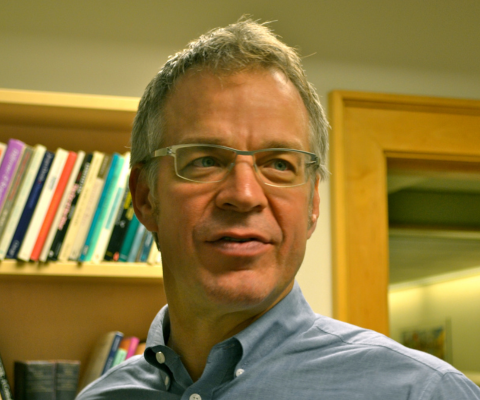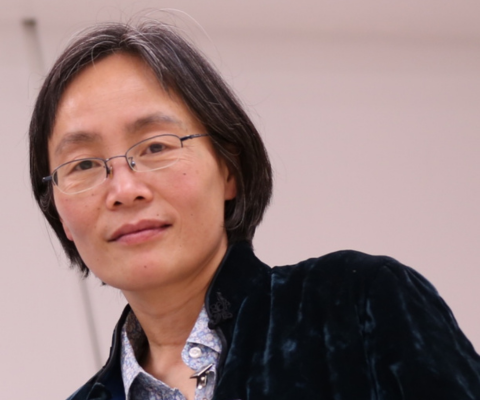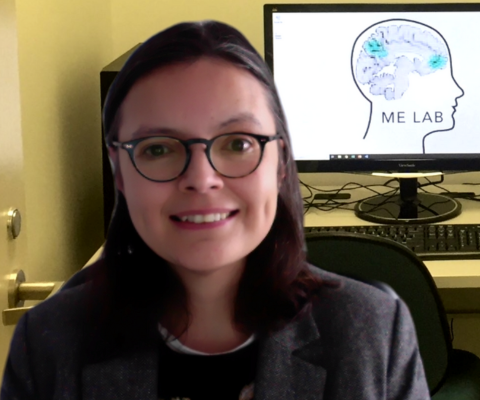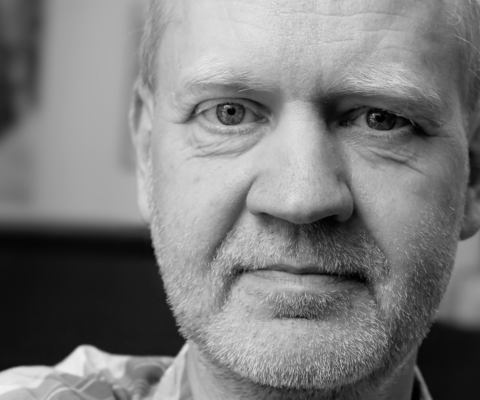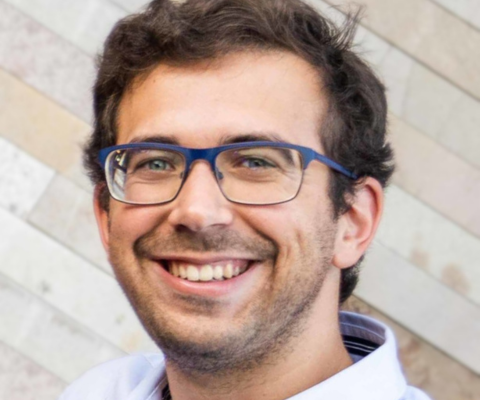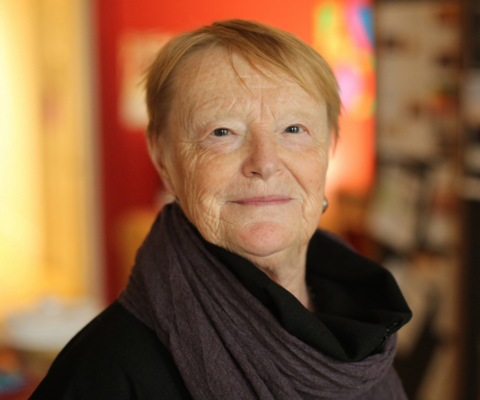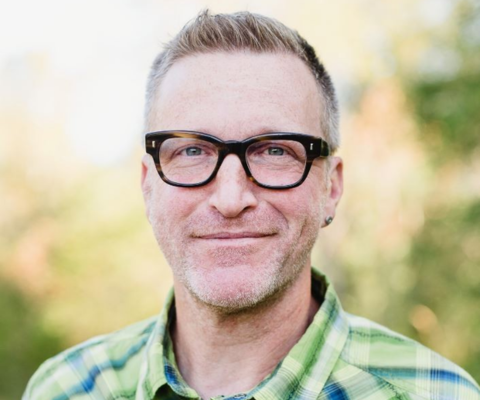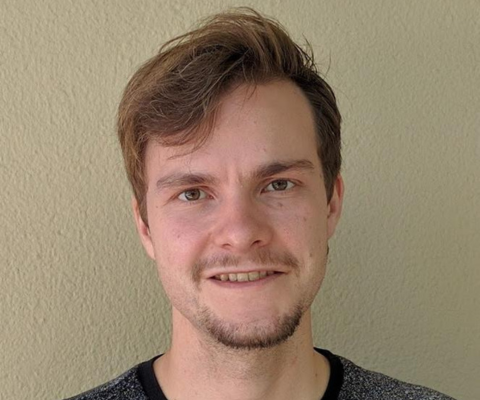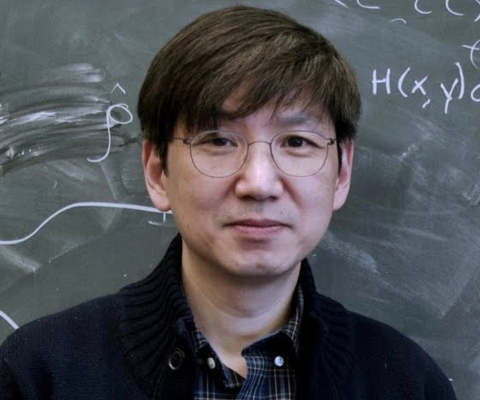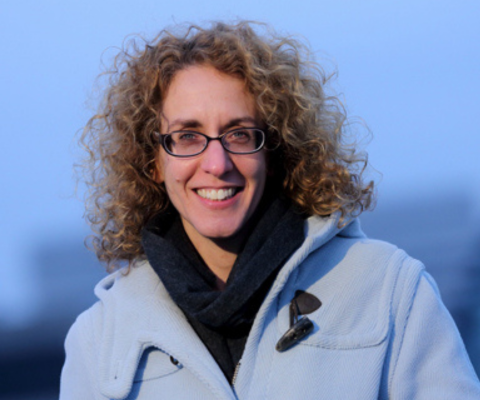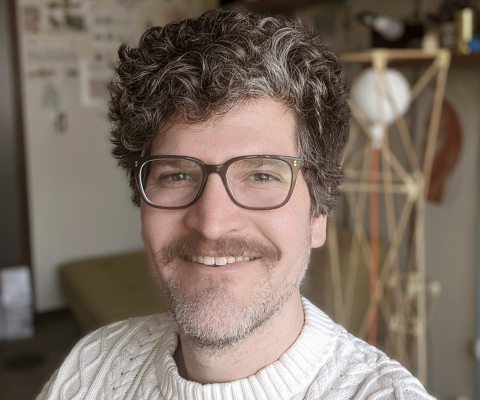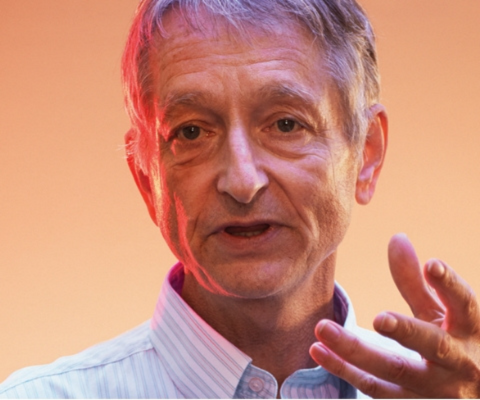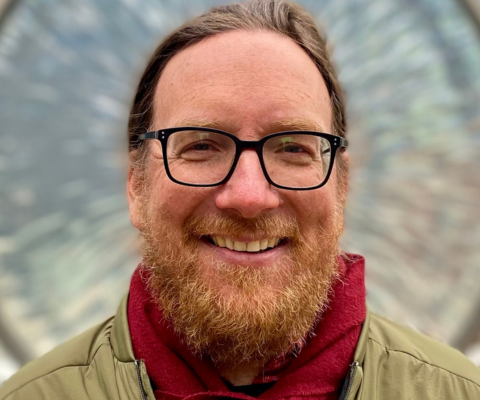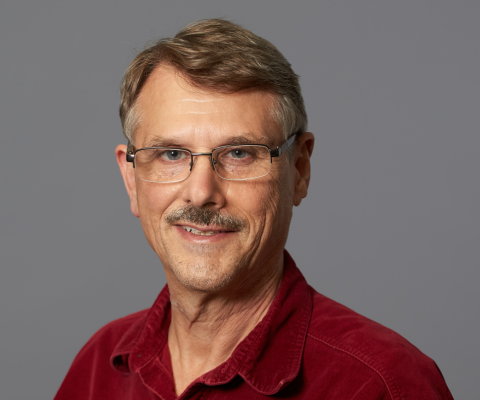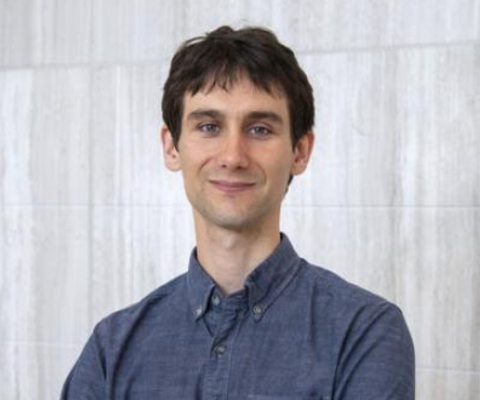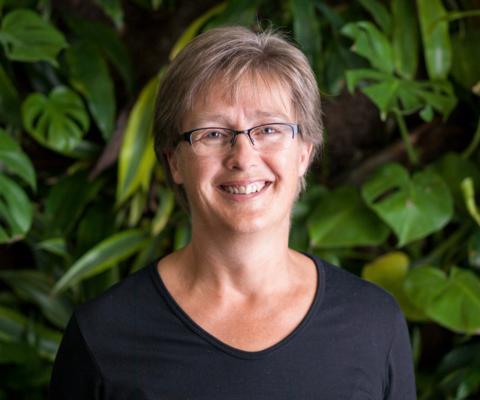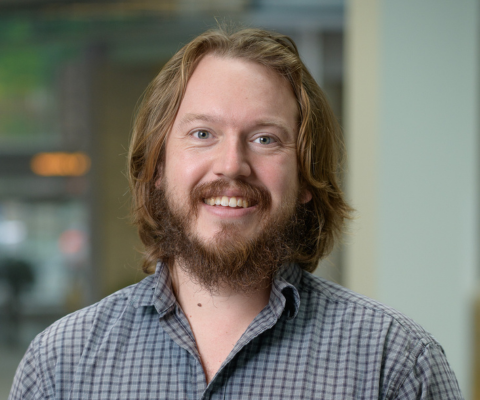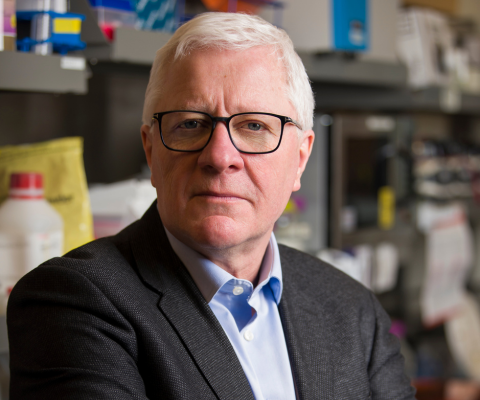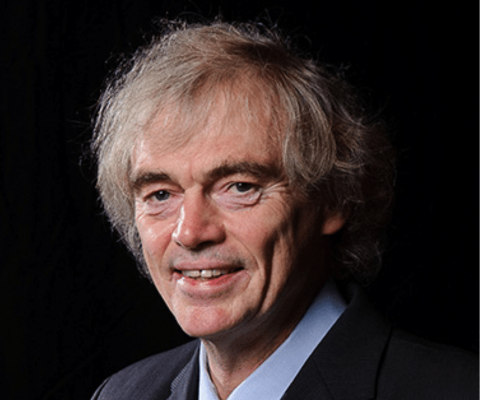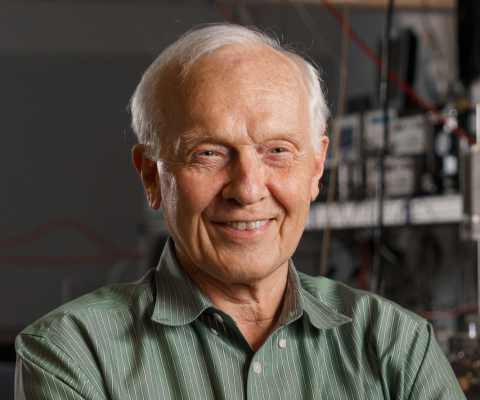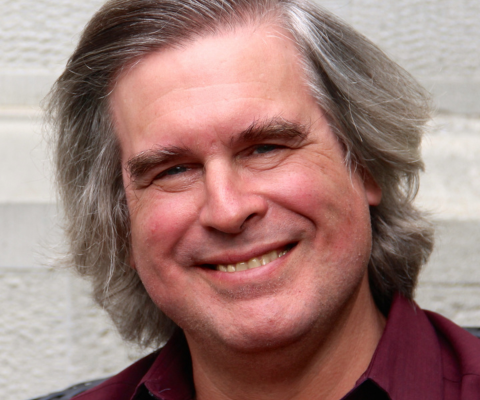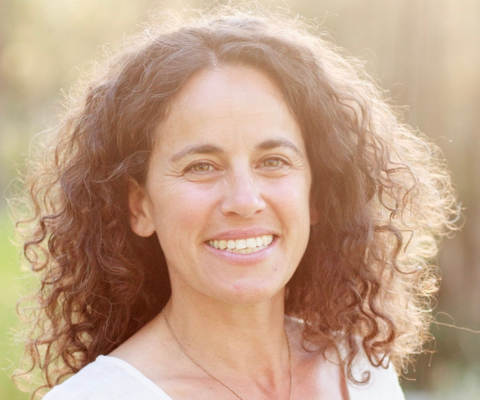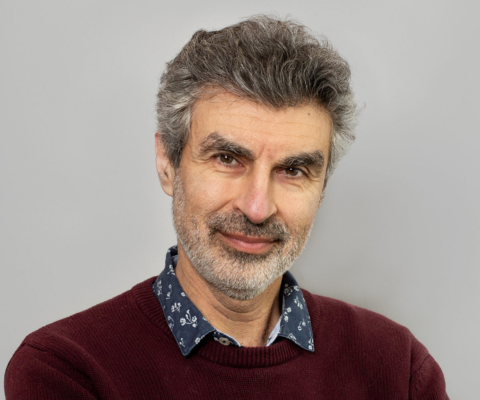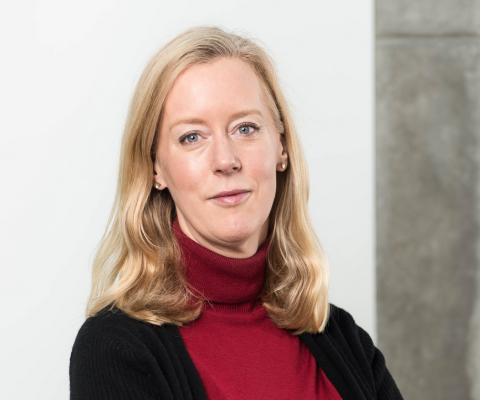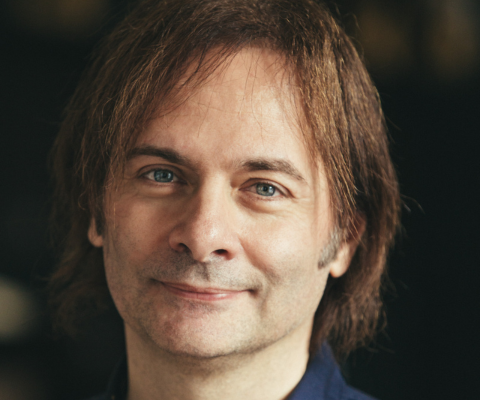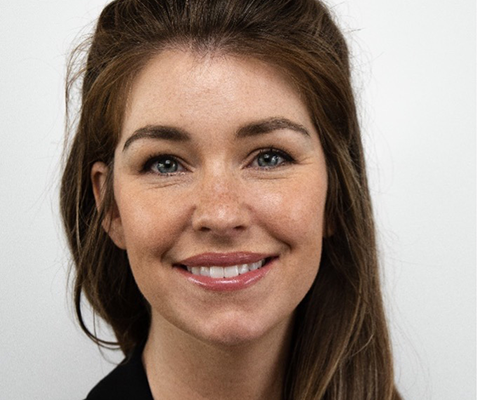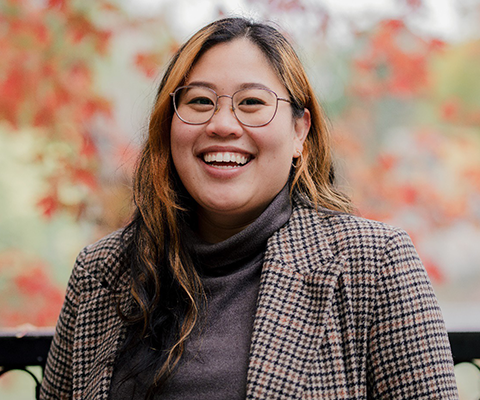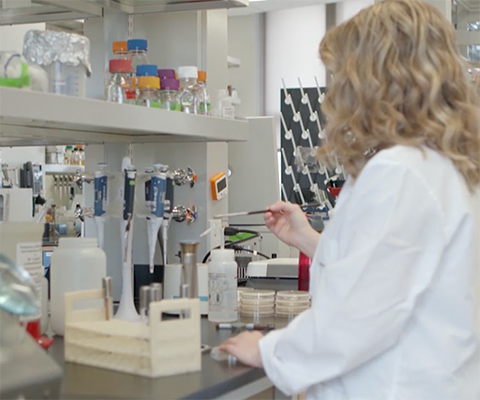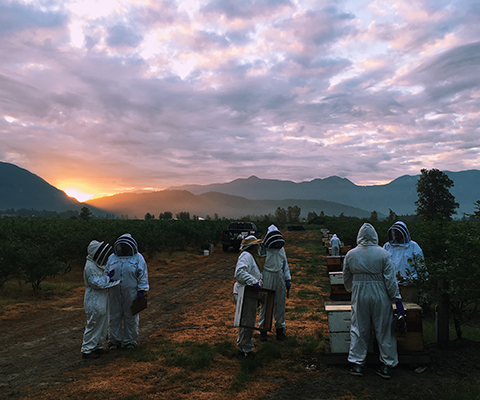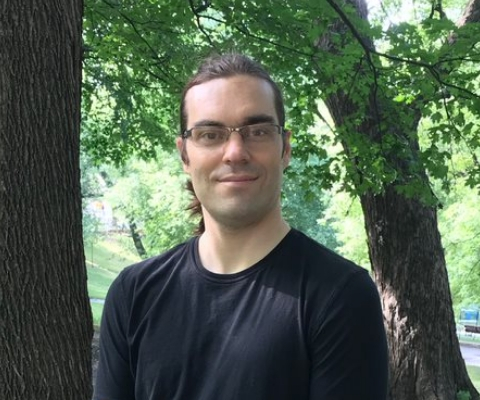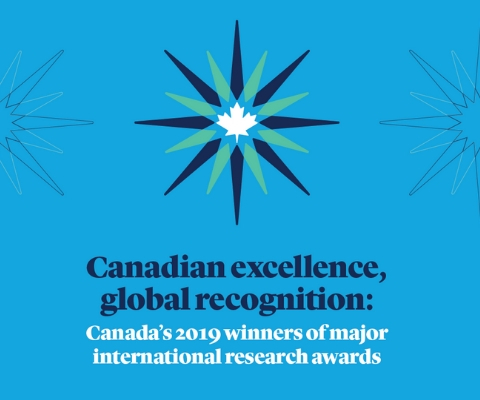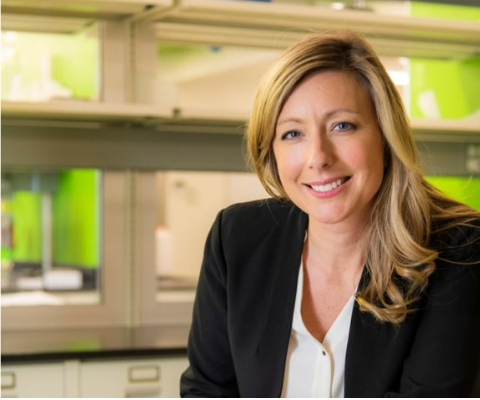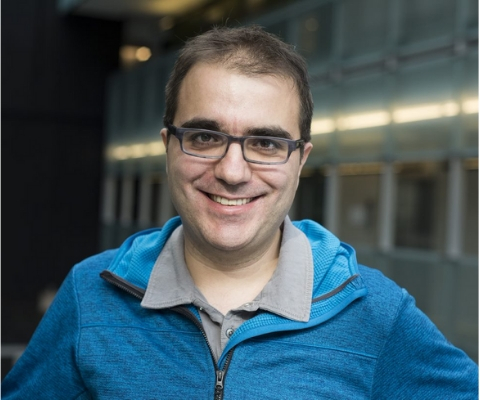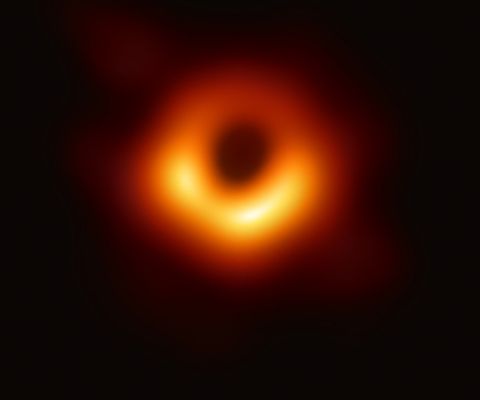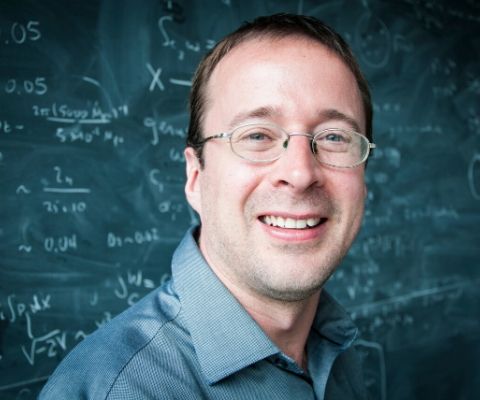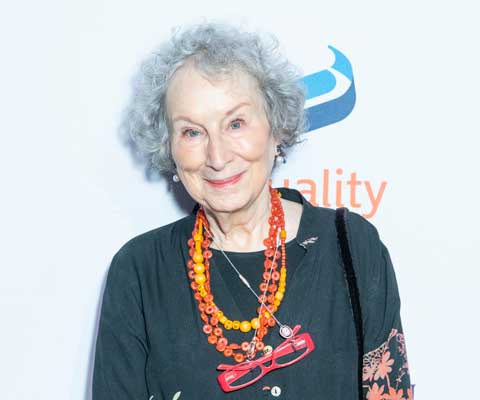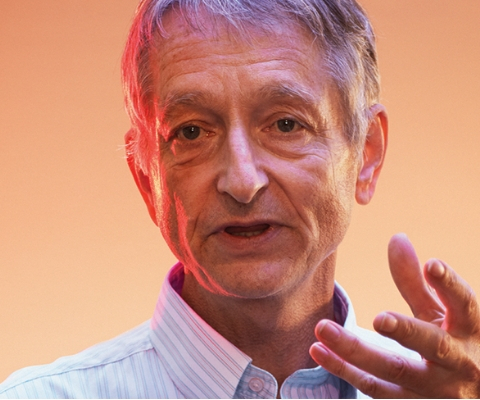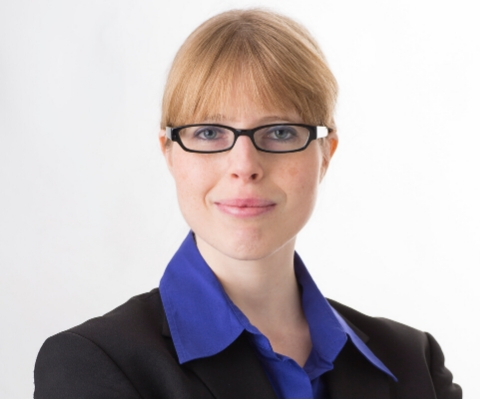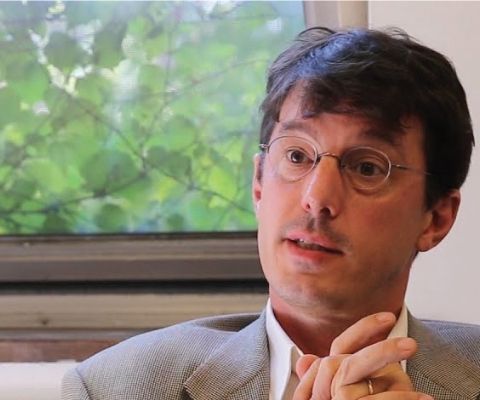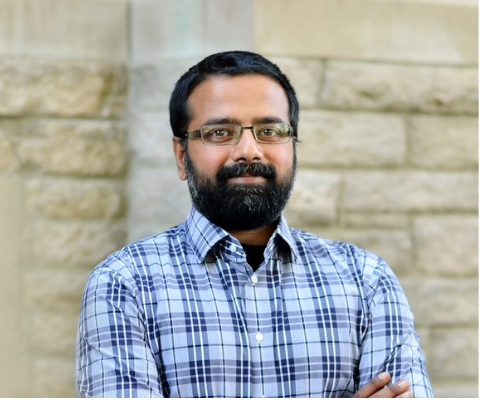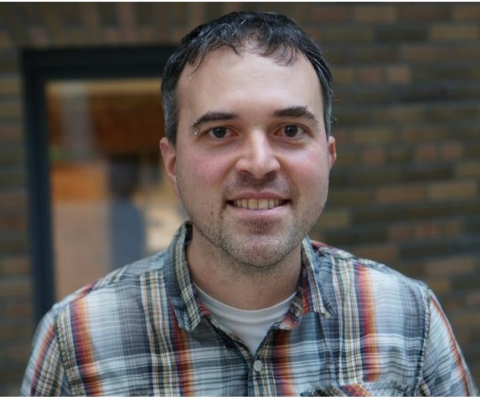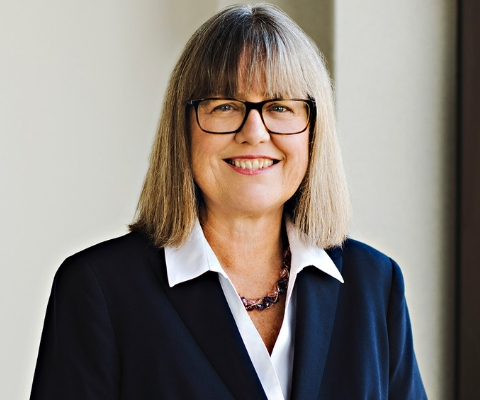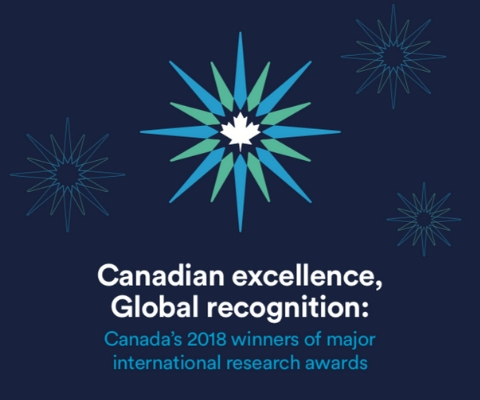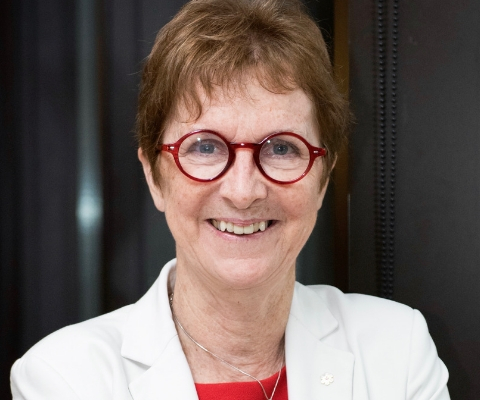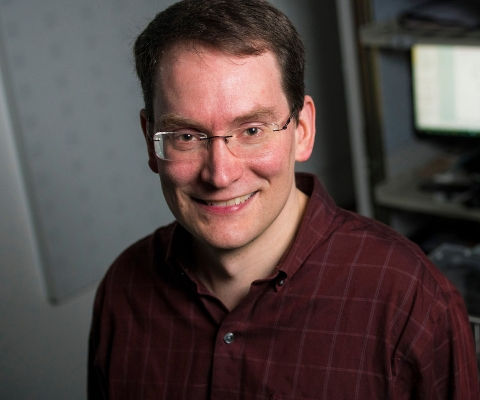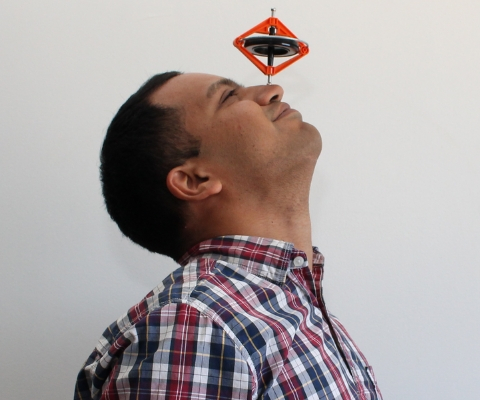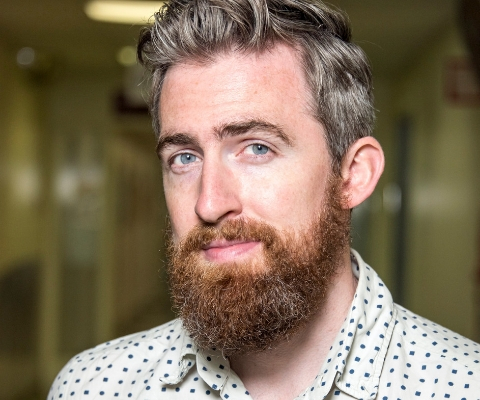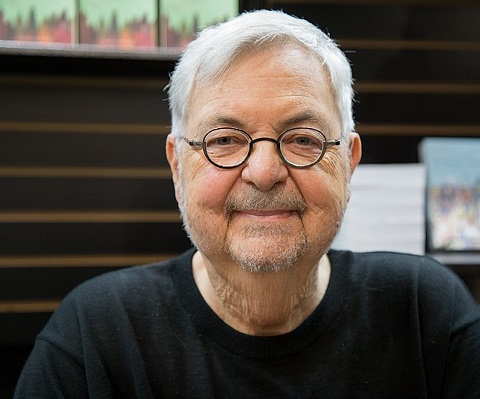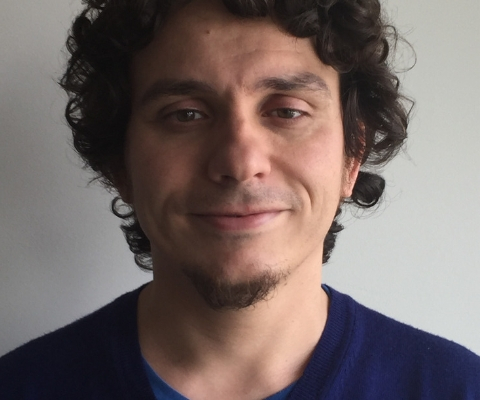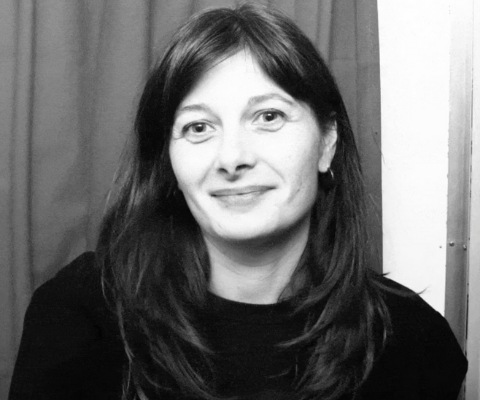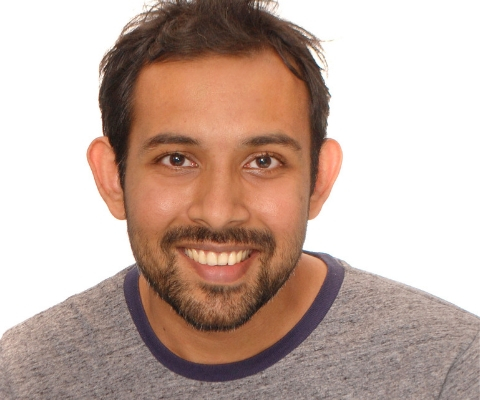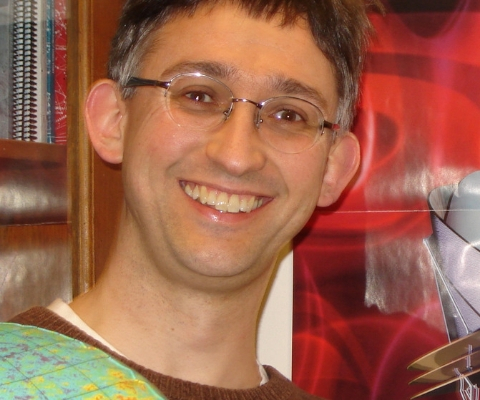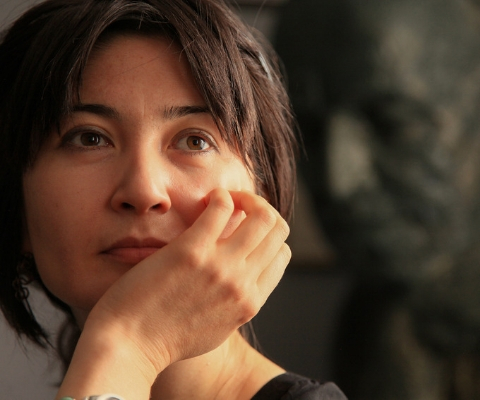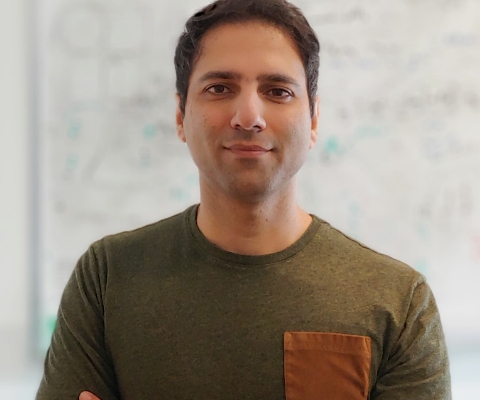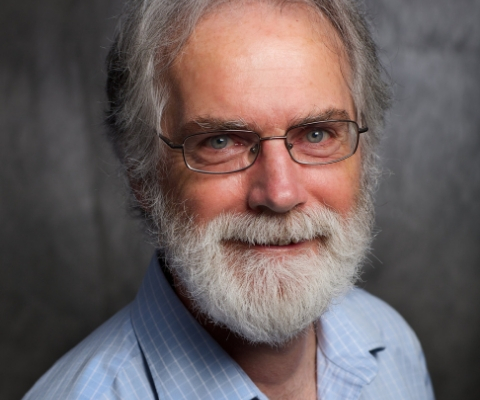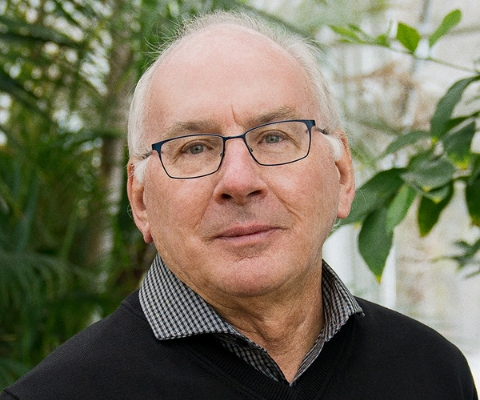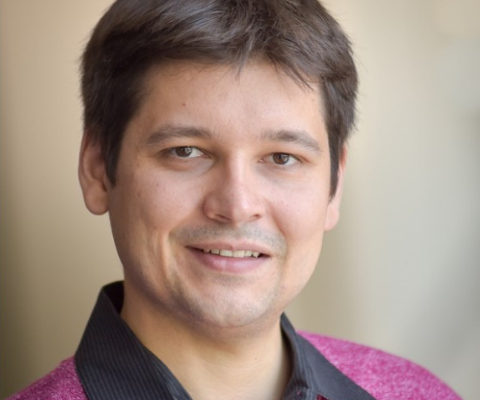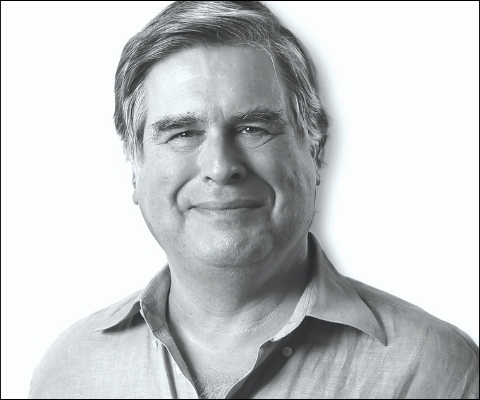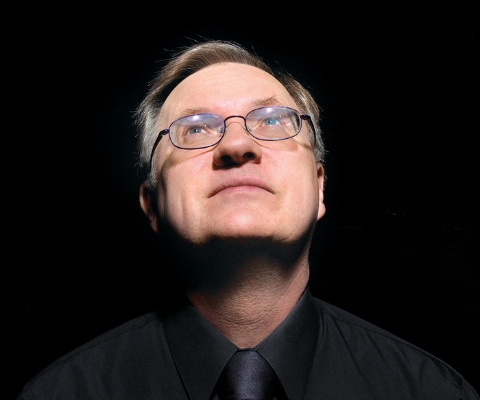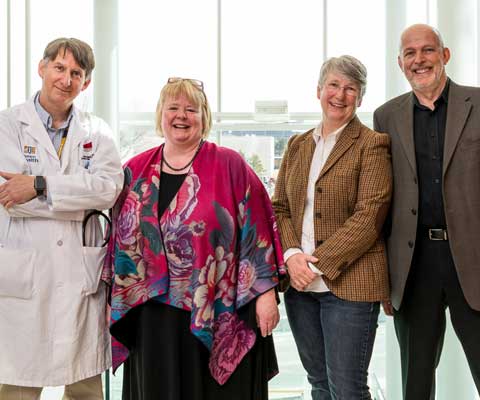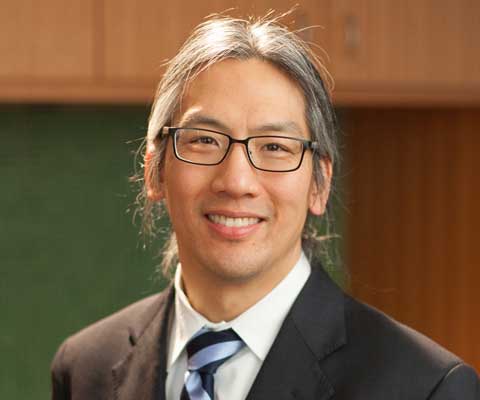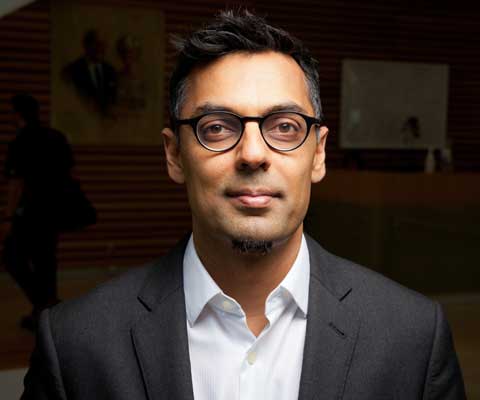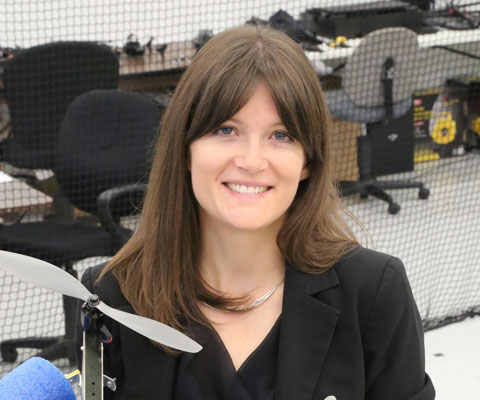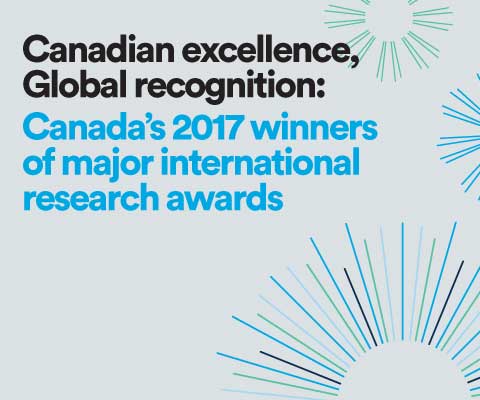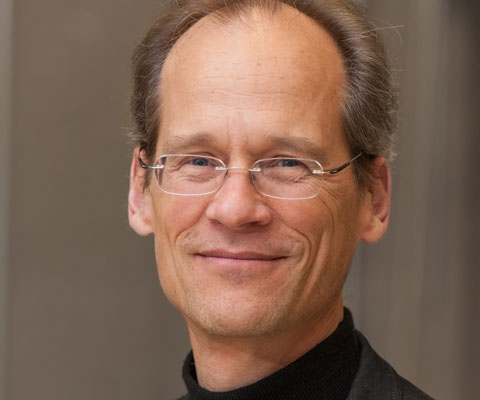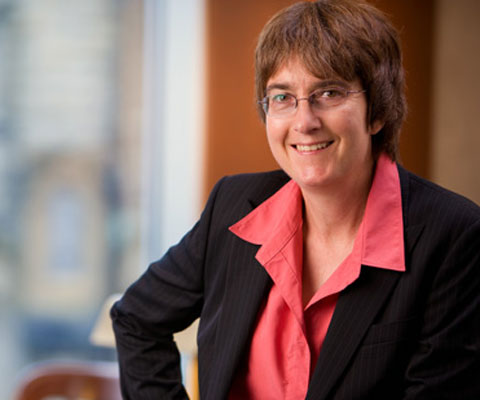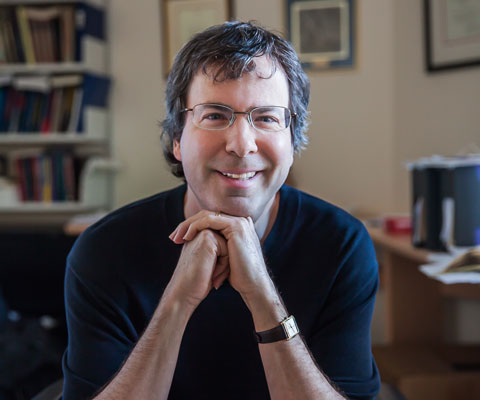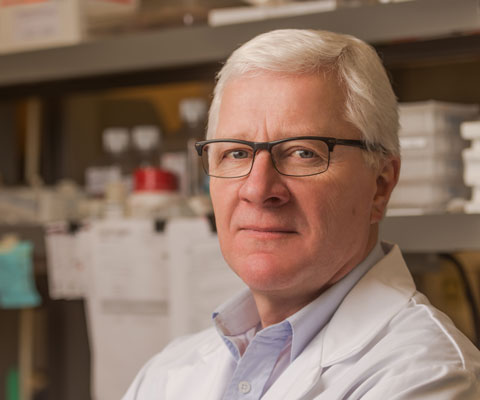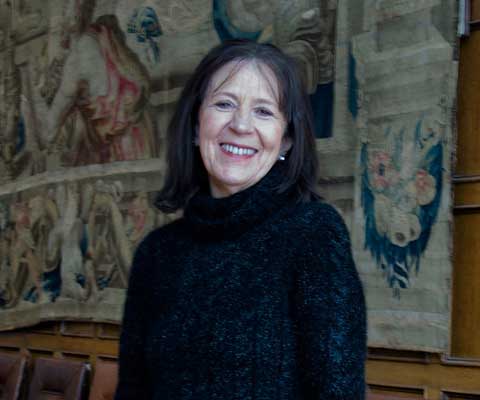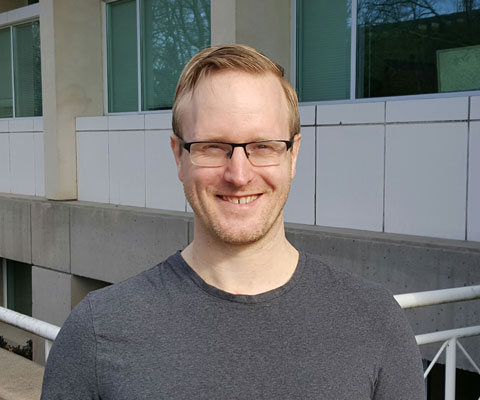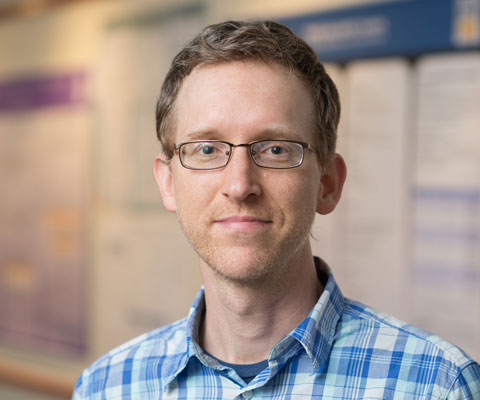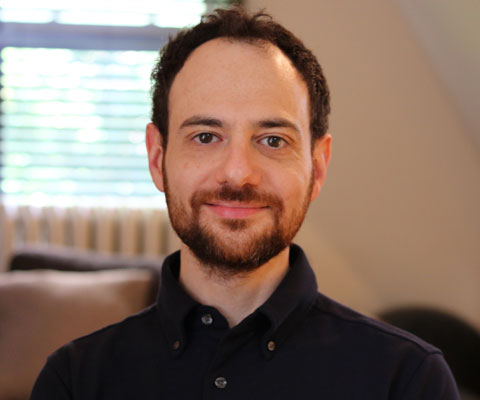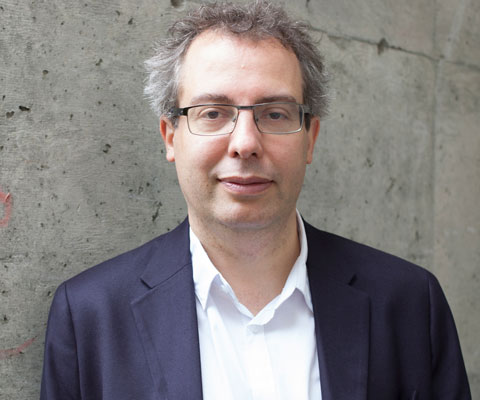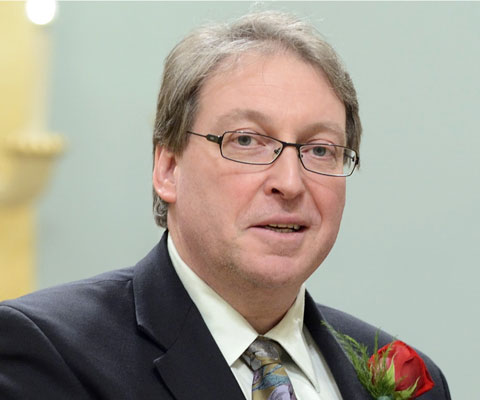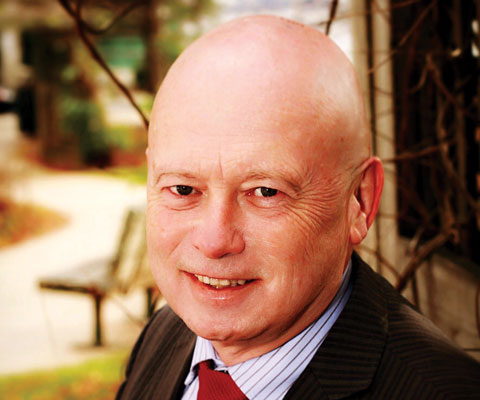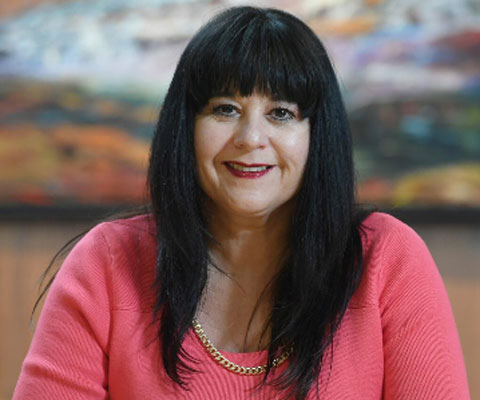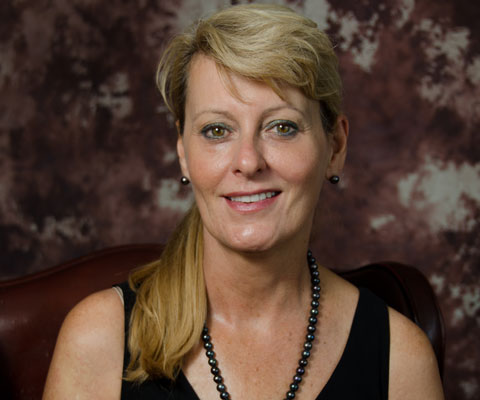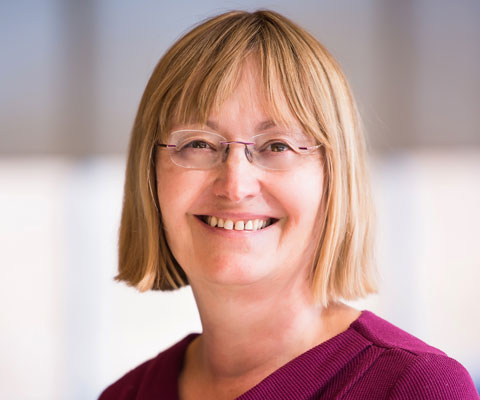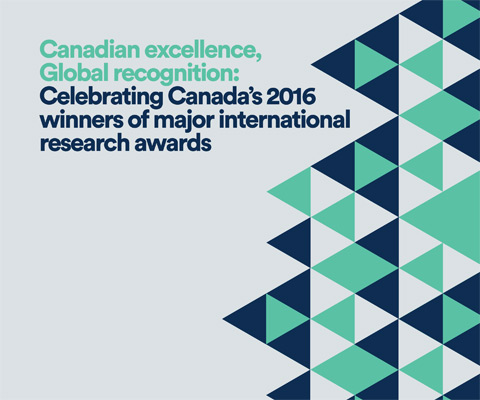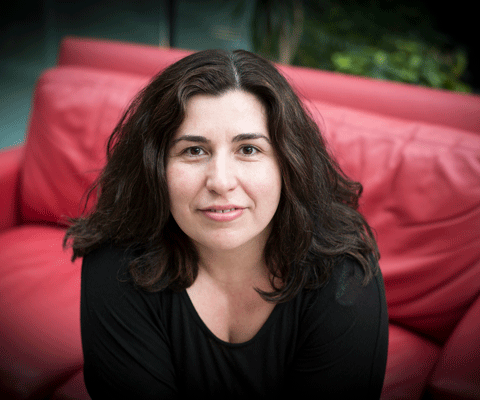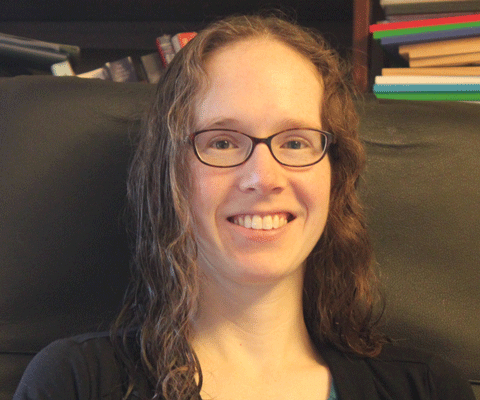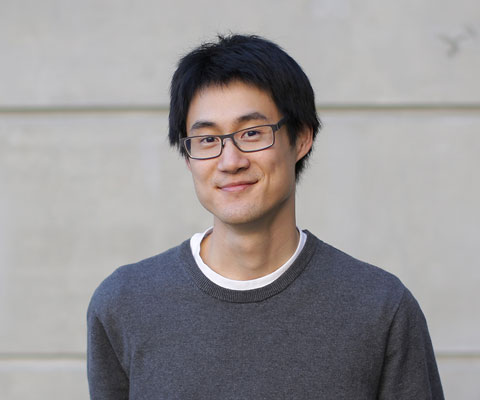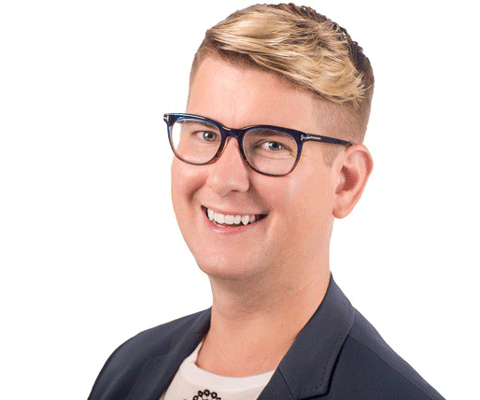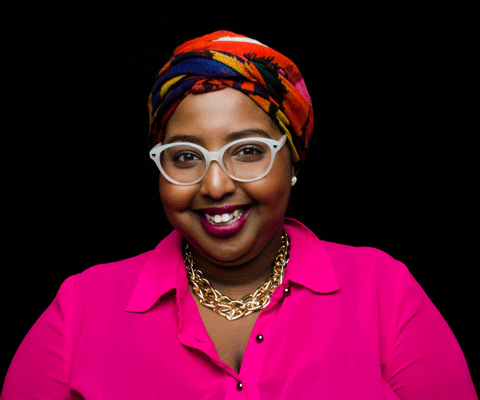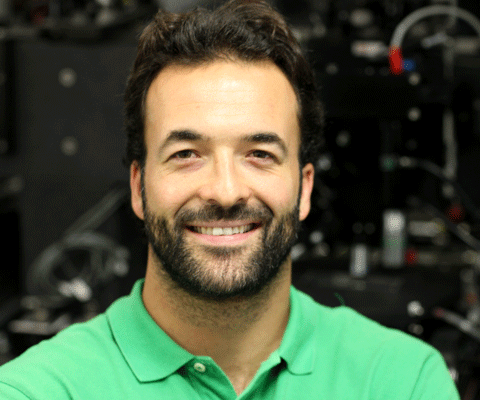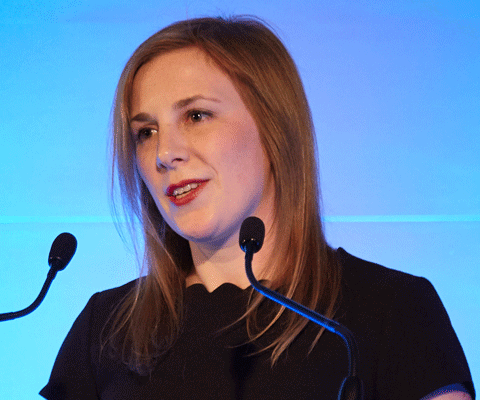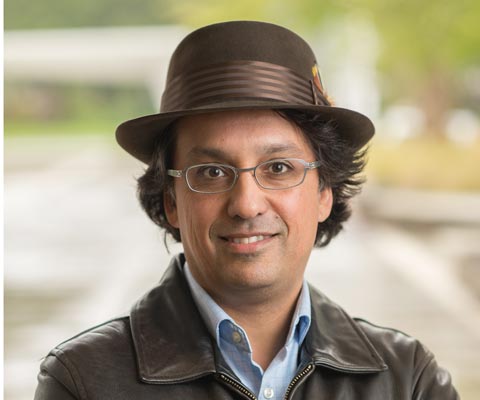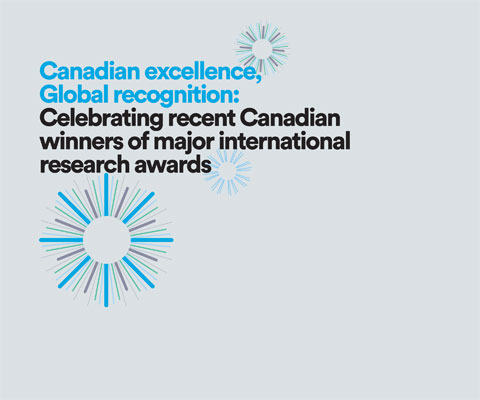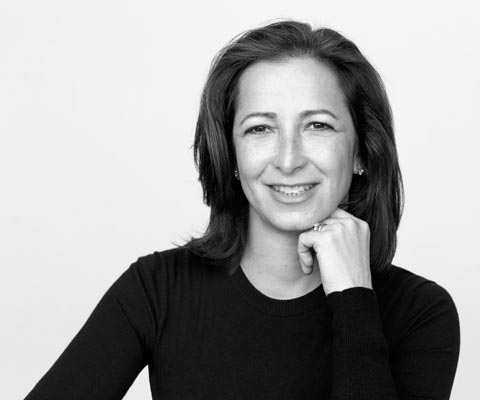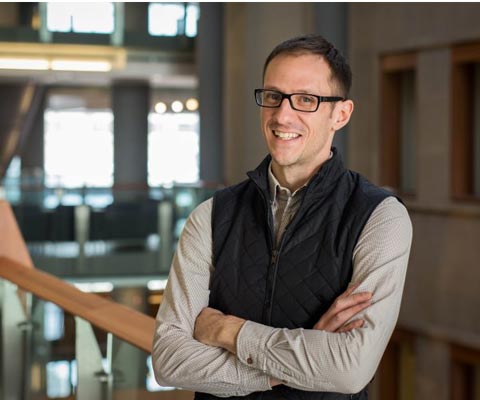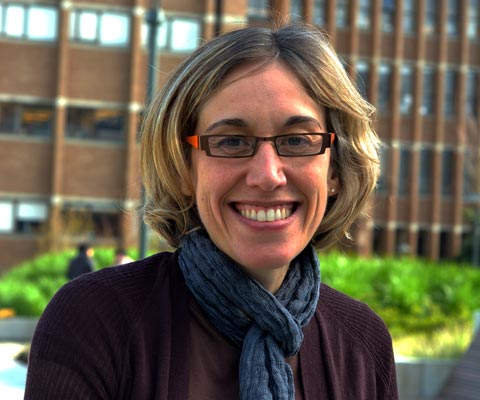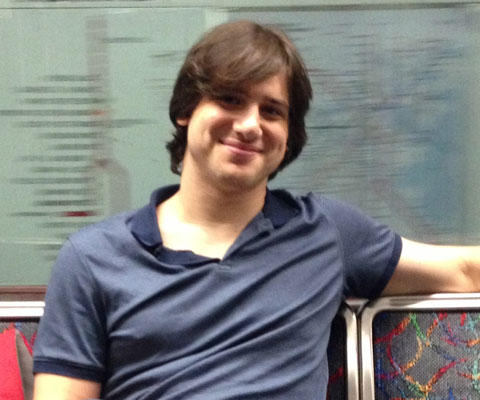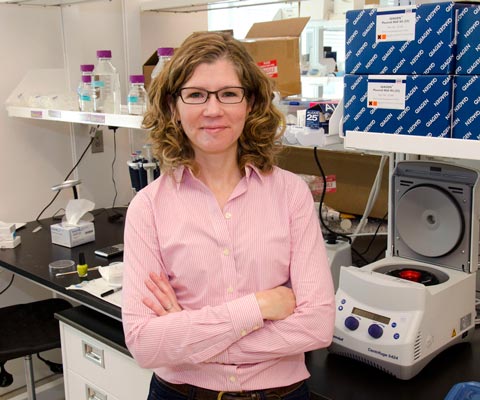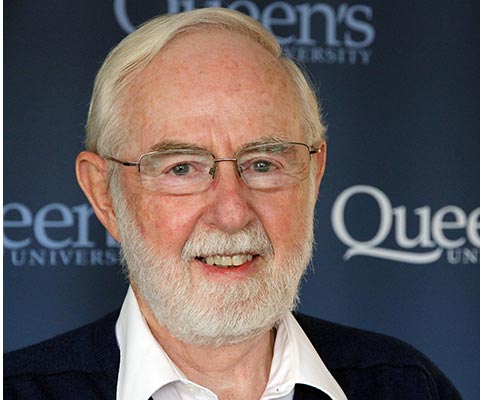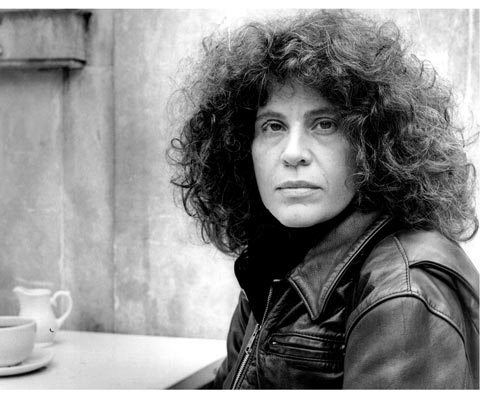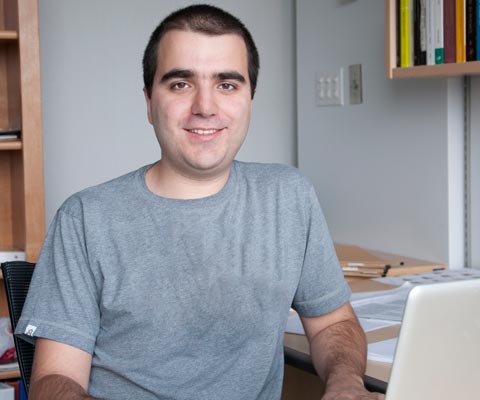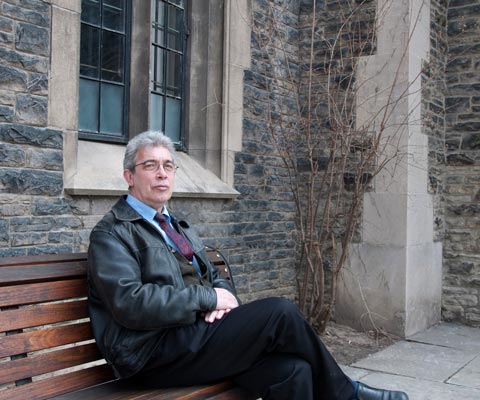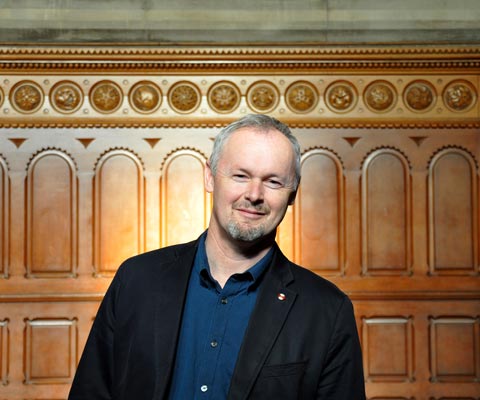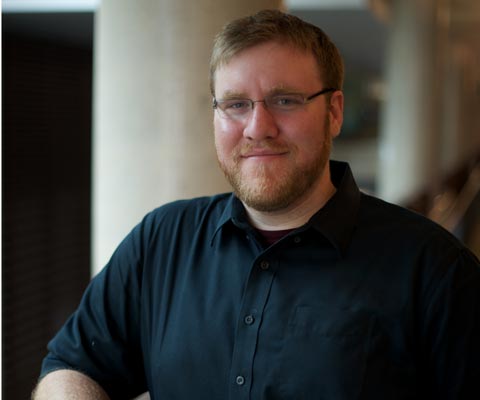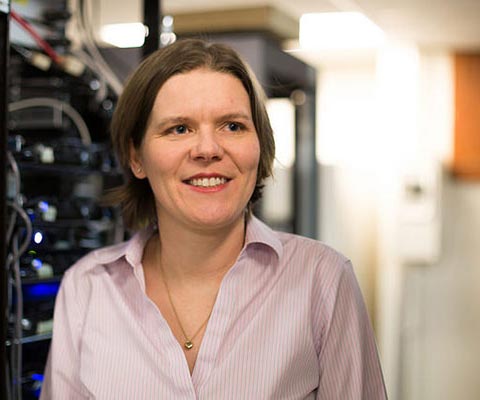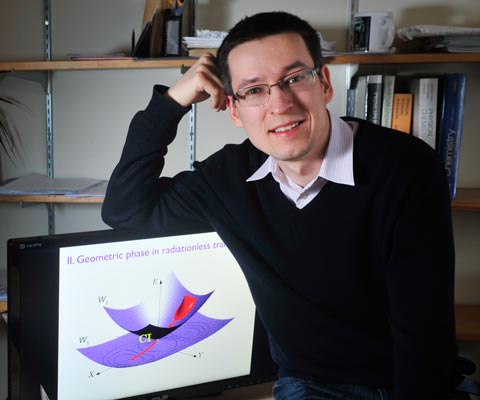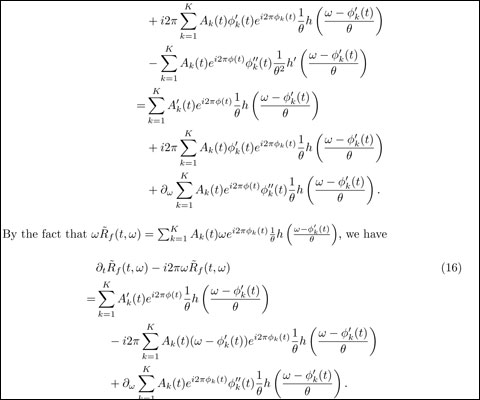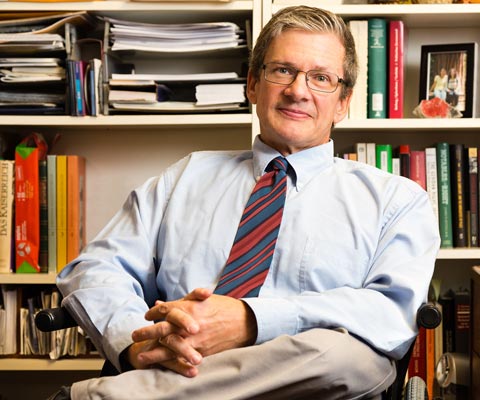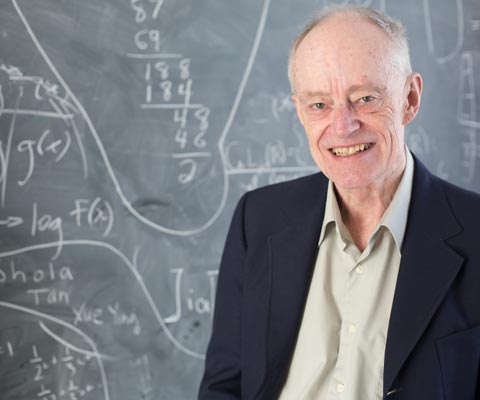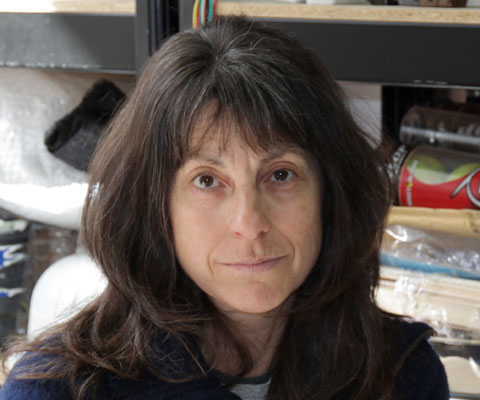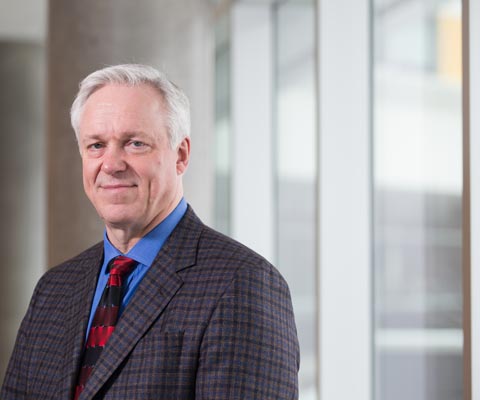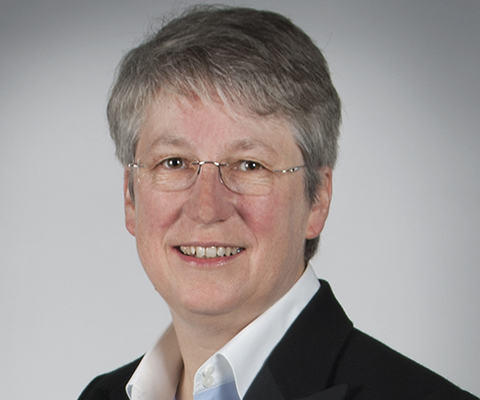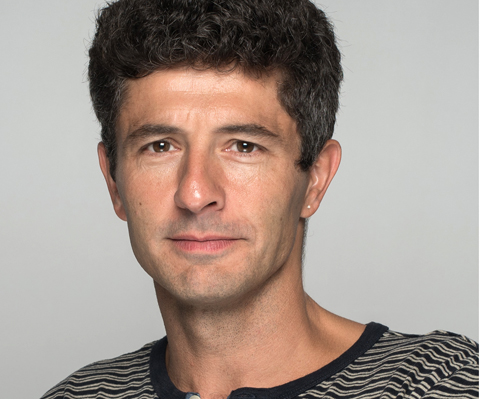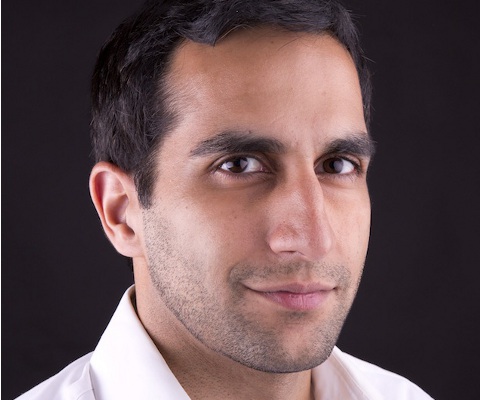John Zilcosky
From Plato to Hulk Hogan: Researcher tells the surprising tale of wrestling
There’s more to wrestling than meets the eye, and University of Toronto researcher John Zilcosky is writing a book to share the fascinating story with the world. His work on the project, Wrestling: A cultural history from Plato to Hulk Hogan, is supported by a 2022 Guggenheim Fellowship.
A professor of German and comparative literature, Dr. Zilcosky argues that wrestling – as the world’s oldest sport – was crucial to the birth of civilization.
“One of my arguments is that Plato actually saw the importance of wrestling in developing a rational society…unlike any other sport, wrestling encapsulates the violence that we do to each other.”
His book will explore why we wrestle and why wrestling was humanity’s first sport. Dr. Zilcosky will trace its history from early civilizations through the classical, Renaissance and modern eras to today’s ‘pro’ wrestling industry. He will explore wrestling’s presence in Indigenous cultures and with women practitioners.
“In this first book examining wrestling’s historical arc, I argue that its defining quality is the simultaneously staging and containing of both violence and sex: Two men embrace aggressively yet do not kill or rape the other,” he says. “We watch as people try to hurt and not hurt each other, personifying the ambivalence that made us human.”
Dr. Zilcosky grew up as a competitive wrestler and competed with Harvard as an undergraduate. He calls the research project a “labour of love” and hopes his new book will resonate with a diverse audience and catalyze new thinking about sport and civilization.
On winning the Guggenheim, he says it’s encouraging because so much of his work is done in isolation. “So to be recognized by a major foundation, like the Guggenheim, it just gives you as a researcher this sense that other people care, that your work is important. It allows me to take risks I might not normally have taken and to make my project even more ambitious, to really say things about how wrestling is connected to the dawn of civilization itself, and what it means to be human – things I might have been a little too shy to say without the encouragement of a foundation like this.”
Astronomer explores origin of planets
Winning the 2022 Guggenheim Fellowship is helping Yanqin Wu, a professor of theoretical astrophysics in the David A. Dunlap department of astronomy and astrophysics, advance her research exploring how planets form around stars.
“As astronomers, we like to understand how everything in the universe comes about and for me my main interest is in understanding how planets come about, the origin of planets,” she says.
Dr. Wu’s work focuses on protoplanetary disks – disks of gas and dust that that surround young, newly formed stars. She is currently investigating an aspect referred to as segmented disks.
Throughout her career, Dr. Wu has studied planets within and beyond our solar system. She uses data from the Kepler planet-hunting space telescope and other observing programs to examine their structure, movements and formation.
“We are basing our theories on data from the biggest telescopes and biggest observatories in the world,” she says. “For example, we used a lot of data from space missions.”
Dr. Wu says the benefits of astronomy are often overlooked or misunderstood. “First and foremost is that we are human, so we are interested in the world; we have native curiosity,” she says.
“And if we don’t pursue our curiosity, we are a rather boring species.”
Learn more about the Guggenheim Fellowship
Unlocking the mysteries of real-world memories
How exactly does the brain form memories of real-world experiences? That’s a question Peggy St. Jacques is working to answer, now with the support of a 2022 Sloan Fellowship.
“I’m looking at memories for real world events, at how the brain supports how we form these real-world episodic memories,” the University of Alberta psychology professor explains. “We know quite a lot about how the brain supports how we remember those experiences, but we can’t actually interrogate what’s happening in the brain when people are outside in the real world. However, now with developments in technology, we can actually bring the real world into the lab.”
Making that happen is the focus of Dr. St. Jacques’ Sloan Fellowship-supported research. Her team is producing 360-degree videos of real-world events in order to create immersive virtual reality environments.
“Our lab is using an MRI-compatible virtual reality headset that will present the videos in 3D and create an immersive experience… So people will have a first-person perspective on this event, as if they’re in the real world, but they’ll be in the MRI.”,” she says. “We’re looking at the neural activity in their brain, as they’re experiencing these events, and then we can assess their how they’re forming memories for those experiences.”
Impairments in real world memories are at the heart of disorders like Alzheimer’s disease, she says, “but we really don’t know how the brain is supporting the formation of those experiences. I’m hoping that the basic understanding that we might gain could inform those types of impairments and other disorders of related to real world memories such as PTSD.”
Dr. St. Jacques says she is honoured to receive “such a prestigious award” as the Sloan Fellowship. Funding from the award will support hiring personnel for the lab and MRI costs.
Swedish-Canadian composer creates new music using live electronics controlled by AI
Örjan Sandred, professor of composition at the University of Manitoba, has won a 2022 Guggenheim Fellowship in support of a project in live electronics controlled by artificial intelligence. The Swedish-Canadian composer is collaborating with the Stenhammar String Quartet on the composition.
Many of Dr. Sandred’s works reflect his search for new methods of composition, including Rule-based Computer Assisted Composition techniques, where the computer acts as the composer’s assistant. His pieces involve live electronics and sometimes live video processing. These methods use microphones and video cameras to create a counterpoint between visual and aural stimuli.
He says artificial intelligence has led him to investigate further how musical parameters such as pulse, rhythm, pitch and timbre interact to create powerful musical expressions. “Music ultimately takes place in our brain, that’s why I believe music is a great tool to deepen our understanding of the human brain. Music structures reflect how the brain works.”
Through a commission from the Manitoba Arts Council for pianist Megumi Masaki, Dr. Sandred just completed a pre-study for his Guggenheim project, where he explores how a computer can learn the style of a piano performance by using Self-Organizing-Maps, and then base its musical response on those findings.
Dr. Sandred’s music is available on the CDs Sonic Trails (2020) and Cracks and Corrosion (2009). The second edition of his book, The Musical Fundamentals of Computer Assisted Composition, is now available.
To build trust, researcher finds errors in AI
For artificial intelligence (AI) to reach its potential in benefits to society, people have to trust it. Building up that trust is the focus of Computer Scientist Nicolas Papernot’s research, now supported by a 2022 Sloan Fellowship.
“I basically study the intersection of AI or machine learning with computer security, privacy and trust in general,” the University of Toronto professor explains. “We’re trying to understand when machine learning algorithms fail, so that we can improve the trust that we humans and society in general have when deploying these machine learning algorithms, and essentially relying on their prediction.”
For example, machine learning is used to recognize our voice when we talk with virtual assistants on phones or smart speakers. “And what we found in one of our projects is that if you speak through a tube to the voice assistant, then it will recognize your voice as being the voice of another person. You can even choose the length of the tube, to induce the model in thinking you’re a specific person.
“That basically shows that the models have very different ways to recognize patterns in the data that they process than we would as humans. And so there’s this kind of semantic gap between how they make predictions and how we’re able to exploit that if we’re malicious entities.”
In another example, Dr. Papernot’s team was able to demonstrate that under certain conditions, an image classifier would recognize a stop sign as a yield sign.
His work is about understanding what needs to change about the algorithms to fix these issues. It aims to resolve security and privacy issues that undermine our trust in AI. The public’s reservations about the technology can limit applications in important areas like medicine and public services.
“When we apply machine learning, we currently have a poor understanding of when we can trust that the predictions are correct. So that’s one important reason why we are working on this, to basically have either failsafe mechanisms that we can rely on knowing that the prediction is going to be incorrect, or to ensure that we are actually making a correct prediction.”
Dr. Papernot says winning the Sloan Fellowship is “very humbling.
“It also gives me confidence that we can continue looking for problems that are higher risk in terms of the research that we’re trying to do,” he says. “Because that eventually is how we make the most progress. And so having this external validation that we’re thinking about the right problems is always helpful when we’re taking a bit more risk.”
Researcher honoured for changing lives through innovative education projects
In recognition of her longstanding commitment to education as a means of transforming the lives of youth, especially those from marginalized backgrounds, McGill University Professor Claudia Mitchell has been awarded the 2022 José Vasconcelos World Award of Education.
The award jury highlighted Dr. Mitchell’s work in tackling difficult social issues impacting girls in various countries and her success in running innovative and adaptive projects, in addition to teaching and research.
“I’m very interested in social justice issues,” says Dr. Mitchell. “So I do a lot of work around gender equity, gender-based violence and getting more girls into school, but also how do we involve boys and young men in gender equity issues.”
Her projects often involve filmmaking, primarily using cell phones to make videos. “We also do a lot of work around photovoice, photography, drawing – really looking at issues that are very difficult to put into words, but are often perhaps more powerful to try to visualize.”
Community outreach is central to Dr. Mitchell’s research. “It is very important to facilitate dialogues and work with communities.”
Much of her work takes place in Sub-Saharan Africa. “Right now we’re doing a lot of work in Sierra Leone, where there are particular critical issues around gender,” she says.
On winning the José Vasconcelos World Award of Education, Dr. Mitchell says it reinforces the value of her work. It also signals to young researchers that this kind of research, that sometimes brings about change by working with small numbers of people, is worth pursuing.
For example, she says, “there was a project in South Africa where 10 girls made cell films about forced and early marriage, and members of the community saw those cell films. The chief of the community, along with other stakeholders said, ‘we have to do something.’ And they actually went to the legislature in Pietermaritzburg, and passed a protocol about forced and early marriage in one district.
“So that kind of impact and having people see that, bringing that out as evidence of the value of this kind of work, is really important.”
Learn more about the José Vasconcelos World Award of Education
Navigating an uncertain future: SFU researcher explores how society copes with challenges
Human geographer Geoff Mann won a 2022 Guggenheim Fellowship in support of his work on the politics of climate change. A professor in Simon Fraser University’s Faculty of Environment, Dr. Mann is exploring the uncertainty that we face today, especially around climate change, and how our attempts to manage that uncertainty – politically, economically, institutionally and culturally – are changing.
“I’m really interested in what at the broadest level you might call the problem of uncertainty. We’re in this moment, especially with the problem of climate change, where the future seems less and less manageable, and the past seems a less and less helpful set of tools to address it because the future is increasingly unlike anything we’ve experienced before.”
Dr. Mann is examining the way that economists, policymakers, scientists and politicians are trying to cope with this uncertainty. He thinks that much of the “far right reactionary” sentiment is driven by a desire to stop time, to return to a place that was more comfortable for some.
“I’m interested in capitalism,” he says, “the theory of it, the history of it, the politics, the economics. And lately that has turned to the problem of the relationship between capitalism and climate change and the way that we’re trying to use economic thinking as a way to manage or produce policy to confront the problem of climate change.
“I’m pretty big critic of the role of some climate economics in that I think it’s actually functioning as a kind of a palliative,” he adds. “It’s making us feel a lot less worried than we should be and suggests to us that we have answers that are actually nowhere near powerful enough to address the problem.”
In recent years, Dr. Mann has been writing in the popular press about what he sees as standard economic approaches to everything from inequality to monetary policy and climate change. With support from the Guggenheim Fellowship, he’ll be working on a new book about society’s frustrated attempts to manage the uncertainty of the moment.
Research on the mathematics of shape recognized by Sloan Foundation
Alexander Kupers’ research on the mathematics of shape, known as topology, has garnered the University of Toronto Scarborough mathematician a Sloan Fellowship.
One of the surprises in topology, he says, is that simple shapes, such as discs and spheres, can have complicated symmetries.
“The idea is that if you understand the symmetries of some shape, you understand that shape really well,” explains Dr. Kupers. “And you can use those symmetries to help you understand all the problems that the shape is involved in.
“When you study these, especially in high dimensions, you realize that there are a lot of interesting connections to other parts of mathematics and to theoretical physics.
On winning the award, Dr. Kupers says, “It’s an honour to win a prize like that. Many excellent mathematicians have gotten Sloan Fellowships in the past.”
He plans to use funds from the Sloan Fellowship to hire more postdocs and create a more supportive research environment for PhD students on his research team.
Learn more about the Sloan Research Fellowship
Quantum materials researcher wins only Guggenheim Fellowship in physics for 2022
In recognition of his work on the novel properties of quantum materials, University of Toronto Professor Yong-Baek Kim has won a 2022 Guggenheim Fellowship. Dr. Kim, director of the university’s Centre for Quantum Materials, works in theoretical quantum condensed matter physics. This involves the study of matter and its exotic behaviour when quantum mechanical electrons are subjected to extreme conditions, such as low temperature and high pressure.
“What we are doing is basically trying to understand emergent physical properties that cannot be easily understood,” he says. “There are actually many materials where interaction between electrons is fundamentally important, and even if you understand the motion of the single electron, you cannot predict the motion of many, many electrons.”
His research has potential applications for various quantum technologies, including quantum computing. His main contributions include theory of quantum spin liquids in quantum materials with strong spin-orbit coupling and theoretical proposals for experimental detection of novel quasiparticles in topologically ordered quantum phases, which may become useful for future quantum technologies.
Dr. Kim was the only researcher to be awarded a Guggenheim Fellowship in physics for 2022.
Astrophysicist studies mysterious Fast Radio Bursts
McGill University Professor Victoria Kaspi, a world leader in the study of neutron stars, has won the 2022 Albert Einstein World Award of Science. Dr. Kaspi, director of the McGill Space Institute, has helped position Canada as a world leader in astrophysics.
The Einstein World Award is largely in recognition of Dr. Kaspi’s work on magnetars – highly magnetized, young neutron stars that suffer large x-ray and gamma-ray explosions.
“They’re very dramatic, very interesting objects,” she says. “I loved studying them and I studied them for at least 15 years.”
More recently, Dr. Kaspi’s research is focused on Fast Radio Bursts (FRB), which come from far outside our galaxy. FRBs are transient radio pulses varying in length from a fraction of a millisecond to three seconds. They are caused by an astrophysical process not yet understood. FRBs are thought to release as much energy in a millisecond as the Sun emits over three days.
Dr. Kaspi leads the CHIME Fast Radio Burst Project, which uses the CHIME telescope and has discovered more FRBs than all other radio telescopes combined.
On winning the Einstein World Award, Dr. Kaspi says it’s sometimes “uncomfortable” being singled out for recognition, since her work is such a team effort. “But the fact is that having these recognitions does bring many tangible benefits to my research program and I think, by extension, to Canada’s research profile overall.” That includes, she notes, making it easier to recruit students and postdocs to her team.
“And I think that raises the bar for everybody, bringing fantastic people into Canada who may never have come here otherwise. And then sometimes they end up settling here and developing research programs of their own. That’s a wonderful thing for the country.”
Learn more about the Albert Einstein World Award of Science
Computer scientist advances applications of geomtry processing
In recognition of his contributions in geometry processing, University of Toronto computer scientist Alec Jacobson is a 2022 winner of the Sloan Fellowship. Geometry processing is a field with applications ranging from climate simulation and biomedicine to robotics and architecture.
“It’s all about how to represent two-dimensional and three-dimensional shapes on the computer and manipulate those shapes, analyze those shapes and put them, hopefully, to some human use,” he explains.
“Geometry processing has its roots in computer graphics, where those shapes might be characters or scenery and visual effects or computer games. But we also find applications in computational fabrication or the design of physical things around us – including in health care and medical sciences, when we represent the anatomies of people’s bodies or body parts.
“The idea is to make sure that the algorithms that we create work on messy data that we collect in the wild, and we have great ways of collecting 3D geometry. Now, even just with our cell phones, we can collect 3D data. But unfortunately, that’s very noisy, and it can lead to problems with existing algorithms. So a lot of our work is in making sure that those work correctly even if the data is messy.”
On winning the Sloan Fellowship, Dr. Jacobson said it was a big surprise, because he had applied a few times in the past and didn’t win.
“It’s always a bummer to get rejected,” he says. “They had changed the rules with regards to how many years out from your PhD you could be, and I was able to apply again. So it was really fantastic to be able to win and kind of a head-spinning experience to look at the previous winners and see sort of what I need to live up to.”
He plans to use funds from the fellowship “to pay PhD students and to pay them competitively.” The financial support will also be helpful, he says, in allowing him and other members of his research team to attend conferences to disseminate their research.
Pioneer in AI seeks new kind of deep learning algorithm
Artificial intelligence pioneer Geoffrey Hinton won two major international research awards in 2022: the Royal Society’s Royal Medal and the Princess of Asturias Award for Technical & Scientific Research. The University of Toronto Professor Emeritus shares the Princess of Asturias Award with three other leaders in the field of artificial intelligence known as deep learning: Yoshua Bengio (Université de Montréal), Yann LeCun (New York University) and Demis Hassabis (DeepMind).
His groundbreaking work in deep learning – a field of artificial intelligence that mimics the way humans acquire some kinds of knowledge – has driven advances in many areas.
“I’m trying to figure out how the brain learns,” he says of his research. “And one consequence of that is that various attempts to understand how the brain might be learning turned out to be useful for engineering.
“In particular, there’s an algorithm called backpropagation. And that’s how nearly all the large neural networks are now trained.” Backpropagation started off as an idea about how the brain might acquire knowledge, he says, but now it’s not clear whether the brain actually does backpropagation.
“I suspect that the brain doesn’t do backpropagation,” he says. So I think the technology we’ve got now is working in a different way from the brain. But it’s certainly very useful for engineering. And all of these large language models and large vision models use backpropagation.”
Dr. Hinton explains that backpropagation only works if the neural network has a perfect model of itself. “I think the brain doesn’t,” he says.
“And also analog hardware wouldn’t. So if we want to learn in analog hardware, we’re going to need a different kind of algorithm.”
That answer to that problem is the focus of Dr. Hinton’s current research.
“The question is, what kind of learning algorithm can use [analog hardware]? The brain obviously has a pretty good learning algorithm, but possibly not as good as what we now have for these deep neural networks.
“So for a long time, the aim was to make artificial neural networks work as well as real ones. And I suspect that quite soon there’ll be working better than real ones.”
Dr. Hinton is also chief scientific adviser at the Vector Institute for Artificial Intelligence and a vice-president and engineering fellow at Google. He won the Turing Award, often referred to as the ‘Nobel prize of computing,’ in 2018.
Learn more about the Royal Society’s Royal Medal and the Princess of Asutrias Award
Anthropologist explores roots of global movement in Indigenous political activism
With support from a 2022 Guggenheim Fellowship, Anthropologist Michael Hathaway will be dedicating a year to advancing his research on the rise of Indigenous networks in the Pacific Rim.
Director of the David Lam Centre for Asian Studies at Simon Fraser University, Dr. Hathaway studies global environmentalism and Indigenous rights in Asia. He is currently researching a series of all-Indigenous delegations in the 1970s that travelled to China from Japan, Canada, Australia and New Zealand. The Indigenous groups returned to their home countries inspired to challenge colonial systems.
The visits were at the invitation of Chinese Communist Party (CCP) Leader Mao Zedong, explains Dr. Hathaway. “He invited a delegation from Canada, three delegations from Japan, a delegation from Australia, and one from New Zealand.” And around the world, emerging activists in Indigenous communities started reading the Little Red Book – a collection of quotes from the CCP leader that promoted the Maoist version of socialism.
“He tried to convince them that in China, the people he referred to as “ethnic minorities” actually had the best situation of anywhere in the world. Delegates visited a well-funded university where ethnic minority professors taught ethnic minority students, and read books in their own languages. There was nothing like this that existed in the delegates’ own countries. And so they were often very impressed.”
The visits started to change their perspective, says Dr. Hathaway. “Rather than thinking very locally or nationally, they started to understand themselves as global citizens.” Some groups later hosted other delegations in their home countries to advance their shared work.
Today in New Zealand, where Dr. Hathaway is spending several months researching that country’s experience with the movement, there are only a few survivors from a 1975 trip to China. Hathaway is trying to understand how the visit transformed the delegation’s political strategies, priorities and agendas.
In Japan, the delegation to China started language revitalization efforts when they returned. Around this time, in Canada, under the leadership of George Manuel, a member of the Secwepemc Nation in British Columbia, the World Council for Indigenous People was created, fostering this movement.
Dr. Hathaway’s work in New Zealand has resulted in an unexpected side benefit: access to archives about events in Canada. “It’s interesting that in New Zealand, I’ve been able to find archives by Maori about events in Canada that are not in the Canadian archives.”
Physician scientist recognized for advancing quality in research
McMaster University Professor Gordon Guyatt’s pioneering work in evidence-based medicine (EBM) has garnered him the 2022 Einstein Foundation Award for Promoting Quality in Research.
Dr. Guyatt, a physician who coined the term evidence-based medicine, is ranked as one of the world’s most-cited scientists. He published his first description of EBM in a 1991 paper. Today the term is used worldwide to describe health care based on the highest quality, current evidence available.
“In evidence-based medicine you need systematic reviews of the best evidence to guide your practice,” he explains. Dr. Guyatt has been at the forefront of developing the methods to do good systematic reviews.
“That’s another way of raising the quality of research.”
Dr. Guyatt also played a key role, along with Andrew Oxman from the Norwegian Institute of Public Health and McMaster professor Holger Schunemann, in the development of the Grading of Recommendations, Assessment, Development and Evaluations (GRADE) approach to medical research.
GRADE is a framework for developing and presenting summaries of evidence and a structure for moving from evidence to clinical practice recommendations. This approach has improved patient care by allowing health care providers to access clear and concise recommendations about the treatment of a given condition.
Dr. Guyatt’s work in improving research also includes major contributions to the quality of randomized clinical trials and measuring patients’ health status.
The GRADE approach is used by more than 110 organizations worldwide, including the World Health Organization.
Learn more about the Einstein Foundation Award for Promoting Quality Research
Pure math researchers see long game for applications
“I would compare it to philosophy in a way,” Professor Michael Groechenig says of the development of the field of algebraic geometry over centuries. “The problems we’re working on, they come from somewhere. The research community kind of arrived at those problems over the course of a long process – there’s a certain history to them. And it’s a field that has changed drastically over the past century or so.
“Applications exist,” says the University of Toronto mathematician. “But, you know, it’s a small percentage of mathematical research that leads to applications. However, when there is an application, it’s usually quite important.
“Very often when those applications are found, it’s not just decades later, but even centuries later. And so in a way, I feel like the purpose of a pure mathematician like me is also to preserve this knowledge and to make sure that we don’t forget that we can lose this skill; it’s a means of keeping the tradition alive, and to pass it on to future mathematicians, and also, possibly future engineers, or other people who might be working on applications.”
Dr. Groechenig’s research focuses on moduli spaces.
He says winning the Sloan Fellowship is special because it’s validation from fellow mathematicians, to a certain extent.
“Once in a while, it’s nice to receive a tap on the shoulder to say something’s well done. Sometimes there are big stretches of time where you receive very little feedback. Failure is part of the research; it happens constantly. And so sometimes it’s nice that certain achievements are recognized by your peers.”
Photo credit: Drew Lesiuczok
Pioneer in study of landscape fragmentation wins BBVA Frontiers of Knowledge Award
Lenore Fahrig, Professor of Biology at Carleton University, won the prestigious BBVA Frontiers of Knowledge Award in 2022 for her contributions to the field of spatial ecology. Dr. Fahrig studies the impacts of habitat fragmentation – and the loss of connectivity between remnant patches – on biodiversity.
She shares the BBVA Award, worth 400,000 EUR, with two other ecologists, Simon Levin and Steward Pickett, for incorporating the spatial dimension into ecosystem research.
Dr. Fahrig’s research on landscape fragmentation addresses practical questions: Is it better to create one large, protected area or many smaller ones? Should we create ‘ecological corridors’ between protected areas? How does the layout of roads impact ecosystems?
She “has developed theory-driven and data-proven ways for effectively reducing the effects of habitat loss by means of connectivity conservation,” says the awards committee. “Her work recognizes the critical role that road networks and small conservation areas play in altering the distribution and abundance of species.”
Dr. Fahrig’s work shows that small patches of protected land have value. This conclusion stems from her research on the impact of landscape structure on abundance, distribution and persistence of organisms. Since landscape structure is strongly affected by human activities such as forestry, agriculture and development, the results of her research are relevant to land-use decisions.
“There is a lot of intuitive thought about larger species or those endangered doing better in a larger block, such as species that do better in the interior of a forest,” she says. “This seems to make sense because if you have 10 small blocks you have more of the edge and less of the interior area of the forest that those species need. Some people think that means there would be more species in a bigger block than many small ones.
“This is a problem because if we assume that small parcels of habitat have low value for biodiversity, we can end up with thousands of small patches that have no protection, even though they host a great deal of biodiversity,” she says. “If they are destroyed the loss to biodiversity is huge.
Dr. Fahrig initiated new sub-fields including connectivity conservation. Hundreds of organizations around the world have used her research to refine their conservation policies and practices.
In 2021, Dr. Fahrig won the Guggenheim Fellowship.
Learn more about the BBVA Foundation Frontiers of Knowledge Award
Computer scientist pursues generative models in deep learning
David Duvenaud, assistant professor in computer science at the University of Toronto, has been awarded a 2022 Sloan Research Fellowship in support of his research in deep learning.
He says the goal of his research is to build generative models, as opposed to simply decision-making classifiers or predictors, because generative models can, in principle, answer any question about the domain, in addition to classification or predicting.
“For example, in a medical setting, we could build a classifier that predicts the probability of a disease given all the data we’ve seen about the patient,” says Dr. Duvenaud. “But if we instead built a generative model, we could ask for the joint probability of more than one disease at a time or ask to see what representative data for patients with the disease looks like. This helps us check the quality of the model, and also lets us make more sophisticated decisions.
He says a generative model also usually makes it easier to incorporate many kinds of data.
Dr. Duvenaud plans to use funds from the Sloan Fellowship, which is an unrestricted research gift, to support his group’s development of “deep, natively continuous-time models.”
“The standard approach to handling data that comes through time, such as medical records, has been to divide time into discrete bins, and somehow average all the data together within a bin,” he says. “This is usually pretty fast and simple. But it unfortunately requires that we somehow squash the data into a pre-specified format before the model can even look at it. Instead, we’re building models that can directly ingest data in a much rawer format. This requires a bit more thought into the model setup, and making them generative also requires an extra step, called ‘approximate inference.’ But I’d argue that we were previously pushing much of that complexity onto the users of these methods by forcing them to do their own pre-processing. In a sense, we’re trying to automate more of the scientific modeling pipeline.”
On winning the Sloan Fellowship, Dr. Duvenaud says he had “made my peace two years ago with never getting it, since I had aged out of eligibility. But they changed the rules last year to allow anyone pre-tenure to apply. Mainly I am thankful to my letter-writers, who I felt bad about asking for time-consuming favours.”
He says these kinds of awards are useful for “giving non-insiders a rough idea of who is seen as productive and impactful in a field.”
Researcher changed how we understand and fight cancer
John Dick, a world-renowned pioneer in cancer stem cell biology, has won the 2022 Canada Gairdner International Award. His groundbreaking work on leukemic stem cells has transformed our understanding, diagnosis and treatment of acute myeloid leukemia.
“Basically, our research is about trying to figure out what makes a stem cell a stem cell, and how does it go bad,” says the University of Toronto professor.
For more than three decades, Dr. Dick’s work has revolutionized the understanding of normal and leukemic hematopoiesis. A senior scientist and Canada Research Chair in stem cell biology at the Princess Margaret Cancer Centre in Toronto, his discoveries have changed views on the origin and nature of cancer and enabled new approaches to cancer therapy.
Dr. Dick made the first discovery of leukemia stem cells (LSC) in an acute myeloid leukemia patient. This finding established that cancer cells in a patient are not all equal; rather there is a hierarchy and only certain rare leukemia cells possess self-renewal, the key property of stem cells.
His discovery showed that “there’s only about one in a million cells that actually has the ability to regenerate leukemia when you transplant it in a mouse,” he explains. “And so that led to this whole idea that leukemia is just a caricature of normal development. You have one blood stem cell that can regenerate a large amount of blood; it’s a powerful cell. And it turns out leukemia works in a similar kind of way; there are rare leukemia stem cells that actually keep the cancer going.
“And when we began to study this in more detail, we realized that like normal stem cells these leukemia stem cells are also dormant or slowly replicating. This allows them to evade standard chemotherapy; they were the reason that leukemias look like they go away, but then they eventually come back from the surviving leukemia stem cells.”
Discovering that not every cancer cell is equal was, “a turning point for how we understand cancer, and how we study cancer.” It led to the exploration of cancer stem cells (CSCs) in other human cancers, such as breast, brain, colon, pancreas, skin and liver cancers.
Dr. Dick’s work highlights the need to ensure that CSCs are eradicated when therapy is delivered and the need for new therapies that target CSC vulnerabilities.
While he has spent all of his career in a research lab, Dr. Dick says the location of his lab when worked at SickKids in Toronto earlier in his career brought the meaning of his work into clear focus. His route through the building brought him past the hematology oncology ward.
“And you would see these kids, some of them were pretty sick, they don’t have any hair, they’re carrying the IV poles around. You would see the impact of cancer; it really focuses your mind. Every day, you walk through that, and you realize what you’re doing here is not just an abstraction, it’s not just solving a puzzle, it actually is about having an impact in the clinic.
“As we recognized that our work was having more impact, there becomes an imperative – we knew we had to keep going on this, because it was so important. That gives you a sense of urgency as well, because we need to do better. Too many people are still failing their cancer treatments, and we need to improve that.”
Biochemist’s work in lipid nanoparticles has the world knocking at the door
Over the course of his career, Pieter Cullis has received a number of international awards for his pioneering work that contributed to the highly effective COVID-19 mRNA vaccines, but his most recent, the 2022 Gairdner International Award, holds special meaning.
“It’s a Canadian award,” says the University of British Columbia biochemist and physicist. “So from that point of view, it feels really good because it’s recognition in your own country.”
Dr. Cullis shares the Gairdner International Award with Dr. Katalin Karikó, senior vice president of RNA Protein Replacement Therapies at BioNTech SE and an adjunct professor at the University of Pennsylvania, and Dr. Drew Weissman, director of the Penn Institute for RNA Innovation at the University of Pennsylvania. The three developed nucleoside-modified mRNA and lipid nanoparticle (LNP) drug delivery – the foundational technologies for the mRNA vaccines.
Drs. Karikó and Weissman discovered how to engineer mRNA, while Dr. Cullis developed the packaging system to effectively introduce the mRNA into the body.
For delivery of mRNA, the LNPs are designed to form a protective bubble and enable delivery to the interior of target cells.
Dr. Cullis has worked in lipid chemistry and the formation of LNPs over the past 40 years. New developments in his research aligned perfectly with the need for a COVID-19 vaccine, something he describes as “being in the right place at the right time.”
His work with LNPs also holds promise for cancer treatments, with the potential to develop highly personalized, relatively non-toxic kinds of treatments.
Currently, Dr. Cullis divides his time between UBC and pursuing commercial applications for LNPs and mRNA technology. Through Vancouver-based Acuitas, a start-up he co-founded in 2009, and NanoVation Therapeutics, a start-up he co-founded in 2019, Dr. Cullis and colleagues partner with pharmaceutical and biotechnology companies, academic institutions and thought leaders from around the world to advance and commercialize mRNA therapeutics for a wide variety of diseases.
“Opportunities are coming out of it now because we have developed a well validated process to introduce nucleic-acid-based drugs into target cells in vivo,” he says of the mRNA and LNP technologies. “The world is really coming to us to develop the many new therapeutics this makes possible because we have this technology in place.”
The fastest measurements in the world: UofO researcher earns Wolf Prize for ground-breaking contributions to attosecond physics
Dr. Paul Corkum – a distinguished professor at the University of Ottawa, principal research officer at the NRC and co-director of the NRC-uOttawa Joint Centre for Extreme Photonics – is co-recipient of the prestigious Wolf Prize in Physics for 2022. He shares the prize with European physicists Ferenc Krausz and Anne l’Huillier.
Dr. Corkum is a pioneer in the development of a type of physics called attosecond science, which lasts one billionth of a billionth of a second.
“We’ve learned how to make the fastest measurements in the world; the fastest measurements that humans can make by a factor of 100 over what it was before,” he explains the work recognized by the Wolf Prize. “In the process, we found a way to force lasers to make soft x-rays, where you would not use lasers before – you would have used something more complicated before.”
“The third thing is we found that when you radiate materials with light, there is an extreme response that you can understand.”
“It’s really all about waves,” he says in offering an analogy to explain the research. “Think about going to the Bay of Fundy or the ocean,” says the native of Saint John, N.B., “and looking at the waves coming in. There might be seaweed on a rock, and you would see the wave pick the seaweed up and then return it with a crash onto the rock from which it left. So we’re going to do almost exactly the same thing with an atom. The wave, which is a light, is a wave of force on an electron – just like water is a wave of force on the seaweed moving it up and down. When laser light hits an atom, the electron is pulled free of the atom and it moves just like the seaweed would do before crashing into the atom from which it left, just like the seaweed crashes into a rock from which it left. If it gets caught, it gives out a flash of light. That would be like the bang of the seaweed against the rock.
“That flash of light is the very short pulses that I’m talking about,” he explains of the fundamental research. “So this is about high intensity light interacting with materials that can be atoms (we started with atoms) or it can be molecules; and we now know it can be transparent solids; and maybe even metals. We’re starting to look at metals.”
The son of a fisherman and tugboat captain, Dr. Corkum spent much of his youth around boats, sailing with his father and working on various types of engines. He says he owes his career to his high school physics teacher, Anthony Kennett.
“He told us that if you read an equation, it has to work out dimensionally. You have to think about what dimensions were involved in one side of the equation and what dimensions were involved in the other side of the equation; if it didn’t work out dimensionally; it wasn’t a good equation.”
“I thought, ‘This is really neat.’ And so, as we went through physics, I saw this as such a logical field that I liked very much.”
Computer scientist wins world’s largest science prize for work in quantum information
Université de Montréal Professor Gilles Brassard, a global leader in quantum cryptography, has been awarded the prestigious Breakthrough Prize in Fundamental Physics – the world’s largest science award.
The computer scientist shares the three million USD Breakthrough Prize for 2023 with co-winners and colleagues, Charles H. Bennett (IBM Research), David Deutsch (University of Oxford) and Peter Shor (Massachusetts Institute of Technology) “for foundational work in the field of quantum information”.
In 1984, Prof. Brassard and Dr. Bennett, a chemical physicist, developed the first quantum cryptography protocol – an unbreakable encryption scheme – as a way to protect data communications.
The significance of their work became clear a decade later when Dr. Shor, a mathematician, discovered that a hypothetical quantum computer could penetrate the cryptographic systems currently used to protect Internet communications.
Data communications systems didn’t collapse following Dr. Shor’s discovery, because a quantum computer had not yet been built (as far as we know). But technology has rapidly advanced, Prof. Brassard notes, and a quantum computer will eventually arise. It’s no longer a question of if, but of when.
When that finally happens, quantum cryptography will be the only guaranteed way to protect online communications, including our financial information systems. Essentially, Prof. Brassard and Dr. Bennett had developed a cure 10 years before the ailment was discovered.
Today, “quantum cryptography is on the rise”, he says of the current impact of the discovery. “It’s more and more widely studied and implemented and used, even using real life now. Nobody would have predicted this 10 years ago.”
In 1992, Prof. Brassard and Dr. Bennett, along with their collaborators, including fellow Canadian Claude Crépeau, invented the theoretical concept of quantum teleportation. This phenomenon, confirmed experimentally by other researchers a few years later, is a fundamental pillar of quantum information theory.
Prof. Brassard was a mathematical prodigy, beginning a bachelor’s in computer science at the age of 13. His numerous past awards include the Wolf Prize in Physics, considered second only to the Nobel Prize, and the BBVA Foundation Frontiers of Knowledge Award in basic sciences.
Learn more about the Breakthrough Prize in Fundamental Physics
More to a farm than meets the eye: McGill research explores multifunctional agricutlure
Elena Bennett, Canadian Research Chair in Sustainability at McGill University, investigates multifunctional agriculture in Canada. She’s driven by a desire to protect the iconic, but often overlooked working landscapes that provide biodiversity, places for recreation, flood control – even a connection to history and sense of place.
Dr. Bennett wants to know where the most multifunctional landscapes are in Canada and how they got that way. In 2022, her research garnered her a Guggenheim Fellowship.
“What I mean by multifunctional is agriculture that meets multiple needs or provides multiple benefits, which often sort of gets left behind when we think about agricultural landscapes,” she explains. “These are places that provide food, but they’re also beautiful to look at. And they store carbon to regulate climate change and retain nutrients in soil and are habitat for lots of different species, and can do all these other things. So one of the things that I’m doing is trying to investigate the magic about those multifunctional landscapes that allows them to do so many different things.”
The Guggenheim Fellowship will allow her to work on a book on the topic, while advancing her research. “The book may go a little bit more into the role of people as a force for good in the environment. We get a lot of this, ‘people are bad,’ at least in the environmental movement, a lot of thinking that the way to protect the environment is to block off some area and keep people out. But what I see when I look at some of these magic multifunctional working landscapes is not that there’s no people there, but that there’s a healthy relationship between people and environment.”
Dr. Bennett is co-chair of the international Programme on Ecosystem Change and Society and Founding Director of NSERC ResNet, a pan-Canadian network to improve management of working landscapes for the provision of multiple ecosystem services.
On winning the Guggenheim, she says it is “this great validation that what you’ve done is important, and what you’re proposing to do, at least by someone, is seen as being meaningful.”
Learn more about the Guggenheim Fellowship
‘Godfather’ of deep learning working to address gap in AI
“I’m as passionate as ever,” says Yoshua Bengio when asked what’s on the horizon for his research. “If we look at the current state of the art in AI, there is still, in my opinion, a big gap.” The unanswered questions, he says, centre on the mysteries of humans’ conscious thinking.
“It’s a gap that I and others think will not be filled by simply doing more engineering and having larger models, doing more computation and so on; there are some principles missing,” says the Université de Montréal professor.
“So this is driving my research. The hypothesis that we are exploring is that it has to do with high-level functioning. It’s about the things that you do consciously, things that you can verbalize.”
Dr. Bengio is the 2022 winner of the prestigious Princess of Asturias Award for Technical and Scientific Research, along with colleagues Geoff Hinton (University of Toronto), Yann LeCun (New York University) and Demis Hassabis (DeepMind) – regarded as the godfathers of deep learning.
He is founder and scientific director of Mila, the Quebec AI institute, a community of more than 1,000 researchers specializing in machine learning, and the world’s largest academic research centre for deep learning. Dr. Bengio also co-directs the CIFAR Learning in Machines & Brains program and is Scientific Director of IVADO, an AI research and transfer institute.
Deep learning uses neural networks for voice recognition, computer vision and language processing. It beat world champions at the most intellectual games and achieved a breakthrough in biology by learning how to predict protein structure from their sequence. Deep learning aims to mimic the functioning of the human brain, using algorithms to convert the biological process of learning into mathematical formulae that computers can implement. The goal is for a machine to learn from its own experience.
Dr. Bengio says that current deep learning is really good at doing things that humans do unconsciously, without having to think about them. But when it comes to the conscious thinking guiding our actions, there’s a kind of computation going on in our brains that scientists don’t yet fully understand.
“We have a lot of information, a lot of clues about the brain that have inspired deep learning, but in order to maybe propel the next generation of AI systems we should also incorporate these other attributes of human intelligence, of higher-level cognition, that currently, I think, are missing.”
His pioneering work in deep learning also earned Dr. Bengio the 2018 Turing Award, regarded as ‘the Nobel Prize of Computing,’ along with Dr. Hinton and Dr. LeCun.
Dr. Bengio says Canada’s growth and impact in AI has been impressive. “In terms of the growth of our AI ecosystem, and in terms of our scientific production, it’s been amazing. In the last few years, we’ve attracted some of the best researchers in AI from across the world.” The country’s position as a global leader in AI has been boosted in recent years by significant government investments in the field, he notes.
“Here in Montreal, we have a huge critical mass of these people – especially in deep learning, which is the part of AI that has been so successful and that industry is so excited about and investing in and deploying across many sectors of society.
Photo credit: Camille Gladu-Drouin
UBC researcher applies digital tools to pressing environmental problems
Karen Bakker, professor of geography at the University of British Columbia, leads the Smart Earth Project – an effort to map how the tools of the digital age are being used to solve pressing environmental challenges such as climate change and biodiversity loss.
It’s transformational research at the intersection of digital transformation and environmental governance; work that garnered Dr. Bakker the 2022 Guggenheim Fellowship, and was featured in her recent book: The Sounds of Life: How Digital Technology is Bringing Us Closer to the Worlds of Animals and Plants.
It’s also highly interdisciplinary research. “I’m trained in both the natural and social sciences and I integrate these various perspectives in the different projects that I do,” she says.
There are applied components of her research – which usually focuses on water issues, including water security governance – and more overarching work, “where I take a step back and look trends across many different fields of academic inquiry, from research to innovation.”
A digital revolution in environmental governance is underway, she says, which includes a transition from scarcity of data to the hyper-abundance of data, and new tools such as AI algorithms. These advances enable more real-time environmental monitoring, which means conservationists can more effectively detect, limit and even prevent environmental harm.
“For example, scientists have used digital bioacoustics to provide real-time location information for highly endangered North Atlantic right whales; this information is used to create mobile Marine Protected Areas in which ship’s captains have to slow down or avoid whale zones altogether. This reduces ship strikes, which were previously a significant cause of whale injury and mortality.”
“Another example is using satellites to detect methane plumes in real time. So we now know where the top methane emitters are in the world at any given time. And if there’s political will, we could even make the polluter pay in real time for so-called ‘fugitive emissions’ that were previously not tracked.”
But new tools, she notes, also come with risks. “Any technology can be used as a tool or a weapon. The same technologies I’m talking about could be used for precision hunting. So it’s very important that we create governance frameworks that constrain these risks, yet allow these technologies to be used for biodiversity protection and climate change mitigation.”
On winning the Guggenheim, Dr. Bakker says there’s something special about the award. “Academic work can sometimes take years to germinate,” she says. “And what the Guggenheim often does is highlight work that is just about to flower, to use a biological metaphor. And so I think the Guggenheim is also recognizing these long gestation projects that take a while to come to fruition but are truly trying to say something new and make both a scholarly contribution and a contribution to the public good or public knowledge. That, I think, is the lovely mix they have.”
Biomechanical engineer aims to build better aortic grafts
Marco Amabili, Canada Research Chair in Vibrations and Fluid-Structure Interaction in McGill University’s Department of Mechanical Engineering, is on a mission to develop devices to replace the outdated aortic grafts used today.
In 2022, he received a Guggenheim Fellowship in support of his work around the human aorta and aortic grafts – the prostheses used to replace a path of the aorta when there is a disease.
“What is used right now, honestly, is a bit old, dated. It was probably developed by people who were more interested in biocompatibility and some other aspects, but they completely forgot that mechanics plays a very important role in the human body. The graft presently used has many problems from the mechanical point of view.”
Dr. Amabili thinks it’s time for a new generation of these devices, especially since some people need them to survive. “And the quality of life is largely dependent on the quality of these devices,” he says. “So when we talk about improving one of those grafts, it means, for the future user, a huge benefit.”
The grafts currently used allow patients to survive, he notes, but they require follow up operations every 10 to 15 years. “And that’s already not fun, because it’s a big operation. So if you do something that does not require additional operations with time, or has no side effects, that would be a huge benefit for them.”
The scale of the challenge attracted Dr. Amabili to this area of research. “One of the reasons I started to get interested in this area, it was because it’s very challenging, very complicated.”
In addition to improving quality of life for patients, this work has significant economic potential. “Clearly, this type of operation requires huge resources in money and healthcare. And so imagine that instead of operating on a person once for life, you have to do it every 15 years, and you start when they’re 50 or 40. And also, if the quality of life becomes better, then the person is more active. So also, from the economic point of view, there are a lot of advantages.” Those economic benefits could include developing these improved devices in Canada.
Reflecting on wining the Guggenheim, Dr. Amabili says such awards are significant because they bring visibility to the researcher and the research. “That’s clearly important because then other resources can arrive easier, better graduate students can join your team – everything can be more successful.
A gut feeling: Researcher delving into how gut inflammation impacts mental health
You may not have ever really thought about how your gut and your brain are connected, but if you’ve ever felt nauseous when facing a stressful situation, or been irritable when ill, you’ve experienced the effects of that complex link.
Dr. Chelsea Matisz understands the relationship better than most; the Postdoctoral Scholar at the Canadian Centre for Behavioural Neurosciences at the University of Lethbridge is studying how what happens in our gut affects what happens in our brain. In other words, how gut health affects mental health.
“When we have food poisoning or react badly to something we eat, it’s not only our gut that gets inflamed — the inflammation is mirrored in our brains, which affects our moods. We feel lethargic, irritable, and unable to enjoy the hobbies or activities that usually bring us pleasure,” says Matisz.
This is an important part of the healing process that pushes us to slow down, rest and recuperate.
“But when you have chronic gut inflammation (caused by Inflammatory Bowel Diseases, such Crohn’s disease and colitis), you also have chronic inflammation in your brain, and that can actually change the brain structure and function. So instead of having these sickness behaviours which go away once your body has dealt with the gut infection, you actually have chronic changes in your brain, and that can manifest as depression and anxiety.”
It’s not surprising, therefore, that people with IBD are more likely to have anxiety and depression than the general population. And while there currently is no cure for IBD, Dr. Matisz is studying whether vitamin D, cannabinoids or psilocybin (magic mushrooms) could be used as an effective treatment for mental health in people with IBD.
Canada has one of the highest rates of IBD in the world, and Dr. Matisz’s research has the potential to help hundreds of thousands of Canadians.
It has also earned her one of this year’s L’Oréal Canada For Women in Science Research Excellence Fellowships which support major postdoctoral research projects undertaken by young Canadians at a pivotal time in their career. Winning this prestigious award gets Dr. Matisz one step closer to her dream of running her own research lab.
“Getting this award means so much,” says Dr. Matisz. “Science is a field that attracts a lot of high-performing people, so you’re always wondering if you’re doing enough, if you’re learning enough, if you’re contributing enough. When you’re recognized for the efforts that you do, it makes you feel like you belong in the field, that you’re doing something right.”
Celebrating the accomplishments of women scientists is crucial in a field where men still hold most leadership positions, she adds.
“Having these awards that show what women in science are doing and how successful they are, is extremely important for the next generation of female scientists.”
Distant planets provide clues to understanding the solar system
Université de Montréal postdoctoral research fellow, Lisa Dang, is one of this year’s winners of the L’Oréal Canada For Women in Science Research Excellence Fellowships. This fellowship will support her continued studies of hot exoplanets—in other words, planets outside our solar system.
Dang’s work involves observing distant planets through powerful space telescopes, which enable her to generate heat maps of the planets and decipher their climates, including wind speeds and seasons.
Her primary focus is on scorching hot planets, known as hot Jupiters and lava worlds. She explains that by studying these hot worlds, we can start figuring out the composition of these planets, which offer clues into its history, including how it was formed. This knowledge can help us better understand our own planet and how it came to be.
“Ultimately, I’m trying to understand the perfect recipe to creating a planetary system like our solar system, and maybe an Earth-like planet where you can host life,” says Dang.
Dang was born to Vietnamese refugee parents in Montreal and is the first in her family to get a high school degree, let alone complete a PhD. She admits that her unconventional background made it difficult for her to fit in at times within the scientific community.
“I’m incredibly honoured to be receiving this prize that recognizes the accomplishments of women in science and also reinforces my commitment to making it easier for other underrepresented people to engage with science,” she says.
Dang has big plans to continue her research. Excitingly, she has been named the Principal Investigator of a program with the James Webb Space Telescope to observe lava planets. She is hopeful that her work will uncover how planets form and evolve, and where Earth fits within the bigger picture.
Battle against bacteria leads to national award
Dr. Marie-Laurence Lemay was honoured with the L’Oréal-UNESCO For Women in Science Award for her work on virulent phages.
During her thesis at Université Laval, Dr. Lemay studied (bacterio)phages, viruses that specifically infect bacteria. Amongst others, she developed a CRISPR-Cas9-based genetic tool to modify phage genomes and developed a robust pipeline to study phage-bacteria interactions at the proteome level.
“In the past few years antibiotic resistant bacteria have actually brought back the interest in using phages as an alternative to antibiotics,” said Dr. Lemay. “I am studying phages to better understand how they target, how they infect and how they destroy bacteria to assess and maximize their potential for human health.”
Dr. Lemay is currently a postdoctoral researcher in the group of Dr Yves Brun, Canada 150 Research Chair in Bacterial Cell Biology. Her work is supported by the Natural Sciences and Engineering Research Council (NSERC) of Canada and the Fonds de Recherche du Québec – Nature et Technologies (FRQNT). Her research focuses on phages of Caulobacter crescentus, a bacterium with a complex life cycle.
Dr. Lemay admits she’s eager to have her own research lab in Canada and continue her research on phage biology with the long-term goal of finding an adjuvant for the health crisis that is caused by antimicrobial resistance.
A passionate teacher and science advocate Dr. Lemay is involved with a number of organizations. She is currently organizing the 2022 BiSP conference, a French-language conference for Microbiologists across Canada and is a volunteer at Les Scientifines, an organization that promotes STEM for girls from low socio-economic backgrounds.
The reproductive health of honeybees
Dr. Alison McAfee, a Postdoctoral Fellow at the University of British Columbia, was named one of this year’s winners of the L’Oréal-UNESCO Women in Science Award for her cutting-edge research on honeybees.
Dr. McAfee’s research focuses on the reproductive health of queen honeybees, who carry the responsibility of reproducing to maintain a strong bee colony.
Queen bees store sperm for life
Interestingly, queen honeybees only mate during one period early in their life. They then store the sperm for years in a special organ called a ‘spermatheca.’
Queen honeybees can live up to five years and typically mother hundreds of thousands of worker and other bees during that time. Lately, however, reproduction rates have been slowing down after only 6-12 months of a queen bee’s life—greatly impacting the health of the colony, who play an important part in pollinating crops.
Dr. McAfee’s research shows that issues with queen bees’ sperm storage are in part to blame. Environmental stressors, such as pesticide exposure and extreme temperatures, may be impacting the storage system.
What’s next?
With the research funding awarded by L’Oréal-UNESCO, Dr. McAfee plans to develop a tool to help her diagnose problems in failing queen bees, as well as understand how they keep sperm alive for so long in the first place.
Her findings could help keep bee colonies healthy, support the beekeeping industry and help us better understand reproduction in honeybees and other animals.
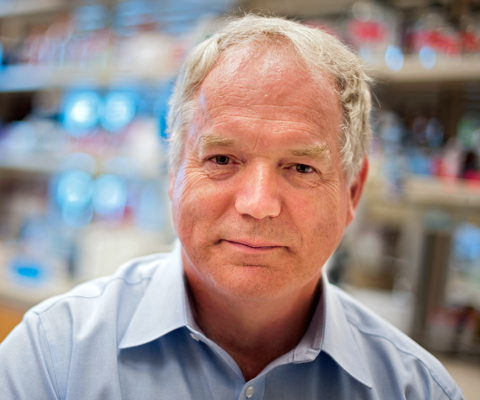
University of Alberta researcher wins Nobel prize for Hep C discovery, now working on vaccines
It was the middle of the night on Oct. 5 when University of Alberta professor Dr. Michael Houghton learned he and his collaborators were the Nobel Prize winners in Physiology or Medicine for 2020. Dr. Houghton won the Nobel along with scientists Harvey Alter and Charlie Rice for their significant contribution to the fight against blood-borne hepatitis, a major global health problem that causes cirrhosis and liver cancer in people around the world.
Dr. Houghton said he tried to go back to sleep after the 3 a.m. call from a colleague but failed. “In the end I gave up,” he said in an interview with Adam Smith of Nobelprize.org. “And then… [I] got on email and there’s hundreds and hundreds of emails, which is all very nice of course.”
The three scientists discovered the hepatitis C virus (HCV), which causes 400,000 global deaths a year, in 1989.
After their discovery, protecting the blood supply from transmission was job one. The scientists quickly developed a blood test and by 1992 the virus was virtually eliminated from the blood inventory in the developed world.
Their attention then turned to therapeutics. “It took…the whole field and the pharmaceutical industry working for more than 20 years. But eventually, we’ve got these wonderful drugs now that can cure nearly everybody quite quickly and safely.”
Still, HCV remains a global epidemic. “So…the way eventually you have to control an epidemic like this is with a vaccine,” he said. “After many years of work, I think our field feels that it is now feasible…at the University of Alberta I’ve been working on an improved version that we think has a good chance of success, or at least being partially effective.”
Dr. Houghton was recruited to the University of Alberta in 2010 as the Canada Excellence Research Chair in Virology in the Li Ka Shing Institute of Virology. Two years later, he and his team developed a vaccine for the virus known to cause cirrhosis, end-stage liver disease and liver cancer. The vaccine is now in late-stage testing.
He is also leading an effort to produce a vaccine for COVID-19.
Dr. Houghton said he became interested in microbiology when was 17, “having read about Louis Pasteur’s life and his work, so he was my inspiration.” In terms of what drove his work, especially during years of frustration, he said it wasn’t the promise of awards or accolades. “It’s nice, but what counts for me more is that we’ve been able to prevent millions of hepatitis C infections that otherwise would have occurred through the blood supply. Prizes are very pleasant, but they’re only prizes. I’m much more happy when we can actually intervene with patients and prevent people from getting infected or provide a cure for them.”
Investigating the building blocks of nature
Simon Caron-Huot, a Canada Research Chair in High-Energy Physics and assistant professor at McGill University, was one of two Canadian academics awarded the New Horizons in Physics Prize for “profound contributions to the understanding of quantum field theory.”
Dr. Caron-Huot’s interests lie in high-energy particle theory, a branch of physics that studies the nature of particles constituting matter and radiation. In particular, by studying scattering amplitudes in quantum chromodynamics, he aims to develop new on-shell techniques to simplify and enable new calculations. He is also interested in the N=4 super Yang-Mills model, which could become the first exactly solved field theory in four dimensions. The techniques he develops harness the surprising power of general principles — relativity and quantum mechanics — to break difficult quantitative calculations into simpler building blocks.
Following undergraduate studies in physics at Université Laval, Dr. Caron-Huot earned his PhD in physics from McGill University in 2009, where he studied hot and dense systems, including the quark-gluon plasma. He pursued post-doctoral work at the Institute for Advanced Study at Princeton between 2009-2014 and at the Niels-Bohr Institute in 2012-2016 before joining the McGill University department of physics as an assistant professor.
Learn more about the New Horizons in Physics Prize
*The New Horizons in Physics Prize is awarded by the Breakthrough Prize Foundation to promising junior researchers who have already produced important work. Each year, the foundation awards up to three prizes of $100,000. The prize is funded by a grant from the Milner Foundation
Developing ecological forecasting tools to conserve biodiversity
Stephanie Green, an assistant professor in the department of biological sciences at the University of Alberta, was awarded a Sloan Research Fellowship to pursue her work on biodiversity change in aquatic ecosystems.
Dr. Green investigates how disturbances, like biological invasion, climate change and over-exploitation, alter the distribution and abundance of marine and freshwater species. Her research combines field experiments, behavioural observations and simulation modeling to evaluate how interactions between species are altered by disturbance, and its consequences for ecosystem structure and function.
Dr. Green’s research produces predictive modeling tools that are used to identify management actions and solutions that are most likely to conserve and restore aquatic populations. Her lab applies this approach to a range of ecological issues, including setting targets for population control of invasive species, designing coral reef habitat restoration and predicting the effects of a changing ocean climate on the distribution of fisheries species.
In 2013, following an undergraduate degree in ecology and environmental biology at the University of British Columbia, Dr. Green completed her doctoral studies in the department of biological sciences at Simon Fraser University. In 2016, following three years as a David H. Smith Conservation Research Fellow at Oregon State University, she was named a Banting Fellow at the Center for Ocean Solutions at Stanford University. Dr. Green joined the faculty of science at the University of Alberta in 2018.
Learn more about the Sloan Research Fellowship
*The Sloan Research Fellowships are given annually to early-career scientists and scholars whose achievements and potential identify them as rising stars and influential leaders. They are one of the oldest awards conferred by the Alfred P. Sloan Foundation, a philanthropic, not-for-profit grant-making institution based in New York City. The foundation makes grants in support of original research and education in science, technology, engineering, mathematics and economic performance. In 2019, the amount of the award was $70,000.
Advancing our knowledge of quantum field theory
Pedro Vieira, who holds the Clay Riddell Paul Dirac Chair at the Perimeter Institute for Theoretical Physics in Waterloo, was one of two Canadian academics awarded the New Horizons in Physics Prize for “profound contributions to the understanding of quantum field theory.”
Dr. Vieira’s main research aims at developing new techniques for studying quantum field theories and string theories at finite coupling. String theory attempts to group the four known fundamental interactions — gravitation, electromagnetism, strong nuclear force and weak nuclear force — into a single theory. He studies a special massless supersymmetric quantum field theory known as N=4 SYM. If the theory can be solved, it could provide valuable lessons about the foundations of quantum field theory and string theory. In a complementary approach, Dr. Vieira also tries to carve out the space of all massive quantum theories by asking more general questions.
Following an undergraduate degree at the University of Porto, Dr. Vieira pursued graduate work at the École normale supérieure in Paris where he earned his PhD in physics in 2008. He joined the faculty of the Perimeter Institute in 2009. Dr. Vieira was previously awarded a Sloan Fellowship and the Gribov Medal in 2015.
Learn more about the New Horizons in Physics Prize
*The New Horizons in Physics Prize is awarded by the Breakthrough Prize Foundation to promising junior researchers who have already produced important work. Each year, the foundation awards up to three prizes of $100,000. The prize is funded by a grant from the Milner Foundation.
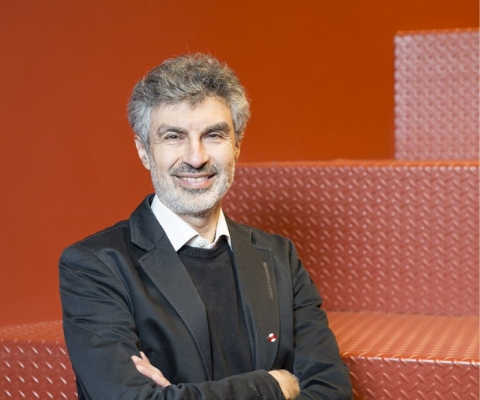 Photo Credit: Maryse Boyce
Photo Credit: Maryse Boyce
A pioneer in deep learning
Yoshua Bengio, a professor of computer science at Université de Montréal, was one of three winners of the 2018 ACM A.C. Turing Award. Announced and awarded in June 2019, the prize recognized Dr. Bengio and the other winners for their conceptual and engineering breakthroughs that have made deep neural networks a critical component of computing.
Dr. Bengio’s work in the 1980s and 1990s laid the groundwork for the development of the deep learning field in the 2000s. Since 2010, his papers on generative deep learning have revolutionized applications of artificial intelligence in machine translation and for generating synthetic images and sounds. As the author or co-author of three books and some 500 papers, Dr. Bengio was the computer scientist with the most new citations in the world in 2018.
Dr. Bengio began his university studies at McGill in 1982, culminating in a PhD in computer science in 1991. Postdoctoral studies followed at the Massachusetts Institute of Technology and Bell Labs. Since 1993, Dr. Bengio has been a professor in the Department of Computer Science and Operational Research at Université de Montréal. In addition to holding the Canada Research Chair in Statistical Learning Algorithms, he is also the founder and scientific director of the Quebec Institute of Artificial Intelligence (Mila), the world’s largest university-based research group in deep learning. He is also the scientific director of the Montreal-based Institute for Data Valorization (IVADO).
Among recent awards, Dr. Bengio was made an Officer of the Order of Canada and a Fellow of the Royal Society of Canada in 2017. That same year, he received the Prix Marie-Victorin and was named Scientist of the Year by Radio-Canada. In 2018, he received the 50th Anniversary Medal from Quebec’s Ministère des Relations internationales et de la Francophonie. He has also been awarded a 2019 Killam prize.
Learn more about the ACM A.M. Turing Award
*The ACM A.M. Turing Award, the most prestigious technical award offered by the Association for Computing Machinery (ACM), is given for major contributions of lasting importance to computing. Often called the “Nobel Prize of Computing,” the A.M. Turing Award carries a $1 million prize. It is named for Alan M. Turing, the British mathematician who articulated the mathematical foundation and limits of computing.
Making history with an Earth-shattering image
In April 2019, the Event Horizon Telescope collaboration – a global network of 347 researchers at 60 institutions in 20 countries around the world – unveiled the first-ever image of a supermassive black hole, making headlines worldwide. This breakthrough discovery earned the 2020 Breakthrough Prize in Fundamental Physics, one of the field’s most prestigious prizes. Among these 347 researchers were 11 Canadian scientists from McGill University, the Canadian Institute for Theoretical Astrophysics at the University of Toronto, the Perimeter Institute for Theoretical Physics and the Canadian Nuclear Association.
By strategically positioning and synchronizing eight sensitive radio telescopes in Antarctica, Chile, Mexico, Hawaii, Arizona and Spain, the international team of researchers created a virtual telescope as large as the Earth, with unprecedented power. This allowed researchers to target and capture a photo of the supermassive black hole at the center of the Messier 87 galaxy in the Virgo constellation, which matched expectations of Einstein’s theory of gravity: a bright ring marking the point where light orbits the black hole, surrounding a dark region where light cannot escape the black hole’s gravitational pull.
This historic discovery also underlines the importance of international research collaboration in uncovering the greatest mysteries in our universe.
Learn more about the Breakthrough Prize in Fundamental Physics
*The Breakthrough Prize in Fundamental Physics was founded in 2012 by Yuri Milner to recognize researchers around the world who have made profound contributions to human knowledge. It is open to all physicists — theoretical, mathematical, experimental — working on the deepest mysteries of the universe. Laureates receive $3 million each in prize money in recognition of their achievements, making this one of the most prestigious and generous prizes in the world.
Canadian Recipients of the 2020 Breakthrough Prize
John Barrett
Canadian Nuclear Association
Avery Broderick
Perimeter Institute for Theoretical Physics
Boris Georgiev
Perimeter Institute for Theoretical Physics
Daryl Haggard
McGill University
Britton Jeter
Perimeter Institute for Theoretical Physics
Mansour Karami
Perimeter Institute for Theoretical Physics
Chunchong Ni
Perimeter Institute for Theoretical Physics
Ue-Li Pen
Canadian Institute for Theoretical Astrophysics, University of Toronto
Jorge A. Preciado López
Perimeter Institute for Theoretical Physics
Hung-Yi Pu
Perimeter Institute for Theoretical Physics
Paul Tiede
Perimeter Institute for Theoretical Physics
Astronomical advances in fundamental physics
Kendrick Smith was one of three academics awarded the New Horizons in Physics Prize “for the development of novel techniques to extract fundamental physics from astronomical data.” Dr. Smith holds the Daniel Family P. James E. Peebles Chair in Theoretical Physics at the Perimeter Institute for Theoretical Physics in Waterloo.
As a “data-oriented” cosmologist, Dr. Smith mixes theoretical physics, phenomenology, computational physics, statistics and data analysis. He has been part of several large experiments, including on cosmic microwave background (CMB) – sometimes called the oldest light in the universe. Indeed, Dr. Smith is best known for data analysis and phenomenology that led to the first detection of gravitational lensing in CMB satellites. More recently, he joined the Canadian Hydrogen Intensity Mapping Experiment, a new experiment in British Columbia that aims to measure the radio sky with more sensitivity than previous all-sky surveys.
Following a PhD in pure mathematics at the University of Michigan in 2000, Dr. Smith pursued a career as a software developer. However, his hobby of reading physics textbooks led to a second PhD in early universe cosmology from the University of Chicago in 2007. Dr. Smith pursued postdoctoral work at the University of Cambridge and Princeton University before joining the faculty of the Perimeter Institute.
Among previous awards, Dr. Smith was named a fellow in the CIFAR program Gravity & the Extreme Universe in 2019. As a member of Wilkinson Microwave Anisotropy Probe Science Team, he was also co-awarded the Breakthrough Prize in Fundamental Physics in 2018 and the Gruber Cosmology Prize in 2012.
Learn more about the New Horizons in Physics Prize
*The New Horizons in Physics Prize is awarded by the Breakthrough Prize Foundation to promising junior researchers who have already produced important work. Each year, the foundation awards up to three prizes of $100,000. The prize is funded by a grant from the Milner Foundation
Harnessing the power of literature for socio-political critique
Internationally-renowned author, poet and literary critic Margaret Atwood was awarded the 2019 Booker Prize for Fiction, one of the most prestigious literary awards in the world, for her highly anticipated dystopian novel The Testaments—a sequel to her critically-acclaimed 1985 novel The Handmaid’s Tale.
Released more than 30 years after The Handmaid’s Tale, The Testaments follows the story of three drastically different women who reside in the Republic of Gilead, a futuristic, theocratic and totalitarian society in which women are stripped of their rights and agency. Exploring themes of class, subjugation, resistance and freedom, The Testaments is “a savage and beautiful novel that speaks to us today with conviction and power,” according to Booker judges.
Margaret Atwood began writing at the age of six, and by 16 she had committed to pursue writing as a career. She received her bachelor of arts from Victoria College at the University of Toronto, followed by her master’s degree at Radcliffe College in Cambridge, Massachusetts. She also studied at Harvard University from 1962 to 1963 and from 1965 to 1967. She has taught English literature at a number of universities and colleges in both Canada and the United States.
Throughout her career, Ms. Atwood has written more than 50 books of fiction, poetry and critical essays and received more than 50 awards for her work, including the Governor General’s Award in 1966 and 1985, the Giller Prize in 1996, the Italian Premio Mondello in 1997 and the PEN USA Lifetime Achievement Award. This achievement marks the second time Ms. Atwood has received the prestigious Booker Prize for her work, after first winning it in 2000 for her novel The Blind Assassin.
Learn more about the Booker Prize
*The Booker Prize is the leading literary award in the English-speaking world, and has brought recognition, reward and readership to outstanding fiction for over five decades. Each year, the prize is awarded to what is, in the opinion of the judges, the best novel of the year written in English and published in the UK and Ireland. It is a prize that transforms the winner’s career.
Investigating the essence of photography
Jessica Eaton, a Montreal-based photographer, has received a Guggenheim Fellowship to pursue her interest in the limits and potential of photography.
Ms. Eaton’s photographs investigate components of the photographic process, such as light, colour and time to challenge human perception. With support from the fellowship, Ms. Eaton will build on earlier research into the reproduction and creation of colour, exploring the possibilities of the photographic print. A new body of work — tentatively entitled Pure Pigment and Precious Metals — may involve colour carbon prints, silvers, platinum, dye transfer and perhaps even daguerreotypes or holograms.
Jessica Eaton received her bachelor of fine arts degree in photography from Emily Carr University of Art + Design in 2006. Her work has been showcased across North America and Europe, including in the 2017 Canadian Biennial at the National Gallery of Canada, Under Construction: New Positions in American Photography at Foam Fotografiemuseum Amsterdam in 2014, and the Quebec Triennial 2011 in Montreal.
Eaton’s work is held in many significant museum collections, including the National Gallery of Canada, Musée d’art contemporain de Montréal, and The Art Gallery of Ontario. She was a recipient of the Hyères Photography Jury Grand Prize in 2012 and the Talents 2011 Award from Foam International Photography Magazine. She was also longlisted for the Sobey Art Award in 2016 and the Aimia | AGO Photography Prize in 2013.
Learn more about the Guggenheim Fellowship
*Since its establishment in 1925, the John Simon Guggenheim Memorial Foundation has granted more than $360 million in Fellowships to more than 18,000 individuals, among whom are scores of Nobel laureates, Fields Medalists, poets laureate, members of the various national academies, and winners of the Pulitzer Prize, ACM A.M. Turing Award, National Book Award and other significant, internationally recognized honours.
The godfather of the deep learning revolution
Geoffrey Hinton, a professor at the University of Toronto who is often referred to as the godfather of deep learning, was one of three winners of the 2018 ACM A.C. Turing Award. Announced and awarded in June 2019, the prize recognized Dr. Hinton and the other winners for their conceptual and engineering breakthroughs that have made deep neural networks a critical component of computing.
Dr. Hinton aims to discover learning procedures that are efficient at finding complex structure in large, high-dimensional datasets. His contributions to neural network research include Boltzmann machines, distributed representations, time-delay neural nets, mixtures of experts, variational learning, products of experts, deep belief nets and capsule networks. His research group in Toronto has made major breakthroughs in deep learning that have revolutionized speech recognition and object classification.
Following an undergraduate degree in experimental psychology from the University of Cambridge in 1970, Dr. Hinton earned his PhD in artificial intelligence from the University of Edinburgh in 1978. After teaching at Carnegie-Mellon University for five years, he became a fellow of the Canadian Institute for Advanced Research (CIAR) and moved to the department of computer science at the University of Toronto. He later spent three years setting up the Gatsby Computational Neuroscience Unit at University College London before returning to the University of Toronto in 2001. From 2004 to 2013, Dr. Hinton also directed the CIAR-funded Neural Computation and Adaptive Perception program (now the Learning in Machines & Brains research program).
Dr. Hinton is now an emeritus distinguished professor and a fellow of the Royal Society, the Royal Society of Canada, and the Association for the Advancement of Artificial Intelligence. Since 2013, he has been working halftime for the Google Brain team and now directs their research group in Toronto. He is also the chief scientific adviser of the Vector Institute.
Dr. Hinton has received honorary doctorates from the University of Edinburgh, the University of Sussex and the University of Sherbrooke. Among Dr. Hinton’s honours, he was awarded the first David E. Rumelhart prize in 2001 and the NSERC Herzberg Gold Medal in 2010, which is Canada’s top award in Science and Engineering.
Learn more about the ACM A.M. Turing Award
*The ACM A.M. Turing Award, the most prestigious technical award offered by the Association for Computing Machinery (ACM), is given for major contributions of lasting importance to computing. Often called the “Nobel Prize of Computing,” the ACM A.M. Turing Award carries a $1 million prize, with financial support provided by Google, Inc. It is named for Alan M. Turing, the British mathematician who articulated the mathematical foundation and limits of computing.
Investigating interactions between light and matter
Christine Muschik, an assistant professor at the University of Waterloo, received a Sloan Fellowship in recognition for her research in quantum physics, which could eventually lead to greater understanding of high-energy physics – including the physics of the early universe.
Through the development of novel tools, Dr. Muschik explores and engineers interactions between light and matter. The tools, which focus on quantum networks and quantum simulations of models from high-energy physics, have applications in the field of quantum information science. Ultimately, she hopes to tackle problems related to heavy ion collisions in particle indicators, matter at extreme densities and the physics of the early universe.
Dr. Muschik completed both undergraduate and postgraduate studies at the Max Planck Institute for Quantum Optics in Germany, earning a PhD in 2011. Her theoretical research in quantum optics led to a postdoctoral fellowship at the Institute of Photonic Sciences in Barcelona, followed by further research at the Institute for Quantum Optics and Quantum Information in Austria. In 2017, Dr. Muschik joined the Institute for Quantum Computing and the department of physics and astronomy at the University of Waterloo. She is also an Emmy Noether Fellow and affiliate at the Perimeter Institute for Theoretical Physics.
Learn more about the Sloan Research Fellowships
*The Sloan Research Fellowships are given annually to early-career scientists and scholars whose achievements and potential identify them as rising stars and influential leaders. They are one of the oldest awards conferred by the Alfred P. Sloan Foundation, a philanthropic, not-for-profit grant-making institution based in New York City. The foundation makes grants in support of original research and education in science, technology, engineering, mathematics and economic performance. In 2019, the amount of the award was $70,000.
Exploring political thought of the late Italian Renaissance
Mark Jurdjevic, a professor of early modern European history at York University’s Glendon Campus, has been awarded a Guggenheim Fellowship to explore friendship networks shared between Niccolò Machiavelli and Francesco Guicciardini. He will examine how their correspondence and epistolary debates informed the realist turn in late Renaissance historical and political writing.
Dr. Jurdjevic’s research focuses on the Italian Renaissance, Machiavelli and Florentine political and intellectual history. It explores the social history of ideas and the process by which debates between intellectuals catalyze larger historical developments. Dr. Jurdjevic chose Renaissance Florence as an ideal setting to consider the impact of ideas on social and political life, as its inhabitants produced texts that enable detailed reconstructions of universal questions about democratic life.
Dr. Jurdjevic has written two books that consider these questions. Guardians of Republicanism: The Valori Family in the Florentine Renaissance was published in 2008 and A Great and Wretched City: Promise and Failure in Machiavelli’s Florentine Political Thought was released in 2014. He has also co-edited several books, including Florentine Political Writings from Petrarch to Machiavelli in 2019. His new book, which is the subject of his Guggenheim Fellowship, will be entitled Desperation’s Remedies: Machiavelli and Guicciardini’s Debate about Freedom and Florentine Republicanism.
Following undergraduate and graduate work in history at the University of Toronto, Dr. Jurdjevic earned his PhD in history from Northwestern University in 2002. He joined the department of history at Glendon College, York University in 2009. He has also taught at the University of Ottawa and the University of Toronto, as well as at Yale University as a Mellon postdoctoral fellow at the Whitney Humanities Center.
Learn more about the Guggenheim Fellowship
*Since its establishment in 1925, the John Simon Guggenheim Memorial Foundation has granted more than $360 million in Fellowships to over 18,000 individuals, among whom are scores of Nobel laureates, Fields Medalists, poets laureate, members of the various national academies, and winners of the Pulitzer Prize, ACM A.C. Turing Award, National Book Award, and other significant, internationally recognized honours.
Understanding the inner workings of the brain
Arjun Krishnaswamy, an assistant professor in the department of physiology at McGill University’s faculty of medicine, was awarded a Sloan Fellowship. The award, which recognizes promising early-career researchers, will help his lab pursue studies in neural circuitry.
Dr. Krishnaswamy seeks to understand how neurons form the complex circuits that underlie our mental abilities. He studies this problem in the retina, a thin sheet of neural tissue at the back of the eye that contains several neural circuits arranged in parallel, each attuned to detect a unique visual feature such as motion. Greater understanding of how these circuits assemble and how their wiring patterns support feature computations could yield insights into the workings of the brain, including how to treat neurological disease when circuits malfunction.
A member of the Cell Information Systems group at McGill’s Life Sciences Complex, Dr. Krishnaswamy joined the university’s faculty in 2017 following postdoctoral research at the Center for Brain Science at Harvard University. He earned his PhD from McGill University in 2009 after completing a graduate degree in Physiology in the faculty of medicine. He received a bachelor of science from McGill in 2003.
Learn more about Sloan Research Fellowships
*The Sloan Research Fellowships are given annually to early-career scientists and scholars whose achievements and potential identify them as rising stars and influential leaders. They are one of the oldest awards conferred by the Alfred P. Sloan Foundation, a philanthropic, not-for-profit grant-making institution based in New York City. The foundation makes grants in support of original research and education in science, technology, engineering, mathematics and economic performance. In 2019, the amount of the award was $70,000.
Unlocking the mysteries of a one-cell parasite
Aaron Reinke, an assistant professor of molecular genetics at the University of Toronto, was awarded a Sloan Fellowship in Computational and Evolutionary Molecular Biology.
By investigating how parasites interact with their hosts, Dr. Reinke aims to shed light on how pathogens evolve. His lab focuses on microsporidia, a common, one-cell parasite related to fungi. Microsporidia can infect nearly every species on the planet, causing disease and even death in humans with weakened immune systems. Through their research, Dr. Reinke and his team hope to better understand how microsporidia successfully infect and proliferate inside of their hosts — and become one step closer to finding a preventative solution.
Dr. Reinke earned his PhD from the Massachusetts Institute of Technology in 2012. During postdoctoral work at the University of California San Diego, he developed a system to see the proteins that microsporidia put into host cells. Building on this research, he set up a lab at the University of Toronto in 2017, using worms as a model to understand infection and immunity in other animals. This, in turn, may generate insight into environmental effects that are passed down from generation to generation, including in humans.
Learn more about the Sloan Research Fellowships
*The Sloan Research Fellowships are given annually to early-career scientists and scholars whose achievements and potential identify them as rising stars and influential leaders. They are one of the oldest awards conferred by the Alfred P. Sloan Foundation, a philanthropic, not-for-profit grant-making institution based in New York City. The foundation makes grants in support of original research and education in science, technology, engineering, mathematics and economic performance. In 2019, the amount of the award was $70,000.
A Nobel Prize for inventions in laser physics
Dr. Donna Strickland, a professor of physics at the University of Waterloo, was one of three winners of the 2018 Nobel Prize in Physics. Following in the ranks of Marie Curie and Maria Geoppert Mayer, Dr. Strickland is the third woman – and first Canadian woman – to ever receive this prestigious prize.
Dr. Strickland was recognized along with her former PhD supervisor, Dr. Gérard Mourou, for groundbreaking inventions in the field of laser physics. Their breakthrough – called chirped pulse amplification (CPA) – was detailed in a 1985 paper, which became Dr. Strickland’s first scientific publication. CPA opened up new areas of research and led to the development of innovative new laser tools, now employed in scientific, industrial, medical, energy, military and security applications.
After receiving an undergraduate degree in engineering physics at McMaster University in 1981, Dr. Strickland earned a doctorate in physics (optics) at the University of Rochester (U.S.). She has been a faculty member at the University of Waterloo’s Department of Physics and Astronomy since 1997.
Among her honours, Dr. Strickland was named a Fellow of the Optical Society of America. Over the past 20 years, she has received various awards for her work, including a Sloan Research Fellowship, the Premier’s Research Excellence Award and the Cottrell Scholars Award from Research Corporation.
Learn more about the Nobel Prize in Physics
*Donna Strickland is one of 17 Canadian winners of major international research awards in 2018 featured in the publication Canadian excellence, Global recognition: Canada’s 2018 winners of major international research awards.
Understanding the role of genes in development
Dr. Janet Rossant, who holds University of Toronto’s highest rank of University Professor, was honoured with a 2018 L’Oréal-UNESCO For Women in Science Award in life sciences. The prize, which promotes diversity in science, recognizes Dr. Rossant’s outstanding research that explores how tissues and organs are formed in the developing embryo.
Using both cellular and genetic manipulation techniques, Dr. Rossant works to understand the genetic control of normal and abnormal development in the early mouse embryo. Her interests have led to the discovery of a novel placental stem cell type, the trophoblast stem cell. Ultimately, she envisions a role for stem cells in treating human disease.
Dr. Rossant is currently a professor in both the Department of Molecular Genetics, and Obstetrics and Gynecology at the University of Toronto, as well as a senior scientist at The Hospital for Sick Children and president of the Gairdner Foundation.Originally from the U.K., Dr. Rossant trained at Oxford and Cambridge universities before coming to Canada in 1977. Between 1985 and 2005, she taught at Brock University and then undertook research at the Samuel Lunenfeld Research Institute at Mount Sinai Hospital in Toronto. From 2005 to 2015, she was chief of research at The Hospital for Sick Children.
Among other recognitions, Dr. Rossant has received the 10th International Society for Transgenic Technologies Prize, the Ross G. Harrison medal for lifetime achievement in Developmental Biology and the CIHR Michael Smith Prize. A Fellow of both the Royal Societies of London and Canada, she is also a foreign associate of the U.S. National Academy of Sciences.
Learn more about the L’Oréal-UNESCO For Women in Science Award
*Janet Rossant is one of 17 Canadian winners of major international research awards in 2018 featured in the publication Canadian excellence, Global recognition: Canada’s 2018 winners of major international research awards.
Photo credit: John Ulan, University of Alberta
Understanding triggers for disease
Dr. Michael Woodside, a professor in the Department of Physics at the University of Alberta, was awarded a Guggenheim Fellowship — a first for the Faculty of Science and the first such honour for the university in nearly 40 years.
Integrating physics, molecular biology and biochemistry, Dr. Woodside studies how single biological molecules like nucleic acids and proteins respond to mechanical forces. These responses offer clues to the behaviour of proteins at the molecular level, which in turn can help shed light on how proteins can trigger neurodegenerative diseases such as Parkinson’s and prion diseases like Creutzfeldt-Jakob.
Dr. Woodside completed undergraduate degrees in physics and music at the University of Toronto before completing his PhD in physics at the University of California, Berkeley. Following a postdoctoral fellowship in biological sciences at Stanford University, he became a research officer at the National Institute for Nanotechnology in Edmonton. Since 2013, he has been the iCORE Chair in Biophysics at the University of Alberta.
Learn more about the Guggenheim Fellowship
*Michael Woodside is one of 17 Canadian winners of major international research awards in 2018 featured in the publication Canadian excellence, Global recognition: Canada’s 2018 winners of major international research awards.
Atomic and molecular tools to probe the universe
Dr. Amar Vutha, a professor in the Department of Physics at the University of Toronto, has been awarded a Sloan Fellowship to support his research into fundamental physics.
Dr. Vutha’s research group measures the oscillation frequencies of atoms and molecules and uses them to test the limits of known physical laws. One of his projects is to build compact and portable atomic clocks to better study gravity. Another involves measuring the shape of the electron to find clues to why the universe only contains matter, instead of equal parts matter and antimatter.
Dr. Vutha was a physics undergraduate at the Indian Institute of Technology Kanpur. After obtaining his PhD from Yale University in 2011, he was a postdoctoral researcher at York University, before joining the faculty of the University of Toronto in 2015.
Learn more about the Sloan Research Fellowship
*Amar Vutha is one of 17 Canadian winners of major international research awards in 2018 featured in the publication Canadian excellence, Global recognition: Canada’s 2018 winners of major international research awards.
Examining the nature of perception
Dr. Stuart Trenholm, a Canada Research Chair and assistant professor at the Montreal Neurological Institute at McGill University, has been awarded a Sloan Fellowship to support his research into the nature of perception.
Leading a team of senior researchers and technicians, Dr. Trenholm studies visual circuits in healthy animals and compares them to the circuits in vision-impaired and vision-rehabilitated animals. In doing so, he hopes to gain insight into the nature of perception and, ultimately, find better treatments for visually impaired people. To that end, his lab merges multiple disciplines, including physiology, animal behaviour, viral circuit tracing, genetics, disease models and optogenetics.
Dr. Trenholm completed his undergraduate degree in biology at the University of Victoria. Following completion of his PhD in neuroscience at Dalhousie University in 2013, he pursued postgraduate research at the Friedrich Miescher Institute for Biomedical Research. In 2017, he joined the faculty of McGill University.
Learn more about the Sloan Research Fellowship
*Stuart Trenholm is one of 17 Canadian winners of major international research awards in 2018 featured in the publication Canadian excellence, Global recognition: Canada’s 2018 winners of major international research awards.
Photo credit: Lëa-Kim Châteauneuf
A language all his own
Michel Tremblay, the first Québécois author to use working-class French (joual) in his work, was awarded the Grand Prix de la Francophonie in 2018 for his significant contributions to maintaining and showcasing the French language.
Considered a leading theatre figure in Quebec, Mr. Tremblay made his debut as a playwright with his work Les belles-soeurs, which premiered in August 1968 in Montreal. Though the play first scandalized audiences for its frank depiction of working- class women and its use of vernacular French, Les belles-soeurs is celebrated today for painting an accurate portrait of Quebec’s working-class in the sixties. Translated into several languages, Les belles-sœurs has been performed in multiple countries and has become a classic of Quebec theatre.
Over the past 50 years, Mr. Tremblay has written a considerable number of plays, including À toi, pour toujours, ta Marie-Lou; Albertine, en cinq temps; Le vrai monde?; and La maison suspendue. In addition, he has written novels such as the six-volume Chroniques du Plateau Mont-Royal and the nine-volume La diaspora des Desrosiers. His significant work also includes essays, musical comedies, screenplays and an opera. Regardless of the form he uses, Mr. Tremblay’s universe is peopled by ordinary women expressing their everyday struggles in joual.
Over his storied career, Mr. Tremblay has received dozens of prestigious literary prizes, as well as honorary doctorates. Among his notable awards are the Gilles-Corbeil Prize, awarded every three years to recognize a Quebec writer’s body of work; the Molson Prize from the Canada Council for the Arts; and the Ordre des Arts et des Lettres de France.
Learn more about the Grand Prix de la Francophonie (in French only)
*Michel Tremblay is one of 17 Canadian winners of major international research awards in 2018 featured in the publication Canadian excellence, Global recognition: Canada’s 2018 winners of major international research awards.
Exploring the complex dynamics of systems
Dr. Giulio Tiozzo, an assistant professor in the Department of Computer and Mathematical Sciences at the University of Toronto Scarborough, has been awarded a Sloan Fellowship. The award, given to rising research stars, complements a Connaught New Researcher Award bestowed for 2017-19.
Dr. Tiozzo focuses on dynamical systems and their relations with complex analysis, Teichmüller theory, ergodic theory, probability and group theory. Following an undergraduate degree in mathematics at the Scuola Normale Superiore di Pisa in Italy, Dr. Tiozzo pursued postgraduate studies at Harvard University, earning his PhD in 2013. In 2016, after two years at Yale University as a Gibbs Assistant Professor, he joined the faculty of the University of Toronto.
Learn ore about the Sloan Research Fellowship
*Giulio Tiozzo is one of 17 Canadian winners of major international research awards in 2018 featured in the publication Canadian excellence, Global recognition: Canada’s 2018 winners of major international research awards.
Offering a new perspective on American prisons
Dr. Brett Story, an assistant professor of Image Arts at Ryerson University, was awarded a Guggenheim Fellowship in film and video.
Dr. Story, who holds a PhD in geography from the University of Toronto, is a writer and independent non-fiction filmmaker. Her second feature documentary, The Prison in Twelve Landscapes, harnesses the power of cinema to show how penitentiaries in the United States reflect power structures braided deeply into the relationships, economies and landscapes all around us. It poses questions about how their presence may have more to do with jobs, resource extraction, economic development, race and poverty than with crime, and in so doing, opens the possibility that these landscapes could be put to more productive use. The film was nominated for a Canadian Screen Award for best Canadian documentary in 2017.
Dr. Story’s first book, Prison Land: Mapping Carceral Power Across Neoliberal America, will be published in the spring of 2019 by the University of Minnesota Press. Her journalism and film criticism have appeared in such outlets as CBC Radio and the The Nation magazine. Her other honours include the Documentary Organization of Canada Institute’s New Visions Award in 2014 and a Sundance Institute Art of Nonfiction Fellowship in 2016.
Learn more about the Guggenheim Fellowship
*Brett Story is one of 17 Canadian winners of major international research awards in 2018 featured in the publication Canadian excellence, Global recognition: Canada’s 2018 winners of major international research awards.
Crunching the numbers
Dr. Arul Shankar, an assistant professor in the Department of Mathematics at the University of Toronto, has been awarded a Sloan Fellowship – one of the most prestigious early career fellowships available to mathematicians.
Dr. Shankar is recognized for his pioneering work in number theory, a branch of pure mathematics that explores the properties of integers – or whole numbers that can be positive, negative or zero. Dr. Shankar focuses specifically on arithmetic statistics, examining the average behaviour of number-theoretic objects.
Dr. Shankar completed his undergraduate and graduate degrees in mathematics at the Chennai Mathematical Institute in India and Princeton University (U.K.), respectively. Following completion of his PhD in 2012, Dr. Shankar pursued postgraduate research at the Institute for Advanced Study and Harvard University. In 2016, he joined the faculty of the University of Toronto.
Learn more about the Sloan Research Fellowships
*Arul Shankar is one of 17 Canadian winners of major international research awards in 2018 featured in the publication Canadian excellence, Global recognition: Canada’s 2018 winners of major international research awards.
Advancing our understanding of the universe
Dr. Douglas Scott of The University of British Columbia was one of three Canadian members of the Planck Team – a group of international researchers dedicated to measuring the composition and evolution of the universe – awarded the 2018 Gruber Prize for Cosmology.
Between 2009-13, the Planck Team generated a wealth of data from the European Space Agency’s Planck satellite observatory. In so doing, the team assembled a composite map to analyse – with more precision and accuracy than any previous research – the contents and makeup of the early universe.Their data have transformed theoretical research in cosmology, opening the door to further exploration into the contents and evolution of the universe for decades to come.
Dr. Scott’s interests include examining how structure formed and the numbers that describe the entire cosmos. “While parameters are being measured to greater and greater precision, and the physics of galaxy formation are being dissected in ever increasing detail, we are still left with many unsolved puzzles,” he says.
Following an undergraduate in astrophysics from the University of Edinburgh in 1986, Dr. Scott obtained a doctoral degree from the University of Cambridge in 1991. After postdoctoral work at the University of California, Berkeley in the early 1990s, he joined UBC’s faculty in 1995. He is currently a professor in UBC’s Department of Physics and Astronomy.
Learn more about the Gruber Prize for Cosmology
*Douglas Scott is one of 17 Canadian winners of major international research awards in 2018 featured in the publication Canadian excellence, Global recognition: Canada’s 2018 winners of major international research awards.
An infinite landscape of sound
Dr. Farangis Nurulla-Khoja, a Canadian composer born in Dushanbe, Tajikistan, was awarded a Guggenheim Fellowship to continue her search for sounds unheard and forms unseen.
Dr. Nurulla-Khoja, a descendant of the Tajik composer Ziyodullo Shahidi, has composed more than 50 pieces of symphonic, chamber, vocal and electro-acoustic music that have been performed in more than 21 countries in Europe, North America and Asia. In addition, her music has appeared in various documentary and experimental films.
Among recent accolades, Dr. Nurulla-Khoja won the Gold Medal “Best of Show” of the 2017 Global Music Award for her piece Incandescence; the Joseph S. Stauffer Prize for the Arts for best mid-career composer; and the Andrey Petrov prize for her full orchestra piece L’infini de l’instant and her concerto for saxophone and sinfonietta Ravishi Nur. In 2015, her concerto for violin and string orchestra Daidu also won a prize at an international competition in Poland.
Dr. Nurulla-Kjoja has been a composer in residence for many prestigious organizations such as the Royaumont Foundation in France, the Bellagio Center of the Rockefeller Foundation in Italy and the Society of Swedish Composers in Cortona, Italy. She holds a PhD of fine arts in composition from the University of Gothenburg, Sweden, and has studied at the University of California in San Diego as well as the Institut de recherche et coordination acoustique musique in Paris.
Learn more about the Guggenheim Fellowship
*Farangis Nurulla-Khoja is one of 17 Canadian winners of major international research awards in 2018 featured in the publication Canadian excellence, Global recognition: Canada’s 2018 winners of major international research awards.
Unlocking secrets in the human code book
Dr. Hamed Shateri Najafabadi, an assistant professor in McGill University’s Department of Human Genetics, received a Sloan Fellowship to support his explorations into the inner workings of the cell.
Using computational algorithms and mathematical models, Dr. Najafabadi explores how information in DNA is read and interpreted. Understanding these links can help decipher the nature of the malfunctions in the human genome that lead to disease. While Dr. Najafabadi and his team focus primarily on cancer, they have also made discoveries that shed light into Alzheimer’s disease.
Following undergraduate and graduate degrees in biotechnology at the University of Tehran (Iran), Dr. Najafabadi completed doctoral studies at the Department of Parasitology and McGill Centre for Bioinformatics in 2011. He joined the faculty at McGill after a postdoctoral fellowship at the University of Toronto.
Learn more about the Sloan Research Fellowships
*Hamed Shateri Najafabadi is one of 17 Canadian winners of major international research awards in 2018 featured in the publication Canadian excellence, Global recognition: Canada’s 2018 winners of major international research awards.
Exploring the evolution of our galaxy
Dr. Peter G. Martin of the University of Toronto was one of three Canadian members of the Planck Team – a group of international researchers dedicated to measuring the composition and evolution of the universe – awarded the 2018 Gruber Prize for Cosmology.
Between 2009-13, The Planck Team generated a wealth of data from the European Space Agency’s Planck satellite observatory. In so doing, the team assembled a composite map to analyse – with more precision and accuracy than any previous research – the contents and makeup of the early universe. Their data, including exquisite maps of our own galaxy, have transformed theoretical research in both the large – scale universe and the interstellar medium in the Milky Way, opening the door to further exploration into their contents and evolution for decades to come.
Dr. Martin earned undergraduate and graduate degrees from the University of Toronto and later returned to the institution after completing his doctorate in the Department of Applied Mathematics and Theoretical Physics at the University of Cambridge in 1972. He became the first faculty member of the Canadian Institute for Theoretical Astrophysics at the university in 1984, where he continues as a professor.
Other recognitions include Officer of the Order of Canada, Fellow of the Royal Society of Canada and Senior Fellow at Massey College in the University of Toronto. From the Canadian Astronomical Society, Dr. Martin has received the C.S. Beals Award for outstanding achievement in research and the Executive Award for Outstanding Service and from the Royal Astronomical Society he received two Group Achievement Awards for the Planck and for the Herschel Space Observatory.
Learn more about the Gruber Prize for Cosmology
*Peter G. Martin is one of 17 Canadian winners of major international research awards in 2018 featured in the publication Canadian excellence, Global recognition: Canada’s 2018 winners of major international research awards.
Developing DNA barcodes to identify every species on Earth
The Royal Netherlands Academy of Arts and Sciences awarded the 2018 Dr. A.H. Heineken Prize for Environmental Sciences to Dr. Paul Hebert, Canada Research Chair in Molecular Biodiversity at the University of Guelph.
Known globally as “the father of DNA barcoding,” Dr. Hebert is celebrated for his pivotal contribution to developing a genetic barcode capable of classifying every biological species on Earth. Similar to how a supermarket scanner uses black and white UPC barcodes to identify different food products, genetic barcoding involves small DNA fragments that can be used to identify different species.
As the director of the Centre for Biodiversity Genomics in Guelph, a global leader in the field of DNA barcoding, Dr. Hebert is leading the International Barcode of Life Project, which aims to develop a reference library of more than 6 million DNA barcodes derived from over 500,000 species. Ultimately, this project will empower anyone to know, in minutes, essential information about any animal or plant, holding out the potential to better protect forestry and agriculture, to intercept invasive species sooner, and to strengthen ecosystem monitoring and conservation.
Dr. Hebert studied biology at Queen’s University before transferring to the University of Cambridge for his graduate degree in genetics. After obtaining his PhD in 1972, he was a Rutherford Fellow at the University of Sydney in Australia. Returning to Canada in 1976, he took up a faculty position at the University of Windsor where he was a professor and director of its Great Lakes Institute. In 1990, he was appointed Chair of the Department of Zoology at the University of Guelph, a position he held until taking up a Canada Research Chair in 2001. In addition to holding three honorary doctorates, he is a Fellow of the Royal Society of Canada and was invested as an Officer of the Order of Canada in 2015.
Learn more about the Dr. A.H. Heineken Prize for Environmental Sciences
*Paul Hebert is one of 18 Canadian winners of major international research awards in 2018 featured in the publication Canadian excellence, Global recognition: Canada’s 2018 winners of major international research awards.
Photo credit: Ken Jones, University of Toronto
Expanding
Dr. Robert Haslhofer, an assistant professor in the Department of Computer and Mathematical Sciences at the University of Toronto Scarborough, received a 2018 Sloan Research Fellowship in Mathematics.
Awarded annually to rising research stars, the Sloan Fellowship recognizes Dr. Haslhofer for his work in geometric analysis and geometric flows. This Fellowship complements a recent grant Dr. Haslhofer received from the Natural Sciences and Engineering Research Council of Canada.
After receiving his undergraduate, graduate and postgraduate degrees in mathematics at ETH Zurich (Switzerland), Dr. Haslhofertaught at the Courant Institute of Mathematical Sciences in New York for three years before joining the University of Toronto in 2015.
Learn more about the Sloan Research Fellowships
*Robert Haslhofer is one of 17 Canadian winners of major international research awards in 2018 featured in the publication Canadian excellence, Global recognition: Canada’s 2018 winners of major international research awards.
A quantum leap in information science
In May 2018, Gilles Brassard, a pioneer of quantum information science at the Université de Montréal, became the first Canadian ever to receive the prestigious Wolf Prize in Physics. The Prize was shared with his lifelong collaborator Charles Bennett of IBM Research.
The Wolf Prize celebrates Professor Brassard for founding and advancing the fields of quantum cryptography and quantum teleportation – his two most famous discoveries. While quantum cryptography enables unconditionally secure communication between participants, quantum teleportation allows for the teleportation of quantum information from one place to another. Today, these fields are universally recognized among the most fundamental pillars of quantum information science.
Professor Brassard is an Officer of the Order of Canada and of the Ordre national du Québec, as well as a Fellow of the Royal Societies of London and of Canada. He earned both his undergraduate and graduate degrees in computer science at the Université de Montréal before completing his PhD at Cornell University.He has been a faculty member of the Department of Computer Science and Operations Research of his alma mater in Montreal since 1988, and a Canada Research Chair in Quantum Information Science since 2001. Professor Brassard has also received honorary doctoral degrees from universities in Zürich, Ottawa and Lugano.
Learn more about the Wolf Prize in Physics
*Gilles Brassard is one of 17 Canadian winners of major international research awards in 2018 featured in the publication Canadian excellence, Global recognition: Canada’s 2018 winners of major international research awards.
Photo credit: Liam Sharp, University of Toronto
Analyzing the composition of the universe
Ten years after winning the Gruber Cosmology Prize for his individual research, Dr. J. Richard Bond of the University of Toronto was one of three Canadian members of the Planck Team – a group of international researchers dedicated to measuring the composition and evolution of the universe – given the 2018 edition of the prize.
Between 2009-13, the Planck Team generated a wealth of data from the European Space Agency’s Planck satellite observatory. In so doing, the team assembled a composite map to analyse – with more precision and accuracy than any previous research – the contents and makeup of the early universe. Their data have transformed theoretical research in cosmology, opening the door to further exploration into the contents and evolutions of the universe for decades to come.
Dr. Bond completed an undergraduate degree in mathematics and physics at the University of Toronto in 1973 before earning graduate and post-graduate degrees in theoretical physics at Caltech. In 1985, he returned to the University of Toronto as a founding faculty member in the Canadian Institute for Theoretical Astrophysics and Fellow of the Canadian Institute for Advanced Research’s Cosmology and Gravity Program.
Among his many successes, Dr. Bond was named University Professor at the University of Toronto in 2000, the highest honour bestowed by the institution. He became an Officer of the Order of Canada in 2005 and was inducted into the Order of Ontario in 2008.
Learn more about the Gruber Cosmology Prize
*J. Richard Bond is one of 17 Canadian winners of major international research awards in 2018 featured in the publicationCanadian excellence, Global recognition: Canada’s 2018 winners of major international research awards.
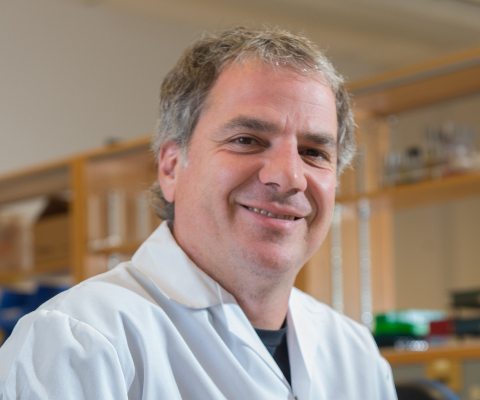
Eradicating the Ebola virus
Dr. Gary Kobinger, professor in the Department of Microbiology and Infectious Diseases and the director of the Research Centre on Infectious Diseases at Université Laval and co-winner Dr. Xianngguo Qiu at the National Microbiology Laboratory developed both a vaccine to prevent the devastating Ebola virus and a drug to treat those already infected. Dr. Kobinger developed the vaccine when he was an associate professor at the University of Manitoba.
The VSV-EBOV vaccine and the ZMapp treatment were so effective in preventing the spread of Ebola that clinical trials were fast-tracked, allowing distribution to start without delay, possibly saving thousands of lives.
ZMapp was provided under compassionate emergency protocols to over 25 first responders infected on the line of duty. All of them but one recovered.
Find out more: Université Laval >
*Gary Kobinger is a 2018 co-winner of the Governor General’s Innovation Awards and was one of 14 Innovators to Know invited to Ottawa by Universities Canada on Feb. 24, 2016 to meet with high school students, science policy makers and Parliamentarians.
Early warning system for dangerous infectious diseases
The sudden cardiac death genetic research team of Daryl Pullman, Terry-Lynn Young, Sean Connors and Kathleen Hodgkinson of Memorial University of Newfoundland identified a lethal gene mutation known to have caused sudden cardiac death in 25 Newfoundland and Labrador families. Moreover, the multidisciplinary team spearheaded research to establish life-saving screening methods and preventative treatments. Physicians worldwide now have the information to successfully treat hundreds of gene carriers with life-saving implantable cardioverter defibrillator therapy based on a mutation test alone, significantly lengthening the lifespan of those affected. This has resulted in a paradigm shift in clinical management and ethical oversight.
For more information: Memorial University of Newfoundland
* Daryl Pullman, Terry-Lynn Young, Sean Connors and Kathleen Hodgkinson are 2018 co-winners of the Governor General’s Innovation Awards.
Giving voice to the voiceless
Dr. Tom Chau, professor and pediatric rehabilitation engineer at the University of Toronto, has developed pioneering access technologies to help individuals who have no voice overcome communication obstacles. Working with a multidisciplinary team, Dr. Chau has examined how hemodynamic signal features and facial thermography can be employed in emerging methods of electrical engineering and machine learning. The result is a range of personalized, life-changing assistive technologies that give voice to the voiceless. From virtual musical instruments and vocal cord transmitters to an ultrasonic brain-computer interface, these innovations have had a profound impact on families, caregivers and health care providers by boldly reimagining the way we communicate.
For more information: University of Toronto
* Tom Chau is a 2018 winner of the Governor General’s Innovation Awards.
Using big data to uncover outbreaks of infectious diseases
The worldwide health, economic and social impacts of the SARS epidemic in 2003 inspired Dr. Kamran Khan, an associate professor in medicine and public health at the University of Toronto, to develop a global early warning system for dangerous infectious diseases. He spent the next decade working to create a big data platform to drive scientific research on outbreaks and pandemics and founded BlueDot in 2013 to accelerate that goal. Using geographic information systems, natural language processing and artificial intelligence, the multidisciplinary team at BlueDot has been able to predict the worldwide spread of influenza, and track the spread of recent outbreaks, including Ebola and the Zika virus.
* Kamran Khan is a 2018 winner of the Governor General’s Innovation Awards.
Embracing robotic technology to empower and elevate people
Angela Schoellig, an assistant professor at the University of Toronto’s Institute for Aerospace Studies (UTIAS), was awarded a Sloan Fellowship for her early scholarship in the interface between robotics, controls and machine learning. Dr. Schoellig, who heads the Dynamic Systems Lab at UTIAS, is also an associate director at the Centre for Aerial Robotics Research and Education at the university.
With her team, Dr. Schoellig aims to enhance the performance of robots, enabling them to learn autonomously from experience so they can become safer and more efficient tools for humans. The applications for her research range from flying drones that can perform dangerous search operations during a disaster to self-driving cars that can adapt to changing weather conditions.
Dr. Schoellig holds an MSc in engineering science and mechanics from the Georgia Institute of Technology, as well as a masters degree in engineering cybernetics from the University of Stuttgart, Germany. Her PhD from ETH Zurich was awarded the ETH Medal, and she was one of 35 recipients of the 2013 Dimitris N. Chorafas Foundation Award. Since then, she has received much recognition for her early scholarship, including as the youngest member of the 2014 Science Leadership Program, which promotes outstanding scientists in Canada.
Academic collaborators include ETH Zurich, the Senseable City Lab at the Massachusetts Institute of Technology, and the Institute of Networked and Embedded Systems in Austria. The Government of Canada has supported Dr. Schoellig’s work through the Natural Sciences and Engineering Research Council of Canada, the Canada Foundation for Innovation, and Defence Research and Development Canada.
Learn more about Sloan Research Fellowships
*Angela Schoellig is one of 12 Canadian winners of major international research awards in 2017 featured in the publication Canadian excellence, Global recognition: Canada’s 2017 winners of major international research awards.
Making waves in the world of quantum physics
Louis Taillefer, a professor at the Université de Sherbrooke, was awarded the 2017 Simon Memorial Prize, becoming the first Canadian to receive the prize since its inception in 1957. Dr. Taillefer, who also directs the quantum materials program at the Canadian Institute for Advanced Research, was acknowledged for his “pioneering contributions to the field of unconventional superconductivity.”
The Taillefer lab has 13 members and some 45 alumni. Dr. Taillefer and his team have made several experimental discoveries that have advanced our understanding of superconductors, so named because they conduct electricity perfectly, without any loss of energy. In 2007, for example, they observed “quantum oscillations” in a copper-oxide superconductor, which transformed how scientists view electron behaviour in these materials, the strongest known superconductors.
So far superconductors only perform at extremely low temperatures (below -100 degrees Celsius). Achieving room-temperature performance, which Dr. Taillefer has called his “holy grail”, would open up countless possibilities — from energy efficiency to transportation.
Dr. Taillefer, who quit high school for a year to work on a friend’s farm, pursued an undergraduate degree at McGill University. He finished at the top of his class, sharing the gold medal for top student in math and physics with his twin brother. Following his BSc in physics at McGill, he earned his PhD in physics at the University of Cambridge, England.
Learn more about the Simon Memorial Prize
*Louis Taillefer is one of 12 Canadian winners of major international research awards in 2017 featured in the publication Canadian excellence, Global recognition: Canada’s 2017 winners of major international research awards.
Taking a pragmatic approach to philosophy
Cheryl Misak, a professor of philosophy at the University of Toronto, was awarded a Guggenheim Fellowship in Intellectual and Cultural History. Her research interests include American pragmatism, the history of analytic philosophy, moral and political philosophy and the philosophy of medicine. She has also held administrative positions as vice president and provost where Dr. Misak was known for her own brand of pragmatism.
Dr. Misak enrolled at the University of Lethbridge with the intention of heading for law school, but took a course in philosophy to fill a hole in her schedule. Following an undergraduate degree in philosophy at Lethbridge, she earned an MA from Columbia University and a DPhil in philosophy from the University of Oxford.
Although associated with the University of Toronto since 1990, Dr. Misak has been a visiting professor of philosophy at New York University, as well as a visiting fellow at both St. John’s College and Trinity College at the University of Cambridge. She has also been a Rhodes scholar and a Humboldt research fellow, and is a fellow of the Royal Society of Canada.
Support for her research from the Government of Canada has included five grants from the Social Sciences and Humanities Research Council of Canada.
Her five books comprise Cambridge Pragmatism: From Peirce and James to Ramsey and Wittgenstein (2016); The American Pragmatists (2013); Truth, Politics, Morality: Pragmatism and Deliberation (2000); Verificationism: Its History and Prospects (1995); and Truth and the End of Inquiry: A Peircean Account of Truth (1991). Her most recent project is an intellectual biography of Frank Ramsey, the University of Cambridge philosopher, economist and mathematician.
Learn more about the Guggenheim Fellowships
*Cheryl Misak is one of 12 Canadian winners of major international research awards in 2017 featured in the publication Canadian excellence, Global recognition: Canada’s 2017 winners of major international research awards.
Seeing the unseeable
Lewis Kay, a senior scientist in molecular medicine at The Hospital for Sick Children, was named a laureate of the Canada Gairdner International Award for his role in developing modern nuclear magnetic resonance (NMR) spectroscopy. It is the first time a Canadian has won the award since 2008. A colleague at the University of Toronto, where Dr. Kay is also a professor in the Departments of Chemistry, Biochemistry and Molecular Genetics, calls his work “seeing the unseeable.”
Using Dr. Kay’s methods, which are offered through an open source approach to research, scientists around the world can study how the shapes of large molecules like proteins change over time. This generates insight into the nature of protein structure and the importance of flexibility for biological function. Such findings give scientists a deeper understanding of diseases, and could one day pave the way for drugs to target specific proteins.
Dr. Kay graduated with an undergraduate degree in biochemistry from the University of Alberta. He went on earn his PhD in molecular biophysics from Yale University, followed by post-doctoral studies at the National Institutes of Health. He has been a professor of molecular genetics, biochemistry and chemistry at the University of Toronto since 1992. Dr. Kay’s lab at the University of Toronto has 12 research associates and post-doctoral fellows.
In 2001, Dr. Kay was named Canada Research Chair in Protemoics, Bioinformatics and Functional Genomics, a position renewed in 2014. In 2017, he was named an Officer of the Order of Canada, the latest in a string of awards that have included the Merck Frosst Award, the Steacie Prize, the Favelle Medal and the Gunther Lauien Prize, among others. He is also a member of the Royal Society of Canada and the Royal Society (London).
Learn more about the Canada Gairdner International Awards
*Lewis Kay is one of 12 Canadian winners of major international research awards in 2017 featured in the publication Canadian excellence, Global recognition: Canada’s 2017 winners of major international research awards.
Uncovering the role of stem cells in treating leukemia
John Dick, who has worked in the Department of Molecular Genetics at the University of Toronto for 30 years, received the Keio Medical Science Prize for uncovering the role of stem cells in treating leukemia.
Researchers had long believed that stem cells might be present in cancer tissues, but the hypothesis remained unproven. Dr. Dick was the first to provide evidence that stem cells are present and active in leukemia. Building on this discovery, other researchers have shown that cancer stem cells play roles in solid tumours as well. In the words of the selection committee, “Professor Dick’s contribution is immeasurable, as he gave rise to the idea that cancer stem cells must be destroyed for cancer to be eradicated.”
Dr. Dick completed his undergraduate and post-graduate degrees in microbiology at the University of Manitoba before moving to Ontario. By 1995, he was a professor in the Department of Molecular Genetics at the University of Toronto, a position he continues to hold. In his early career, he held positions in the Research Institute Hospital for Sick Children and moved to the University Health Network in 2001. Dr. Dick is also Canada Research Chair in Stem Cell Biology; senior scientist at the Princess Margaret Cancer Centre and at the McEwen Centre for Regenerative Medicine, University Health Network, Toronto; and director of the Translational Research Initiative in Leukemia at the Ontario Institute for Cancer Research.
Dr. Dick is also a fellow of the American Association for Cancer Research Academy, the Royal Society of Canada and the Royal Society of London (U.K.).
Dr. Dick’s lab receives financial support from the Canadian Cancer Society, the Terry Fox Foundation, the Government of Ontario through the Ontario Institute for Cancer Research, and the Government of Canada through Canada Research Chairs and the Canadian Institutes of Health Research. The lab has some 20 scientists and researchers among its members, has some 90 alumni.
Learn more about the Keio Medical Science Prize
*John Dick is one of 12 Canadian winners of major international research awards in 2017 featured in the publication Canadian excellence, Global recognition: Canada’s 2017 winners of major international research awards.
Bringing together philosophy, mathematics, physics and economics
Margaret Morrison, who was awarded a Guggenheim Fellowship in Philosophy, is interested in a broad area of topics, including the role of models in scientific investigation, mathematical explanation in physics and biology, and the role of computer simulations in producing knowledge. Her early work, for example, examined how we extract concrete information from abstract mathematical representations. More recently, she is exploring whether computer simulations can ever truly hold the same status for knowledge as measurements.
Dr. Morrison completed her first degree in philosophy at Dalhousie University before earning graduate and post-graduate degrees from the University of Western Ontario. She held positions at Stanford University and the University of Minnesota in the United States before joining the faculty of the University of Toronto in 1989. She has also been a research fellow at the Wissenschaftskolleg zu Berlin, the Centre for the Philosophy of the Natural and Social Sciences at the London School of Economics and in 2015 she was a Humboldt fellow at the Centre for Mathematical Philosophy at the Ludwig Maximillian University in Munich. In addition, she is a member of the Leopoldina, German National Academy of Science; the Royal Society of Canada; and the Académie Internationale de Philosophie des Sciences. Her support from the Government of Canada has included several grants from the Social Sciences and Humanities Research Council of Canada.
Her publications include Unifying Scientific Theories: Physical Concepts and Mathematical Structures (2000) and Reconstructing Reality: Models, Mathematics and Simulations (2015). During her Guggenheim Fellowship, Dr. Morrison will build on earlier work on the role of mathematical structures in explaining natural phenomena. She has a particular interest in econophysics, an interdisciplinary field that uses the theories and methods of statistical physics to address problems in economics, particularly financial markets.
Learn more about the Guggenheim Fellowships
*Margaret Morrison is one of 12 Canadian winners of major international research awards in 2017 featured in the publication Canadian excellence, Global recognition: Canada’s 2017 winners of major international research awards.
Helping machines learn faster
Mark Schmidt, an assistant professor at The University of British Columbia, was awarded a Sloan Fellowship in Computer Science. Dr. Schmidt specializes in machine learning, which studies how computers can automatically “learn” from accessing huge quantities of data. With this knowledge, computers can make better predictions and enhance decision-making. He shares his methods in software packages that let researchers apply his groundbreaking approach to their own problems.
Dr. Schmidt earned both his undergraduate and graduate degrees in science at the University of Alberta, and pursued his interest in machine learning at the Laboratory for Computational Intelligence at UBC where he earned his PhD. Post-doc work followed at the same lab, as well as at the Natural Language Lab at Simon Fraser University and the Laboratoire d’Informatique at the École normale supérieure in Paris. In 2016, two years after joining the faculty at the UBC lab, he was named a Canada Research Chair in Large-Scale Learning, which is supported by the National Sciences and Engineering Research Council of Canada. The UBC Machine Learning Group has 11 members and five alumni.
Learn more about Sloan Research Fellowships
*Mark Schmidt is one of 12 Canadian winners of major international research awards in 2017 featured in the publication Canadian excellence, Global recognition: Canada’s 2017 winners of major international research awards.
Connecting mind and body to understand language
Bryan Gick, professor of linguistics at the University of British Columbia (UBC), was awarded a Guggenheim Fellowship in Linguistics. By combining research into the production, perception, control and biomechanics of speech, Dr. Gick has been bringing the human body into discussions of language.
Dr. Gick is considered a pioneer in using ultrasound biofeedback to teach and learn pronunciation, particularly for language learners, people with speech and hearing disorders, and communities at risk of losing their language. In 2009, as a featured author in Nature, he showed how humans “feel” speech through the skin. As an Early Career Scholar at the Peter Wall Institute for Advanced Studies at UBC, he co-developed ArtiSynth, a platform that would become home to “Frank” — the world’s first virtual biomechanical model of the human head, neck, and face. ArtiSynth has since permitted research and the development of applications related to speech, swallowing and surgical planning.
Following his undergraduate studies at the University of Pennsylvania, Dr. Gick earned two graduate degrees and a PhD at Yale University. In addition to his role as a professor in the Department of Linguistics at UBC, Dr. Gick is director of the Masters in Data Science in Computational Linguistics and co-director of the Language Sciences Initiative. He also holds associate appointments in the Department of Psychology; the School of Audiology and Speech Sciences; and the Institute for Computing, Information and Cognitive Systems. Outside UBC, he is a senior scientist at Haskins Laboratories in New Haven, Connecticut.
As director of the Interdisciplinary Speech Research Laboratory (ISRL) at UBC, Dr. Gick leads a team exploring a range of areas, including the use of visual biofeedback to treat speech and hearing disorders, and the use of ultrasound for imaging the tongue during speech. As of early 2018, the dozen-member team included four graduate and three postdoctoral researchers. In addition to collaborating with other UBC departments and Canadian universities, the lab also networks with researchers in many other countries, including Singapore, Taiwan, Australia, France, England, Hong Kong, Ghana, New Zealand and the United States.
Dr. Gick’s work has benefited from grants from the Canada Foundation for Innovation, the National Sciences and Engineering Research Council of Canada, and the Social Sciences and Humanities Research Council of Canada.
Learn more about Guggenheim Fellowships
*Bryan Gick is one of 12 Canadian winners of major international research awards in 2017 featured in the publication Canadian excellence, Global recognition: Canada’s 2017 winners of major international research awards.
Understanding the limits of efficient computation
Benjamin Rossman, an assistant professor at the University of Toronto with joint appointments in the Departments of Mathematics and Computer Science, received a Sloan Fellowship in Mathematics. Dr. Rossman’s research focuses on computational complexity theory, a branch of theoretical computer science that classifies problems according to their relative difficulty. His work studies the minimum computational resources required to solve fundamental problems, such as detecting cliques and connectivity in random networks.
After earning his PhD at MIT, Dr. Rossman lived in Tokyo where he did postdoctoral research at the National Institute of Informatics and taught as an assistant professor at the National Institute of Informatics. Further postdoctoral work was completed at the Simons Institute for the Theory of Computing in Berkeley, California. In 2018, he will return to Berkeley as the co-organizer of a semester-long program on “lower bounds in computational complexity.” His work is supported by the Natural Sciences and Engineering Research Council of Canada.
Learn more about Sloan Research Fellowships
*Benjamin Rossman is one of 12 Canadian winners of major international research awards in 2017 featured in the publication Canadian excellence, Global recognition: Canada’s 2017 winners of major international research awards.
Researching history through musical composition
Dániel Péter Biró, who was awarded a Guggenheim Fellowship in Music Composition, likens the process of creating music to bungee jumping — a frightening plunge into the unknown.
A researcher as well as a composer, the various strands of Dr. Biró’s work often intertwine. His PhD dissertation at Princeton University in 2004 examined historical relationships between orality, memory and notational development in Hungarian laments, Jewish Torah recitation and early Christian plainchant. Such studies into ancient traditions can find expression, directly or indirectly, in his own compositions.
His initial studies took him to Hungary, Germany, Switzerland, Austria, and Israel. In 2011, he was a visiting professor at Utrecht University where he researched Jewish and Islamic chant as practised in the Netherlands. More recently, he was a fellow at the Radcliffe Institute for Advanced Study at Harvard University where he completed Mishpatim (Laws), a cycle for voices, ensemble and electronics.
Dr. Biró’s work has been performed by ensembles around the world, including the Frankfurt Radio Symphony, the Ensemble SurPlus, the JACK String Quartet, Kai Wessel and the Schola Heidelberg, among others. In 2013, his composition Kivrot Hata’avah (Graves of Craving) represented Canada at World Music Days in Vienna, Austria. International awards for his work include the Gigahertz Production Prize and Vocal Music Competition of the ISCM–Austria. In 2014, Oxford University Press published a study on the string quartets of Belá Bartók co-edited with Harald Krebs, a colleague at the University of Victoria.
Dr. Biró’s work has been supported by multiple grants from the Canada Council for the Arts. In 2012, the Council supported a new commission, which was premiered by violist Ralf Ehlers (Arditti Quartet) at the International Symposium of New Music and Computer Music in Curitiba, Brazil. In 2009 he received Council funding to help compose Udvarim Achadim (And the Same Words), a piece featured on the Canadian tour of the Quasar Saxophone Quartet.
Learn more about the Guggenheim Fellowships
*Dániel Péter Biró is one of 12 Canadian winners of major international research awards in 2017 featured in the publication Canadian excellence, Global recognition: Canada’s 2017 winners of major international research awards.
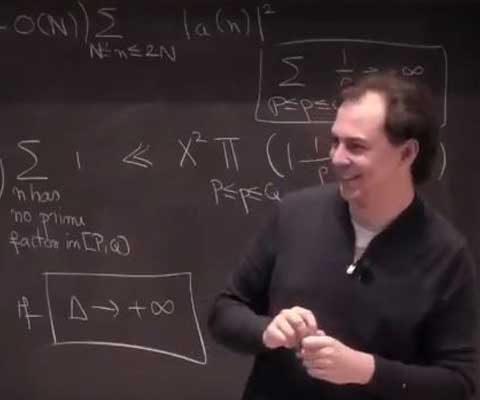
Uncovering the properties of numbers
Maksym Radziwill, an assistant professor at McGill University and a Canada Research Chair in Number Theory, was awarded a Sloan Fellowship in Mathematics in recognition of his early career scholarship.
Dr. Radziwill has a particular interest in number theory, a branch of pure mathematics devoted primarily to the study of integers. Building on his PhD thesis at Stanford University, Dr. Radziwill has published several papers on the Riemann zeta function — an approach to number theory that dates back to a seminal work by Bernard Riemann in 1859.
The Sloan Fellowship, in fact, is the second recent award that recognizes Dr. Radziwill’s early scholarship. In 2016, Dr. Radziwill and Dr. Kaisa Matomaki of Finland were co-winners of the SASTRA-Ramanujan award for mathematics — a prize awarded to a math scholar under the age of 32. The two researchers met at a conference and began a long-distance collaboration that focuses on the properties of numbers in “short intervals.”
Learn more about Sloan Research Fellowships
*Maksym Radziwill is one of 12 Canadian winners of major international research awards in 2017 featured in the publication Canadian excellence, Global recognition: Canada’s 2017 winners of major international research awards.
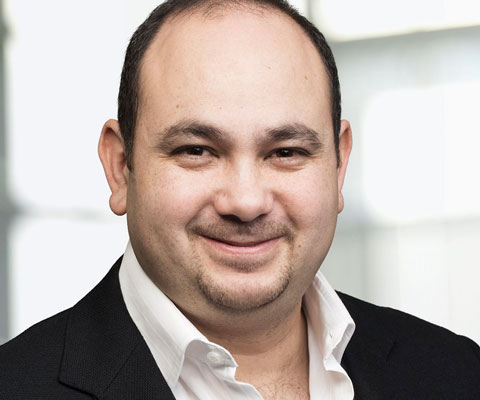
Digging up evolutionary secrets through the study of ants
The research of Ehab Abouheif, who was awarded a Guggenheim Fellowship in Molecular and Cellular Biology, is literally groundbreaking. Armed with a shovel, Dr. Abouheif has spent years digging up fields for his studies into the evolution of ants from the hyperdiverse genus Pheidole.
In ant colonies, ants develop into soldiers or minor workers depending on the food they receive as larvae. By applying high doses of hormone at a critical stage in the larvae’s development, Dr. Abouheif revived a third worker — the supersoldier — that was lost in this genus about 35 to 65 million years ago. In so doing, the lab showed how the right environmental triggers can harness dormant genetic potential — a breakthrough for evolutionary theory that also holds out hope for advances in fields as varied as medicine, biodiversity conservation and food security.
After earning his PhD from Duke University in 2002, Dr. Abouheif was a postdoctoral fellow at the University of Chicago and the University of California (Berkeley) between 2002-2004. Since joining McGill’s Department of Biology, he has received numerous national and international awards. In addition, he was the founding president of the Pan-American Society for Evolutionary Developmental Biology, and continues to serve on the executive council. As a co-founder of the McGill Centre for Islam and Science, he has lectured widely on the struggle to reconcile Islam and evolution.
Among its funders, the Abouheif lab receives financial support from the Government of Canada through the National Sciences and Engineering Research Council, the Canadian Foundation for Innovation and Canada Research Chairs. The Guggenheim Fellowship will help Dr. Abouheif continue to provide research opportunities to senior students. As of early 2018, the Abouheif lab had five graduate and postgraduate members. Many lab alumni are continuing their research in labs or teaching positions around the world — from Spain and France to Mexico and Jordan.
Learn more about the Guggenheim Fellowships
*Ehab Abouheif is one of 12 Canadian winners of major international research awards in 2017 featured in the publication Canadian excellence, Global recognition: Canada’s 2017 winners of major international research awards.
Improving treatment outcomes for patients across Canada
University of Toronto professor Paul Saneterre is a chemical engineer and co-founder of the Toronto-based health technologies company Interface Biologics Inc. He invented Endexo technology, a unique compound of surface-modifying macro molecules that are added to plastics during the manufacturing process of medical devices, like catheters. The special coating helps reduce clotting when the devices are used to treat patients, reducing the risk of adverse reactions and potentially deadly complications. Mr. Santerre is a listed inventor on over 60 patents in the medical field and has received numerous awards including the Manning Award for Innovation/Entrepreneurship and a fellowship with the Canadian Academy of Health Sciences.
For more information: University of Toronto
*Paul Santerre is a 2017 winner of the Governor General’s Innovation Awards.
Providing children and families greater access to mental health services
Dr. Patrick McGrath is a professor of science, pediatrics, community health and epidemiology and psychiatry at Dalhousie University and the vice-president of research, innovation and knowledge translation at the IWK Health Centre and Nova Scotia Health Authority. He founded the translational imaging research facility BIOTIC and created the Translating Research into Care grants, a partnership among scientists, administrators, patients and foundations. Dr. McGrath is also the chair of the board of directors at the Strongest Families Institute. Co-created with the Governor General’s Innovation Award winner Dr. Patricia Lingley-Pottie, the Halifax-based non-profit institute delivers evidence-based programs to children, youth and families seeking help for mental health and other issues impacting health and overall wellbeing through a unique distance-delivery system. Dr. McGrath was named an Officer of the Order of Canada in 2002.
For more information: Dalhousie University
*Patrick McGrath is a 2017 co-winner of the Governor General’s Innovation Awards.
Harnessing technology to deliver timely mental health services
Patricia Lingley-Pottie is an assistant professor of psychiatry at Dalhousie University and a scientist at the IWK Health Centre. With 29 years of pediatric nursing experience and research expertise to her credit, Dr. Lingley-Pottie has spent the past 17 years focusing on psychological research, specifically harnessing the advantages of technology to deliver accessible and timely distance interventions to children and families.
She is also the president and CEO of the Halifax-based Strongest Families Institute. Co-created with the Governor General’s Innovation Award winner Dr. Patrick MacGrath, the institute is a non-profit organization that delivers evidence-based programs to children, youth and families seeking help for mental health and other issues impacting health and overall well-being through a unique distance-delivery system.
For more information: Dalhousie University
*Patricia Lingley-Pottie is a 2017 co-winner of the Governor General’s Innovation Awards.
Addressing global food demands by improving the health of Canadian livestock
Dr. Bonnie Mallard is a professor of immunogenetics in the Department of Pathobiology at the Ontario Veterinary College, University of Guelph, and a member of the university’s Centre of Genetic Improvement of Livestock. Dr. Mallard has been recognized internationally for her creation of the High Immune Response Technology (HIR), a technology that manages the health of dairy cattle through genetic identification. This sustainable approach was designed to meet consumer expectations for healthy, non-GMO products while also addressing large-scale, global food demands. In the last few years, she has focused on extending this technology for use in dairy sires and in developing a genomics test for HIR in order to broaden its application.
For more information: University of Guelph
*Bonnie Mallard is a 2017 winner of the Governor General’s Innovation Awards.
Preserving endangered Indigenous languages through modern technologies
Linguistics professor Dr. Marie-Odile Junker of Carleton University has been a pioneer with respect to endangered Indigenous languages in Canada, exploring how information and communication technologies can be used to preserve these languages. Dr. Junker works closely with communities and individuals interested in saving their language and seeing it thrive in the 21st century. She has brought together numerous Indigenous communities which has resulted in the creation of several collaborative websites, including the Algonquian Linguistic Atlas and its online dictionary.
For more information: Carleton University
*Marie-Odile Junker is a 2017 winner of the Governor General’s Innovation Awards.
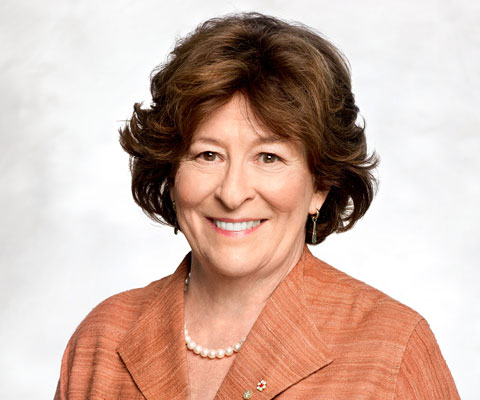
Promoting rule of law at home and abroad
The Honourable Louise Arbour was awarded the Tang Prize in Rule of Law “for her enduring contributions to international criminal justice and the protection of human rights, to promoting peace, justice and security at home and abroad, and to working within the law to expand the frontiers of freedom for all.”
Madame Justice Arbour has been a leading figure in the global constitutional and legal protection of human rights, civil liberties and rights of victims of war crimes. Among other positions, she has been a law professor, a former justice on the Supreme Court of Canada, Chief Prosecutor of major international tribunals and the UN High Commissioner for Human Rights.
More recently, as the leader of the non-governmental International Crisis Group in Brussels, she has been a high-level advocate for peace and security, and conflict prevention. In this role, she has issued early warnings to bring the world’s attention to forgotten conflicts in countries such as Colombia, Sri Lanka and Darfour, Sudan. She is currently counsel and jurist in residence in the Montreal office of BLG, a Canadian law firm.
Learn more about the Tang Prize in Rule of Law
*Louise Arbour is one of 12 Canadian winners of major international research awards in 2016 featured in the publication Canadian excellence, Global recognition: Celebrating Canada’s 2016 winners of major international research awards.
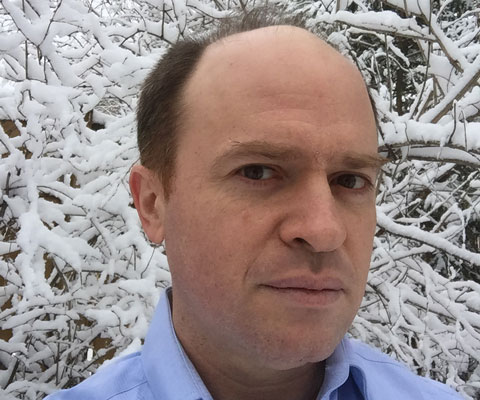
Exploring the utility of groups as geometric objects
Daniel Wise, who grew up in New York, has received a Guggenheim Fellowship in Mathematics for his studies of groups as geometric objects. Wise received his Ph.D. in 1996 from Princeton University and joined the Mathematics & Statistics Department at McGill University in 2001, where he is currently James McGill Professor.
Wise is widely recognized as one of the top geometric group theorists in the world, particularly for the applications of his work in three-dimensional manifold topology and hyperbolic geometry. Over the past 40 years, the works of Thurston and Waldhausen were central to the development of this field. The work of Wise, however, followed an entirely different direction over the past 15 years.
Ultimately, Wise’s approach played a central role in the proof of Thurston’s virtually fibered conjecture for hyperbolic three-manifolds. This is considered the most important development in geometry and topology since Perelman’s celebrated proof of the Poincaré Conjecture.
The originality of Wise’s work has been recognized through several major awards. He received the 2013 Veblen Prize of the American Mathematical Society. In 2014, he was elected a Fellow of the Royal Society of Canada. In 2015, he was Henri Poincare Chair at the Institute Henri Poincare. In 2016, he received the CRM-Fields-PIMS Prize and the Jeffery-Williams Prize of the Canadian Mathematical Society.
Learn more about Guggenheim Fellowships
*Daniel Wise is one of 12 Canadian winners of major international research awards in 2016 featured in the publication Canadian excellence, Global recognition: Celebrating recent Canadian winners of major international research awards.
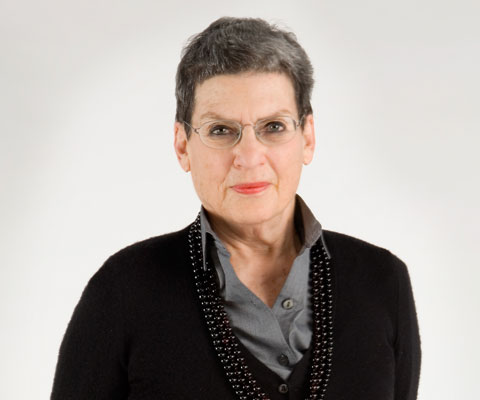
Photo: CCA Montréal
Creating innovative buildings and revitalizing urban space
Phyllis Lambert, Founding Director Emeritus of the Canadian Centre for Architecture in Montreal, Quebec, was awarded a Wolf Prize for her vigorous involvement in the realization of seminal innovative buildings, exemplary urban regeneration projects and leading research institutes.
As her first project, in the mid-1950s, Lambert commissioned Ludwig Mies van der Rohe to design the Seagram Building in New York under her supervision as director of planning. During the 1960s, she designed the Saidye Bronfman Centre in Montreal and consulted on the Toronto-Dominion Centre. In the 1970s, Lambert worked as architect-developer with Gene Summers for the renovation of the landmark Biltmore Hotel in Los Angeles, a project that won the National Honor Award of the American Institute of Architects.
In 1979, Lambert founded the Canadian Centre for Architecture to increase public awareness of the role of architecture in contemporary society and promote scholarly research in the field. “We’re not a museum that puts things out and says, ‘This is architecture’” she says. “We try to make people think.” The museum, which opened in 1989, houses extensive collection of architectural drawings, archives, books and photographs, and hosts conferences and exhibitions to provoke a conversation about architecture.
Known as “Citizen Lambert” for her dedication to civic activism in Montreal, Lambert was instrumental in founding several groups in the city, including Heritage Montreal, the Montreal Institute of Policy Alternatives and the Investment Fund of Montreal for social housing.
Learn more about the Wolf Prize
*Phyllis Lambert is one of 12 Canadian winners of major international research awards in 2016 featured in the publication Canadian excellence, Global recognition: Celebrating Canada’s 2016 winners of major international research awards.
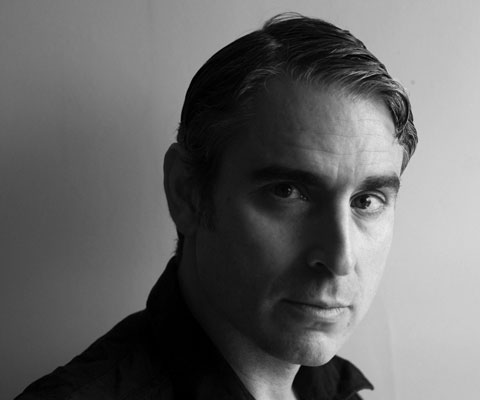
Documenting human rights abuse and conflict
Louie Palu, an independent documentary photographer and filmmaker, was awarded a Guggenheim Fellowship in Creative Arts (Photography) for his unflinching portrayal of socio-political issues relating to human rights, poverty and conflict. “I grew up hearing stories of trauma and poverty in my family, and was taught to always be in touch with your roots,” says Mr. Palu. “This became the basis of all my choices of subject matter as a documentary photographer.”
Mr. Palu’s 12-year study of hard mining communities in Canada’s North was selected for the Critical Mass Book award in 2006, and subsequently resulted in the book Cage Call: Life and Death in the Hard Rock Mining Belt. Other accolades include a Pulitzer Center on Crisis Reporting Grant and a 2011-12 Bernard L. Schwartz Fellowship from the New America Foundation to document the effects of organized crime and drugs in Mexico. He is best known for his five-year coverage of the war in Kandahar, Afghanistan, resulting in his award-winning film Kandahar Journals.
Mr. Palu is well known for his long-term projects. His work has been exhibited at numerous museums, including the Baltimore Museum of Art, National Gallery of Canada, and Smithsonian National Portrait Gallery. His work is held in numerous collections including the Harry Ransom Center, National Gallery of Art in Washington D.C., Library and Archives of Canada, Museum of Fine Arts Houston, Australian War Memorial and Museum of Fine Arts Boston. His work has been featured in TIME Magazine, The New York Times, CBC, NPR, PBS and BBC.
Learn more about Guggenheim Fellowships
*Louie Palu is one of 12 Canadian winners of major international research awards in 2016 featured in the publication Canadian excellence, Global recognition: Celebrating recent Canadian winners of major international research awards.
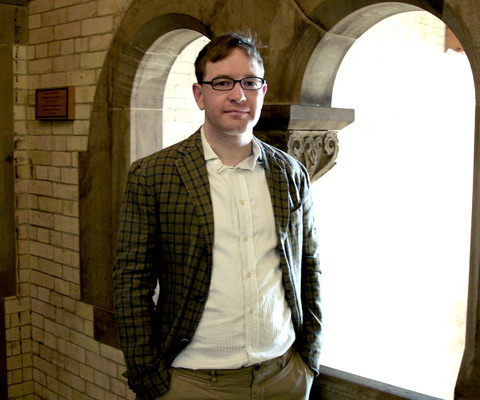
Mapping the timescales of the brain
Christopher J. Honey was awarded a Sloan Fellowship in Neuroscience for his work at the University of Toronto in understanding how the brain integrates information in both space and time. “While having a conversation, for example, we continuously perceive not only each spoken word, but also the emerging meaning of that word within a larger sentence, and the meaning of each sentence in the context of the conversation,” says Dr. Honey.
Recent studies suggest that brain regions are organized in a hierarchy according to the timescale on which they process information. At the lower end, the brain retains sensory information like word acoustics over a short period. At the higher end, it maintains more abstract information over seconds and minutes. As part of his research into the brain’s timescales, Dr. Honey has studied how people make sense of the temporal structure of movie clips and graphic novels. He has noted that many brain regions with long timescales, linking information over minutes of time, appear to be strongly connected to one another via “highways” of fibers.
Dr. Honey received his PhD from Indiana University in 2009, and pursued post-doc research at Princeton University. He was a member of University of Toronto’s Department of Psychology between 2014-16. Currently, he is an assistant professor in the Department of Psychological & Brain Services at Johns Hopkins University in Baltimore, U.S.
Learn more about Sloan Research Fellowships
*Christopher J. Honey is one of 12 Canadian winners of major international research awards in 2016 featured in the publication Canadian excellence, Global recognition: Celebrating recent Canadian winners of major international research awards.
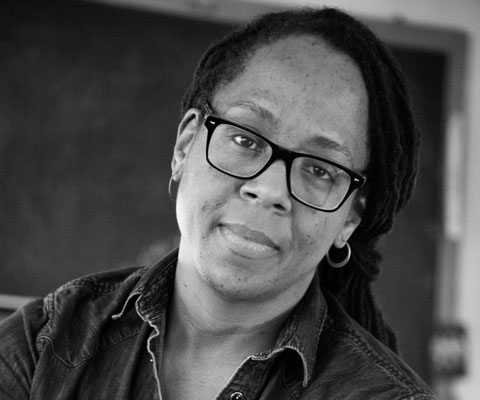
Tracing the history of Black Settlement on the Canadian prairies
Deanna Bowen, a Toronto-based interdisciplinary artist and educator, was awarded a 2016 Guggenheim Fellowship in the Film-Video category for a program of field research and artistic creation that will culminate with the production of An Exoduster’s Archive. This “expanded road movie” explores Bowen’s maternal great-great-grandparents’ migration from the Southern US to Canada in 1908. The project takes its name from the “Exoduster Movement” – a post-Reconstruction mass migration of African Americans who journeyed to Kansas (and Canada) from the Southern US in search of work and freedom after the Civil War.
A descendant of the Alabama and Kentucky-born Black Prairie pioneers of Amber Valley and Campsie, Alberta, Ms. Bowen has been drawing on her family history as the central pivot of her work since the early 1990s. Her broader practice examines history, historical writing and the ways in which artistic and technological advancements impact individual and collective authorship.
Ms. Bowen holds a Masters Degree in Visual Studies from University of Toronto (2008) and Diplomas of Fine Art from Emily Carr College of Art and Design (1994) and Langara Community College (1992). Her work has been exhibited internationally in numerous film festivals and museums, including the Institute of Contemporary Art at the University of Pennsylvania, UnionDocs Centre for Documentary Art, the Images Festival, Flux Projects, the Kassel Documentary Film and Video Festival, the Nasher Museum of Art at Duke University, and the Canadian Museum of Immigration at Pier 21, Halifax.
In addition to exhibitions and festivals, her writings and art works have appeared in numerous publications including Towards an African-Canadian Art History: Art, Memory and Resistance (forthcoming); North: New African Canadian Writing – West Coast Line; and Má-Ka : Diasporic Juks: Contemporary Writing by Queers of African Descent.
Learn more about Guggenheim Fellowships
*Deanna Bowen is one of 12 Canadian winners of major international research awards in 2016 featured in the publication Canadian excellence, Global recognition: Celebrating recent Canadian winners of major international research awards.
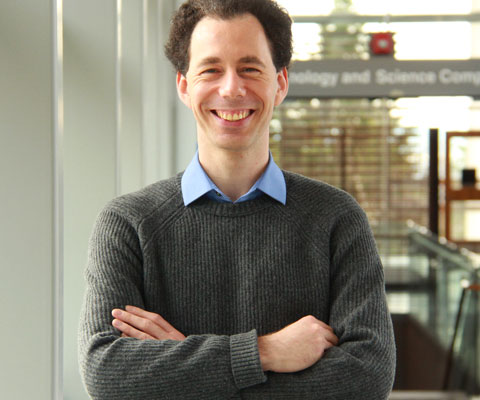
Predicting the dynamics of infectious diseases
Leonid Chindelevitch, an assistant professor of computer science at Simon Fraser University, has been awarded a Sloan Fellowship in Computational & Evolutionary Molecular Biology for his work in predicting the development of infectious diseases such as HIV, tuberculosis (TB) and Lyme disease.
Dr. Chindelevitch, who spent time working at the Massachusetts General Hospital and Clinton Health Access Initiative between his PhD and post-doctoral fellowship, is intrigued by how the intersection of the sciences, medicine and public policy could improve patient outcomes. Using big data, coming primarily from the genomes of infectious organisms, he develops mathematical models to predict the spread and evolution of epidemics. Ultimately, this can help public health authorities to anticipate and respond to serious outbreaks of disease.
Following a bachelor of science in mathematics and computer science at McGill University, Dr. Chindelevitch completed a PhD in Applied Mathematics from Massachusetts Institute of Technology on metabolic models for diseases such as TB. His postdoctoral work at the Harvard Institute of Public Health continued his interest in TB, focusing specifically on high-burden countries. In particular, he has developed a joint model on the TB and HIV epidemics in South Africa.
Learn more about Sloan Research Fellowships
*Leonid Chindelevitch is one of 12 Canadian winners of major international research awards in 2016 featured in the publication Canadian excellence, Global recognition: Celebrating Canada’s 2016 winners of major international research awards.
Asking big questions through small-scale experiments
Asimina Arvanitaki was awarded the New Horizons in Physics Prize from the Breakthrough Foundation for pioneering a wide range of new experimental probes of fundamental physics. “I think I was pre-wired for physics,” says Dr. Arvanitaki, who grew up in a small Greek village. “As a kid, I once taught myself to calculate how much time it took for the light to come from the Sun to us. It’s the ‘why’ that drove me to physics, and still drives me.”
Dr. Arvanitaki draws on technologies and techniques from other fields of physics to explore the nature of dark matter, black holes, extra dimensions and other fundamental questions of the universe. Her small-scale experiments are a relatively new approach in particle physics. Much research in this field is typically concerned with the “high energy frontier,” which requires huge colliders to smash particles. Dr. Arvanitaki focuses on tests at the so-called “precision frontier.” To that end, she uses high-precision measurements in experiments that can be small enough to fit on a table top.
Dr. Arvanitaki holds the inaugural Stavros Niarchos Foundation Aristarchus Chair in Theoretical Physics at Perimeter Institute in Waterloo, Ontario. This fund supports pioneering research into the universe and fosters ties between the Institute and Greece. She joined the Institute in 2014, after earning an undergraduate degree from the University of Athens and a PhD from Stanford University.
The New Horizons in Physics Prize of $100,000 is awarded to promising junior researchers who have already produced important work. The prize is funded by a grant from the Milner Foundation.
*Asimina Arvanitaki is one of 12 Canadian winners of major international research awards in 2016 featured in the publication Canadian excellence, Global recognition: Celebrating recent Canadian winners of major international research awards.
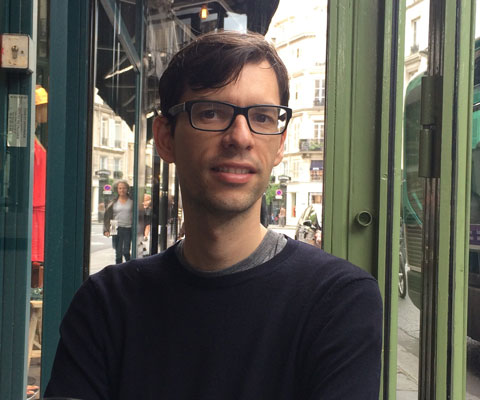
Exploring the Milky Way galaxy
An assistant professor of astronomy and astrophysics at the University of Toronto and Canada Research Chair in Galactic Astrophysics, Jo Bovy received a Sloan Fellowship in Physics to further his research into the structure, formation and evolution of the Milky Way galaxy.
“A lot of the most exciting new measurements being made in physics today are in the night sky,” says Bovy, who was the Science Working Group Chair for the Apache Point Observatory Galactic Evolution Experiment (APOGEE-1). Using data from APOGEE-1, Bovy worked with colleagues to perform the first detailed measurements of the Milky Way’s “disk” — the pancake-shaped region that surrounds the bulge in our galaxy.
Bovy earned his PhD from the Department of Physics, New York University, and held a postdoctoral position at the Institute for Advanced Study in Princeton University before joining the University of Toronto in July 2015. Over the next two years, Bovy will use his Sloan grant to study data from the European Space Agency’s Gaia spacecraft, which is mapping the locations and movement of some 1 billion objects throughout the Milky Way.
Learn more about Sloan Research Fellowships
*Jo Bovy is one of 12 Canadian winners of major international research awards in 2016 featured in the publication Canadian excellence, Global recognition: Celebrating recent Canadian winners of major international research awards.
Exploring how natural products are made
Dr. Katherine Ryan, a chemist at the University of British Columbia, was awarded a Sloan Fellowship in Chemistry for her research into how living organisms synthesize complex molecules.
Dr. Ryan, who works in the field of chemical biology, investigates how complex organic molecules, such as antibiotics, are assembled by bacteria. Such naturally produced molecules are among the most chemically complex and medicinally relevant molecules ever isolated. The goal of her research group is to employ genomics, biochemistry, organic chemistry, and structural biology to understand the assembly of these molecules.
After completing her bachelor of science in biological chemistry at the University of Chicago, she earned her PhD at the Massachusetts Institute of Technology. She then carried out postdoctoral research at the Scripps Institution of Oceanography, before joining the Department of Chemistry at the University of British Columbia as an Assistant Professor in 2011.
*Katherine Ryan is one of 12 Canadian winners of major international research awards in 2016 featured in the publication Canadian excellence, Global recognition: Celebrating recent Canadian winners of major international research awards.
Creating technology that allows anyone to be an inventor
As a Simon Fraser University student, Eugene Suyu was delighted by the infinite design possibilities offered by the school’s 3D printer—not so its lofty price tag. So, he decided to build his own. Now Mr. Suyu is the CEO of Tinkerine, Canada’s first publicly listed 3D printing manufacturing company.
3D printing has the potential to revolutionize the manufacturing industry and every sector from health care to education. BCBusiness magazine named Mr. Suyu one of its Top 30 Under 30 in 2015. He holds a BA from Simon Fraser University’s School of Interactive Arts and Technology.
* Eugene Suyu is one of 7 Young Innovators to Know who met with students, policy makers and Parliamentarians at Universities Canada’s Homecoming 2016 event on October 25 in Ottawa.
Tackling a global health concern through social entrepreneurship
Gavin Armstrong is the founder of Lucky Iron Fish™, a social enterprise using a simple health innovation—a reusable iron fish that can be cooked with food—to alleviate iron deficiency around the world.
Dr. Armstrong was the first Canadian recipient of the William J. Clinton Award for international work against hunger, as well as the inaugural winner of the Michaëlle Jean Emergency Hunger Relief Award. He was named one of Forbes magazine’s Top 30 Under 30 for social entrepreneurialism in 2016. He holds an honours BComm and a PhD in biomedical science from the University of Guelph.
* Gavin Armstrong is one of 7 Young Innovators to Know who met with students, policy makers and Parliamentarians at Universities Canada’s Homecoming 2016 event on October 25 in Ottawa.
Harnessing the innovative potential of youth and communities
Hibaq Gelle’s mission is to build sustainable communities by tapping into the innovative capacities of the non-profit, public, and private sectors. Her work focuses on providing youth with leadership and life skills through mentorship, workshops and advocacy initiatives. A recent Studio Y Fellow at the MaRS Discovery District, she also serves on the Ontario Premier’s Council on Youth Opportunities.
Ms. Hibaq holds a BSc from the University of Guelph.
*Hibaq Gelle is one of 7 Young Innovators to Know who met with students, policy makers and Parliamentarians at Universities Canada’s Homecoming 2016 event on October 25 in Ottawa.
Making smart phones smarter with photonics
While still an undergrad student, Jérôme Lapointe invented an artificial eye with a pupil that reacts to ambient brightness, resulting in a more realistic glass eye. Back then, his big dream was to design transparent computer screens, like those seen in science fiction movies. Now a doctoral engineering student at Polytechnique Montreal, he recently co-created photonic waveguides—channels for light to travel within—in glass on smart phones, creating a photonic system that could replace traditional electronic systems. His invisible waveguides are the first step in making his dream a reality and were named among Québec Science’s 10 top discoveries of the 2015.
*Jérôme Lapointe is one of 7 Young Innovators to Know who met with students, policy makers and Parliamentarians at Universities Canada’s Homecoming 2016 event on October 25 in Ottawa.
Deepening our understanding of climate change and the Arctic
Dr. Kathryn Hargan’s postdoctoral research in the Canadian Arctic will help increase our understanding of how seabirds and the atmosphere affect the transfer and concentration of nutrients and contaminants to coastal sites, as well as how climate change might influence their availability in northern environments.
Dr. Hargan is the 2015 winner of the L’Oréal-UNESCO excellence in research fellowship and is a W. Garfield Weston Postdoctoral Fellow for northern research at the University of Ottawa. She holds a MSc in science from Trent University and a PhD in biology from Queen’s University.
* Kathryn Hargan is one of 7 Young Innovators to Know who met with students, policy makers and Parliamentarians at Universities Canada’s Homecoming 2016 event on October 25 in Ottawa.
Focusing on the nature and significance of art and the aesthetic
One of the foremost contemporary philosophers of art, Dr. Dominic McIver Lopes is a distinguished university scholar and professor in the department of philosophy at the University of British Columbia. His work focuses on the nature and significance of art and the aesthetic.
Dr. McIver Lopes has traced the value of images to how they extend the powers of human perception. His ground-breaking book Philosophy of Computer Art, for example, argued that computer art challenges some of the basic tenets of traditional ways of thinking about art and its creation. He is developing a theory of how aesthetic values guide agents engaged in a variety of aesthetic projects. The elements of his theory could yield novel insights into the origins of aesthetic practices and the foundations of aesthetic education. He is currently working on a book titled Being for Beauty: Aesthetic Agency and Value.
Dr. McIver Lopes holds a bachelor of arts from McGill University and a DPhil from Oxford University. He has been a fellow of the National Humanities Center and a Leverhulme Trust Visiting Research Professor at the University of Warwick. His awards include an American Society for Aesthetics Outstanding Monograph Prize and a Killam Research Prize..
Learn more about the Guggenheim Fellowship
* Dominic McIver Lopes is one of 24 Canadian winners of major international research awards in 2015 featured in the publication Canadian excellence, Global recognition: Celebrating recent Canadian winners of major international research awards
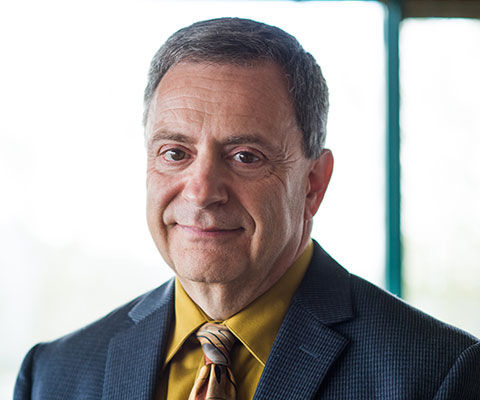
Treating inoperable brain tumours with lasers
Dr. Mark G. Torchia and Richard Tyc are the creators of the NeuroBlate System, a medical device that combines a novel laser probe system with real-time image guidance. Using magnetic resonance imaging and sophisticated software, the tool allows neurosurgeons in Canada and abroad to treat brain tumours and other intracranial targets in a minimally invasive way that also reduces post-operative care and health costs.
For more information: University of Manitoba
*Mark Torchia is a 2016 winner of the Governor General’s Innovation Awards.
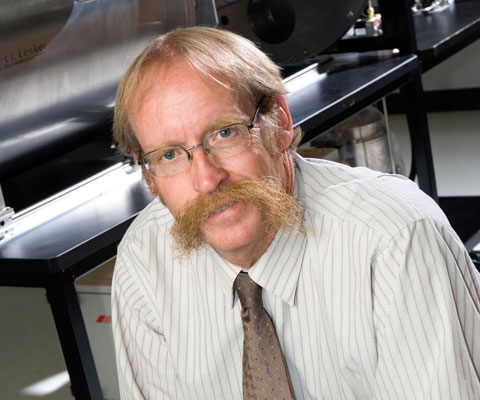
Revolutionizing wound care with nanotechnology
Dr. Robert E. Burrell’s Acticoat is the first burn dressing to simultaneously kill bacteria and decrease inflammation. This revolutionized approach to wound care increases healing rates, reduces the need for skin grafts and cuts down on long-term scar management issues. With his innovation, Dr. Burrell has saved thousands of lives and limbs around the world.
For more information: University of Alberta
*Robert Burrell is a 2016 winner of the Governor General’s Innovation Awards.

Pioneering wearable technology to reduce health care costs
Dr. Breanne Everett, University of Calgary alumna, co-founded Orpyx Medical Technologies to develop her idea for shoe insoles that prompts patients with diabetic foot conditions to move their feet to improve blood flow. This unique, wearable technology has improved users’ quality of life and reduced health care costs by decreasing the risks of sores, infection and amputation caused by diabetes-related nerve damage and poor circulation.
For more information: Dr. Breanne Everett
*Breanne Everett is a 2016 winner of the Governor General’s Innovation Awards.
Building better batteries to power cars of the future
Dr. Jeff Dahn and his dedicated team of researchers have pioneered the method of high-precision coulometry to rank the life span of Li-ion cells in a few weeks of testing. Not only has this development allowed researchers worldwide to speed up the R&D process and create a better and longer-lasting Li-ion cell, but it will also contribute to the switch of our energy sources from fossil fuels to renewable resources.
For more information: Dalhousie University
*Jeff Dahn is a 2016 winner of the Governor General’s Innovation Awards.
Creating new polymers for tissue regeneration
A professor of chemistry and biomaterials and biomedical engineering, Dr. Molly Shoichet was named North American winner of the L’Oréal-UNESCO Women in Science award for the development of new materials to regenerate damaged nerve tissue and for a new method that can deliver drugs directly to the spinal cord and brain.
An expert in the study of polymers for drug delivery and regeneration, Dr. Shoichet has been tackling the problem of the blood-brain barrier, a tightly interwoven network of cells that protects the central nervous system from toxins but can block helpful medications. Her novel solution is to deliver drugs in a gel-like polymer that can be injected directly into the cerebrospinal fluid and then remain near its injection point where the therapy is most effective. The team she leads has also created a polymer for the targeted delivery of drugs and antibodies in breast cancer.
Holder of a bachelor of science from the Massachusetts Institute of Technology and a PhD from the University of Massachusetts, Dr. Soichet is a Tier 1 Canada Research Chair in Tissue Engineering and a university professor of chemical engineering and applied chemistry, chemistry and biomaterials and biomedical engineering at the University of Toronto. The recipient of many prestigious distinctions, she is the only person to be a fellow of Canada’s three national academies.
Learn more about the L’Oréal-UNESCO Women in Science award
* Molly Shoichet is one of 24 Canadian winners of major international research awards in 2015 featured in the publication Canadian excellence, Global recognition: Celebrating recent Canadian winners of major international research awards.
Measuring how human activity affects the Earth’s crust
University of Ottawa professor and geophysicist Dr. Pascal Audet was selected as a Sloan Research Fellow for pioneering a technique to measure how human activity affects the Earth’s crust.
An expert in earthquake seismology, Dr. Audet uses GPS data coupled with gravity variations obtained from the Gravity Recovery and Climate Experiment satellite to determine the extent to which large-scale human activity affects the deformation of the earth’s crust and to evaluate its impact on natural hazards.
Recently, his technique played an important role in an international study published in the journal Nature that showed the direct link between human-induced groundwater depletion and the uplift of California’s Sierra Nevada and Coast Ranges. This may increase the number of small earthquakes in the adjacent San Andreas Fault.
The fellowship will allow Dr. Audet to study the impacts of the oilsands in Western Canada.
Learn more about the Sloan Research Fellowships
*Pascal Audet is one of 24 Canadian winners of major international research awards in 2015 featured in the publication Canadian excellence, Global recognition: Celebrating recent Canadian winners of major international research awards.
Pursue research in physical oceanography
An assistant professor in physical oceanography, Dr. Stephanie Waterman has been awarded a Sloan Research Fellowship to pursue her research in physical oceanography.
In the department of earth, ocean and atmospheric sciences at the University of British Columbia, Dr. Waterman combines observational and theoretical oceanography to better understand how different components of ocean circulation, operating at different time and length scales, interact. She has been involved in a number of international observational campaigns in the North Atlantic, North Pacific and Southern Oceans.
Her Arctic research is organized in conjunction with the Canadian Arctic GEOTRACES program, an initiative to better understand biogeochemical processes in the ocean and improve projections of the ocean’s response to global change.
A graduate of Queen’s University, Dr. Waterman completed a PhD in physical oceanography at the Massachusetts Institute of Technology and Woods Hole Oceanographic Institution. She was a research fellow at the United Kingdom’s National Oceanography Centre, the Grantham Institute for Climate Change at Imperial College, London and the Climate Change Research Centre and Australian Research Council Centre of Excellence for Climate System Science before joining the University of British Columbia in 2014.
Learn more about the Sloan Research Fellowship
*Stephanie Waterman is one of 24 Canadian winners of major international research awards in 2015 featured in the publication Canadian excellence, Global recognition: Celebrating recent Canadian winners of major international research awards.
Original contributions to number theory
Dr. Jacob Tsimerman has been awarded a Sloan Research Fellowship in Mathematics in recognition of his original contributions to number theory. An assistant professor in the University of Toronto’s department of mathematics, he also won the 2015 SASTRA Ramanujan Prize for young mathematicians.
Dr. Tsimerman works at estimating how many solutions there are to a system of polynomial equations using integers — whole numbers that do not have a fractional or decimal component. His work is rooted in the fundamental concepts of number theory and algebraic geometry. “He is one of the few mathematicians to have complete mastery over these two very different areas of mathematics,” notes the prize citation. “This has enabled him to achieve significant progress on a number of fundamental problems lying at the interface of the two subjects.”
Dr. Tsimerman holds a bachelor of arts from the University of Toronto and completed his PhD at Princeton University. Following post-doctoral work position at Harvard University, he joined the University of Toronto faculty in 2014.
Learn more about the Sloan Research Fellowships
Learn more about the SASTRA Ramanujan Prize
* Jacob Tsimerman is one of 24 Canadian winners of major international research awards in 2015 featured in the publication Canadian excellence, Global recognition: Celebrating recent Canadian winners of major international research awards.
Understanding how the brain is wired
Dr. Julie Lefebvre, scientist in the Neurosciences and Mental Health Program at The Hospital for Sick Children, was awarded a 2015 Sloan Research Fellowship in Neuroscience for her work to understand the fundamental mechanisms of how the brain is wired.
Dr. Lefebvre’s research involves studying the roles of genes in the complex formation of neural circuits. “I hope to bridge my work to advance our understanding of how genetic alterations affect brain development and other brain disorders,” says Dr. Lefebvre.
She aims to identify how nerve cells form specific patterns of neural connections that are essential for proper development and functioning of the nervous system. Her research will provide insights into how neural circuits assemble in a healthy brain, and how defects in these developmental pathways contribute to abnormal brain function and neurodevelopmental disorders.
Dr. Lefebvre received her bachelor of science from McGill University and earned her PhD at the University of Pennsylvania for research on neuromuscular development. She completed postdoctoral work at Harvard University, investigating molecular mechanisms of neuronal morphogenesis and circuit formation in the retina. She joined The Hospital for Sick Children in December 2013.
Learn more about the Sloan Research Fellowships
* Julie Lefebvre is one of 24 Canadian winners of major international research awards in 2015 featured in the publication Canadian excellence, Global recognition: Celebrating recent Canadian winners of major international research awards.
Improving our understanding of the immune system
A postdoctoral fellow in cell biology at The Hospital for Sick Children Research Institute, Dr. Vanessa D’Costa was awarded a L’Oréal-UNESCO Women in Science Rising Talent grant for her research into mechanisms that allow salmonella bacteria to escape the immune system.
Salmonella is one of the leading causes of food-borne gastroenteritis worldwide. Severe cases of salmonellosis can cause death and contribute to the development of reactive arthritis, an autoimmune disorder. Recent years have seen an increase in infections by drug-resistant salmonella.
Salmonella bacteria cause infection by evading the immune system with the help of toxin-like proteins called effectors, whose function is not fully understood by scientists. Dr. D’Costa’s research aims to determine how these effectors manipulate host cells and enable the pathogen to bypass the body’s disease-fighting systems. Her findings will provide insight into the functioning of other drug-resistant bacteria and, more generally, our understanding of the immune system.
Dr. D’Costa was earlier awarded a Frederick Banting and Charles Best Canada Graduate Scholarship from the Canadian Institutes of Health Research while completing her PhD at McMaster University and a Banting Postdoctoral Research Fellowship at the University of Toronto.
Learn more about the L’Oréal-UNESCO Women in Science International Rising Talent grant
* Vanessa D’Costa is one of 24 Canadian winners of major international research awards in 2015 featured in the publication Canadian excellence, Global recognition: Celebrating recent Canadian winners of major international research awards.
Unravelling the mysteries of the universe
Nobel laureate Dr. Arthur McDonald, professor emeritus at Queen’s University, and the Sudbury Neutrino Observatory (SNO) received the 2016 Breakthrough Prize in Fundamental Physics “for the fundamental discovery and exploration of neutrino oscillations, revealing a new frontier beyond, and possibly far beyond, the standard model of particle physics.” The award was one of five given to experiments investigating neutrino oscillation.
In recognition for his research into neutrinos, Dr. McDonald was awarded the 2015 Nobel Prize in physics alongside the University of Tokyo’s Dr. Takaaki Kajita.
Dr. McDonald is the director of the SNO Collaboration that began researching the mysteries of neutrinos at the Sudbury site in 1984. The cavern that housed SNO has since expanded and morphed into a multipurpose underground physics facility called SNOLAB.
Sometimes called “ghost particles,” neutrinos are fundamental to the make-up of the universe, but relatively little has been known about them. Dr. McDonald’s team discovered the transformation of electron-type neutrinos to other types en route from the core of the sun to the Earth — a finding that expands our understanding of the sun and exhibits neutrino properties that go beyond the predictions of the Standard Model of Elementary Particles.
Dr. McDonald earned his PhD in 1969 from the California Institute of Technology and began his career at Queen’s University in 1989. He has been a professor emeritus since 2013, and holds the university’s Gordon and Patricia Gray Chair in Particle Astrophysics.
Learn more about the Breakthrough Prize in Fundamental Physics
Learn more about the Nobel Prize in Physics
*Arthur B. McDonald is one of 12 Canadian winners of major international research awards in 2016 featured in the publication Canadian excellence, Global recognition: Celebrating Canada’s 2016 winners of major international research awards.
Demonstrating exceptional creative ability in the arts
An adjunct professor of English and former Barker Fairley Distinguished Visitor in Canadian Studies at University College, University of Toronto, Anne Michaels was awarded a Guggenheim Fellowship in Creative Arts for fiction. The author of five acclaimed poetry collections and two novels was also named poet laureate of Toronto in 2015.
Professor Michaels is an alumna of the University of Toronto where she later founded the long-distance creative writing program at the School of Continuing Studies. Her first book, The Weight of Oranges (1986), a volume of poetry, was awarded the Commonwealth Prize. She received the National Magazine Award, the Canadian Authors Association Award for Poetry and a nomination for the Governor General’s Award for her second collection, Miner’s Pond (1991).
Professor Michaels has written two novels. Fugitive Pieces was awarded the Books in Canada First Novel Award, the Trillium Book Award, Orange Prize for Fiction, the Guardian Fiction Prize and America’s Lannan Literary Award for Fiction. It was adapted into a feature film in 2007..
Her second novel, The Winter Vault, was a finalist for the Scotiabank Giller prize, the Commonwealth Writer’s Prize for Best Book and the Trillium Book Award.
Learn more about the Guggenheim Fellowship
* Anne Michaels is one of 24 Canadian winners of major international research awards in 2015 featured in the publication Canadian excellence, Global recognition: Celebrating recent Canadian winners of major international research awards
Tackling the toughest problems of quantum field theory
Perimeter Institute faculty member and adjunct professor at the University of Waterloo, theoretical physicist Dr. Pedro Vieira has earned a 2015 Sloan Research Fellowship for his explorations into the foundations of quantum field theory. He also won the prestigious Gribov Medal given by the Physical European Society to a young researcher in the theoretical physics fields of particles or quantum field theory.
At Perimeter, Dr. Vieira tackles the toughest and most long-standing problems of quantum field theory. He uses a mathematical technique called holography to translate questions about four-dimensional field theories into questions about two-dimensional string theories. That makes it possible for him to look at the questions through the use of integrability, a powerful mathematical technique for exactly solving two-dimensional theories. Holography then relates the solution in two dimensions back to a solution in four dimensions.
A graduate of the Universidade de Porto, Portugal, Dr. Vieira earned his master’s and PhD at the École Normale Supérieure in Paris, France. He joined the Perimeter Institute in 2009.
Learn more about the Sloan Research Fellowships
* Pedro Vieira is one of 24 Canadian winners of major international research awards in 2015 featured in the publication Canadian excellence, Global recognition: Celebrating recent Canadian winners of major international research awards.
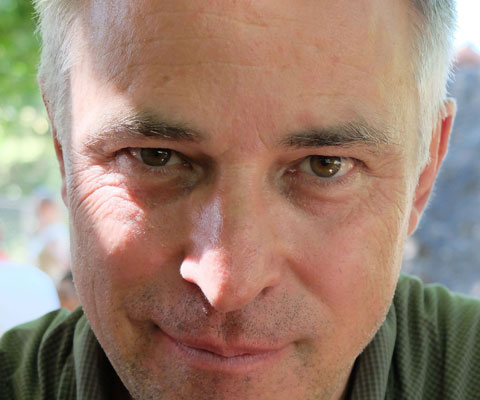
Unraveling a key evolutionary riddle
Professor in the departments of zoology and mathematics at the University of British Columbia, Dr. Michael Doebeli is “one of the foremost mathematical evolutionary biologists in the world and the main authority for theory on the evolution of organismal diversity,” says a statement issued by the John Simon Guggenheim Memorial Foundation. The foundation awarded Dr. Doebeli a fellowship in natural sciences in recognition of his research, which has led to a major change in how scientists understand the origin of new species.
The mathematical model Dr. Doebeli developed seeks to unravel a key evolutionary riddle: what factors underlie the generation of biological diversity both within and between species. His work has shown that new species can form in the absence of geographic separation, something once viewed as theoretically impossible. Dr. Doebeli has also provided new perspectives that have led to a unified understanding of the evolution of cooperation in nature.
Dr. Doebeli completed a PhD in pure mathematics from the University of Basel, Switzerland. He received the 2014 Research Award of the Canadian Applied and Industrial Mathematics Society, among other prestigious awards, and is a fellow of the Royal Society of Canada.
Learn more about the Guggenheim Fellowship
* Michael Doebeli is one of 24 Canadian winners of major international research awards in 2015 featured in the publication Canadian excellence, Global recognition: Celebrating recent Canadian winners of major international research awards.
Examining the history of Bolshevik eugenics
A historian of Russian medicine and life sciences, Dr. Nikolai Krementsov was awarded a Guggenheim Fellowship to carry out research on the interactions among science, medicine and literature in Bolshevik Russia (1917-1929). A professor in the Institute for the History and Philosophy of Science and Technology at the University of Toronto, he focuses on the history of international relations in science and medicine, especially during the interwar and Cold War periods.
Dr. Krementsov’s project is titled “I Want a Baby”: The History of Bolshevik Eugenics. In many countries, eugenics is often associated with genocidal race-purification programs. Not so during the Bolshevik Russia period, where it was based on a desire to improve the genetic fitness of the Russian people. But the movement failed to secure legislative support or spark an organized movement. After the 1917 Bolshevik revolution, however, it became an established scientific discipline, exerting influence on social policies. Eugenics was banned in the Soviet Union in 1930 under Joseph Stalin.
“My goal is to examine this history in detail in its national and international contexts. Public discourse and state policies towards science often change when a state’s leadership changes, so drawing lessons from the Bolshevik Russia period may offer insights into the relationships between science and society that many nations grapple with today,” says Dr. Krementsov.
Learn more about the Guggenheim Fellowship
* Nikolai Krementsov is one of 24 Canadian winners of major international research awards in 2015 featured in the publication Canadian excellence, Global recognition: Celebrating recent Canadian winners of major international research awards.
Outstanding research and teaching career in English literature
A professor and Chancellor Jackman Professor of English at the University of Toronto, Dr. Thomas Keymer was awarded a 2015 Guggenheim Fellowship in Humanities in recognition of his outstanding research and teaching career in English literature. The award will enable him to complete a book about the interplay between official press control and politically inflected literature between 1660 and 1820.
Titled Poetics of the Pillory: Literature and Seditious Libel, 1660-1820, the book will expand on a string of lectures he delivered at Oxford University in 2014.
Dr. Keymer’s work in libel and censorship grew out of his interest in the literature of the 17th and 18th centuries as periods of political upheaval. “Authorities at the time went to great lengths to silence writers: repressive laws, the pillory, intimidation and proxy arrests among them,” says Dr. Keymer. “Censorship energized these authors and made them more creative.”
A graduate of Cambridge University, Dr. Keymer has taught at Royal Holloway, the University of London and at St Anne’s College, Oxford. He directs the University of Toronto’s collaborative program in book history and print culture, based at Massey College, where he is a senior fellow. He is also a fellow of the Royal Society of Canada, the Royal Historical Society and the English Association.
Learn more about the Guggenheim Fellowship
* Thomas Keymer is one of 24 Canadian winners of major international research awards in 2015 featured in the publication Canadian excellence, Global recognition: Celebrating recent Canadian winners of major international research awards.
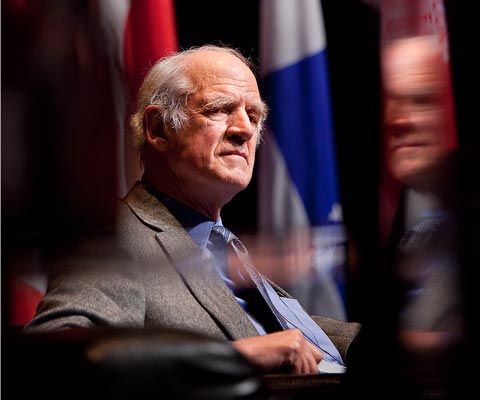
Changing the way people think about life
One of the world’s foremost philosophers, Charles Taylor was awarded the first annual award from the Berggruen Institute for changing the way people all over the world think about some of the most basic questions in human life.
Taylor’s writings have been translated into 20 languages, covering subjects that range from artificial intelligence and multiculturalism to language, social behaviour and morality. Among the most influential of his works are Explanation of Behaviour (1967), Sources of the Self (1989) and A Secular Age (2007). His most recent book is The Language Animal (2016).
A global leader in deepening understanding among different intellectual traditions, Taylor’s work resonates particularly in his native land where he has been a leading voice for the unity of Canada and the preservation of the distinctive identity of Quebec.
In 2015, Dr. Taylor shared the prestigious $1.5 million John W. Kluge Prize for Achievement in the Study of Humanity with German sociologist and philosopher Jürgen Habermas.
Dr. Taylor completed three degrees at Oxford, culminating in a PhD in philosophy in 1961. Although he has held affiliations at many major universities, his most enduring connection is with McGill, where he taught between 1961 and 1997, and where he is now professor emeritus.
Dr. Taylor’s work also earned him the prestigious Kyoto Prize and the Templeton Prize. A public intellectual, Dr. Taylor led the Bouchard-Taylor commission with sociologist Gerald Bouchard that explored the impact of religious accommodation on Quebec’s identity and values.
Learn more about the Berggruen Prize
Learn more about the John W. Kluge Prize
*Charles M. Taylor is one of 12 Canadian winners of major international research awards in 2016 featured in the publication Canadian excellence, Global recognition: Celebrating Canada’s 2016 winners of major international research awards.
Reducing the time delay when using digital devices
An assistant professor of computer science at the University of Toronto, Dr. Daniel Wigdor was awarded a Sloan Research Fellowship to further his research on human-computer interaction, specifically how to reduce the delay experienced when using smartphones and tablets.
Computing performance has improved significantly in recent decades, but the response time of touchscreens has stalled at 100 milliseconds. Dr. Wigdor wants to reduce that delay and make digital devices feel more like physical ones – like writing on real paper. “My general area of research is leveraging computing technology to enable users to live better lives,” he says.
Dr. Wigdor’s work includes the development of user interface software, interaction methods, sensor hardware, new device form factors, development platforms and operating system enhancements.
After obtaining his PhD at the University of Toronto, Dr. Wigdor worked at Microsoft Research, notably as an expert in user interfaces for new technologies. Simultaneously, he served as an affiliate assistant professor in both the department of computer science and engineering, and the Information School at the University of Washington, among other research positions. He joined the faculty at the University of Toronto in 2011. He was a recipient of an Ontario Early Researcher Award in 2014.
Learn more about the Sloan Research Fellowship
* Daniel Wigdor is one of 24 Canadian winners of major international research awards in 2015 featured in the publication Canadian excellence, Global recognition: Celebrating recent Canadian winners of major international research awards
Finding better ways for networks on computer chips to communicate
One of the top computer architecture researchers of her generation, Dr. Natalie Enright Jerger is an associate professor at the University of Toronto’s Edward S. Rogers Sr. Department of Electrical and Computer Engineering. She was awarded a Sloan Research Fellowship for her vital work in finding more efficient ways for networks on computer processor chips to communicate. As computing systems grow larger and more complex and more processor cores continue to be crammed onto on a single chip, making those processors talk to each other has become a key impediment to future progress.
Dr. Enright Jerger’s work focuses on tackling three challenges: improving communication between cores, caches and memory; streamlining caching protocols; and improving parallel programming.
Holder of a bachelor of science from Purdue University in Indiana, and a PhD in computer architecture from the University of Wisconsin-Madison, Dr. Enright Jerger joined the University of Toronto in 2009. Awarded the Ontario Ministry of Research and Innovation Early Researcher Award in 2012, she also received the 2014 Professional Engineers Ontario Engineering Medal – Young Engineer for exceptional achievements in the field.
Learn more about the Sloan Research Fellowships
* Natalie Enright-Jerger is one of 24 Canadian winners of major international research awards in 2015 featured in the publication Canadian excellence, Global recognition: Celebrating recent Canadian winners of major international research awards.
Understanding how shape affects chemistry
An assistant professor in the department of physical and environmental sciences at the University of Toronto Scarborough, Dr. Artur Izmaylov was awarded a Sloan Research Fellowship for his ground-breaking research to understand and model chemical dynamics involving multiple electronic states in molecules and materials. These processes are ubiquitous in solar energy harvesting, photoactive protein functioning — the key player in human vision — and catalytic reactions on metallic surfaces.
In its simplest terms, his work focuses on understanding how shape affects chemistry. “It has been known for some time that topology may play a role in chemical dynamics,” says Dr. Izmaylov. “However, it was not clear when exactly it becomes important and how it affects dynamics of molecular systems.”
A graduate of Moscow State University, Dr. Izmaylov holds a PhD from Rice University in Texas and was a postdoctoral fellow at Yale University. He joined the University of Toronto in 2012.
Learn more about the Sloan Research Fellowship
* Artur Izmaylov is one of 24 Canadian winners of major international research awards in 2015 featured in the publication Canadian excellence, Global recognition: Celebrating recent Canadian winners of major international research awards.
Analyzing big datasets and using math to solve medical problems
Dr. Hau-tieng Wu, assistant professor in the department of mathematics at the University of Toronto, was awarded a 2015 Sloan Research Fellowship to further his mathematical work and statistical big data analysis, as well as his research into their medical applications. Among his interests is determining how different breathing patterns affect blood pressure, heart rate and other physiological signals. He also works to assess sleep stages using modern tools such as electrocardiograms.
He focuses on analyzing massive datasets by applying proper mathematical tools and theorems.
Dr. Wu earned his medical degree at Taiwan’s National Yang-Ming University and completed his residency at the Taipei Veterans General Hospital in Taiwan. He obtained his PhD in mathematics from Princeton University where he completed postdoctoral research. He also carried out postdoctoral work in the statistics department at the University of California, Berkeley and in mathematics department at Stanford University. He joined the University of Toronto in 2014.
Learn more about the Sloan Research Fellowships
* Hau-tieng Wu is one of 24 Canadian winners of major international research awards in 2015 featured in the publication Canadian excellence, Global recognition: Celebrating recent Canadian winners of major international research awards.
Furthering research on pre-First World War Germany
A professor of history and German studies, Dr. James Retallack was awarded a Guggenheim Fellowship in Humanities and a Killam Research Fellowship in 2015. These distinctions will enable him to further research on pre-First World War Germany, a crucial moment in German and world history.
Dr. Retallack’s research into pre-First World War Germany illuminates a time when the promise of democratic reform and social justice had not yet been derailed by fascism and communism. He is now writing a biography of Ferdinand August Bebel, one of the founders of the Social Democratic Workers’ Party of Germany and leading figure of the social democratic movement. The book will offer a life-and-times account of the country’s missed opportunities to implement liberalism and democracy and steer away from Nazism.
After graduating from Trent University, Dr. Retallack was a Rhodes Scholar at Oxford University where he received a DPhil. He has held grants, fellowships and research prizes from numerous foundations and had held visiting professorships at Germany’s the Free University Berlin and the University of Göttingen and most recently was a visiting scholar at the Bergische Universität Wuppertal, also in Germany. He was inducted as a fellow of the Royal Society of Canada in 2011.
Learn more about the Guggenheim Fellowship
* James Rettalack is one of 24 Canadian winners of major international research awards in 2015 featured in the publication Canadian excellence, Global recognition: Celebrating recent Canadian winners of major international research awards.
Creating a vision of a unified mathematical world
The Ted Mossman Chair in Mathematics at the University of Toronto, Dr. James G. Arthur was awarded the prestigious 2015 Wolf Foundation Prize in Mathematics for “his monumental work on the trace formula and his fundamental contributions to the theory of automorphic representations of reductive groups.”
“Arthur’s work is a mathematical landmark that will inspire future generations of mathematicians,” the foundation says.
Dr. Arthur’s developments in automorphic forms and representation theory have opened new approaches to the challenges posed by a theoretical mathematical model developed some 30 years ago by Canadian mathematician Robert Langlands. The model, which seeks to link two branches of mathematics — analysis and algebra — has created a vision of a unified mathematical world in which independent mathematical disciplines will prove to be related. Dr. Arthur’s trace formula has become mathematicians’ most powerful tool in this quest, regarded by many as the most challenging frontier.
Dr. Arthur holds a bachelor of science and master’s of science from the University of Toronto and received his PhD from Yale University. He has been a professor at the University of Toronto since 1978. A fellow of the Royal Society, he was elected a foreign honorary member of the American Academy of Arts and Sciences in 2003. In 2012 he became a fellow of the American Mathematical Society.
Learn more about the Wolf Foundation Prize
* James G. Arthur is one of 24 Canadian winners of major international research awards in 2015 featured in the publication Canadian excellence, Global recognition: Celebrating recent Canadian winners of major international research awards.
Integrating performance, video and art installation
Multidisciplinary artist Diane Landry was awarded a Guggenheim Fellowship in Creative Arts to pursue her research and work on a project integrating performance, video and art installation.
For more than three decades, Ms. Landry has investigated the transformative properties of light, sound and motion. She creates works out of ordinary objects, gathered from everyday life, altering their meaning and value and our understanding of them. She also creates performances alongside her sculptural work.
Ms. Landry has been artist in residence in New York, Montreal, at the Banff Centre, in Buenos Aires, Marseille and Utica (New York). Her work has been exposed in Canada and the United States, as well as in Australia, China and Europe. It was recently featured in the internationally touring exhibition, Oh Canada, organized by the Massachusetts Museum of Contemporary Art.
A fine arts graduate of Laval University and Stanford University, Ms. Landry has also received the Jean-Paul Riopelle career grant from the Conseil des arts et des lettres du Québec in 2014, among other awards.
Learn more about the Guggenheim Fellowship
* Diane Landry is one of 24 Canadian winners of major international research awards in 2015 featured in the publication Canadian excellence, Global recognition: Celebrating recent Canadian winners of major international research awards.
Understanding the human mind
Hate. Violence. Love. Anger. Why do humans feel the way they do? The mind is complex, made of neurons and chemicals that give rise to thoughts, ideas, feelings emotions and sensations.
To know thy self is the foundation of understanding humanity.
The American Psychological Foundation awarded the 2015 Joseph B. Gittler Award to Dr. Henderikus Stam, professor of psychology at the University of Calgary. The annual prize honours a psychologist who has made outstanding scholarly contributions to the philosophical foundations of psychological knowledge.
Dr. Stam developed the history and theory specialty in the University of Calgary’s department of psychology. His recent research has focused on contemporary theoretical problems in psychology and the historical foundations of 20th century psychology. He is founder and current editor of Theory and Psychology, a bi-monthly journal. Dr. Stam has published widely and has edited or co-edited more than half a dozen books. He has lectured extensively on theoretical and historical issues in psychology across North America, Europe, China and Australasia.
Dr. Stam holds a bachelor of arts, master’s of arts and doctorate from Carleton University in Ottawa. A founding member and former president of the International Society for Theoretical Psychology, he is also a former president of the Society for Theoretical and Philosophical Psychology of the American Psychological Association. He was also president of the International Society for Theoretical Psychology.
Learn more about the Joseph B. Gittler Award
*Henderikus Stam is one of 24 Canadian winners of major international research awards in 2015 featured in the publication Canadian excellence, Global recognition: Celebrating recent Canadian winners of major international research awards.
Hunting down rogue genes
Dr. Terry-Lynn Young, a molecular geneticist at Memorial University, has significantly contributed to the understanding of the genetic causes of blindness, kidney disease and several neurological conditions including hearing loss.
Dr. Young and her team discovered the gene that causes sudden death in many Newfoundland families due to a form of cardiomyopathy known as ARVD5. She currently leads a national team to identify molecular markers of lethal arrhythmias (abnormal heart rhythms) and also explores their ethical, economic and social impact.
Learn more: Memorial University >
* Terry-Lynn Young was one of 14 Innovators to Know invited to Ottawa by Universities Canada on Feb. 24, 2016 to meet with high school students, science policy makers and Parliamentarians.
Creating a new superconducting material
New materials engineered by Dr. Andrea Damascelli and his research team at the University of British Columbia could be used in the future to make faster transistors, more sensitive sensors, and novel quantum devices.
Graphene is an ultra-thin and strong material made from a single layer of carbon atoms. By adding a coat of lithium, Dr. Damascelli has induced superconductivity in graphene for the first time – a step forward in the global effort for an all-graphene-based electronics.
Dr. Damascelli, director of UBC’s Quantum Matter Institute, is the lead investigator of the team that received a Canada First Research Excellence Fund in 2015, for the program Quantum Materials and Future Technologies.
Find out more: University of British Columbia >
* Andrea Damascelli was one of 14 Innovators to Know invited to Ottawa by Universities Canada on Feb. 24, 2016 to meet with high school students, science policy makers and Parliamentarians.
Putting Canada on the map for quantum materials
Text on screen: [Celebrating Canada’s Research Excellence: Putting Canada on the Map for Quantum Materials]
Andrea Damascelli: If we think of quantum materials, Canada has had a long tradition in the field. In addition to our institute, I like to mention another institute which is the University of Sherbrooke which, most recently, together with us received large funding from the federal government and that institute is focussed on quantum information. So again, two areas which are closely connected.
So what is interesting about the fact that the two universities have a leadership in the area of quantum materials and quantum information is that both universities are very strongly connected to the quantum materials program of CIFAR, the Canadian Institute for Advanced Research. It is a program which has been running for more than two decades and really has brought in international collaborators and really has put Canada on the map for the work in quantum materials. And so Canada is highly recognized for this field, quantum materials, quantum information.
Text on screen: [Universities Canada logo, The Voice of Canada’s Universities]
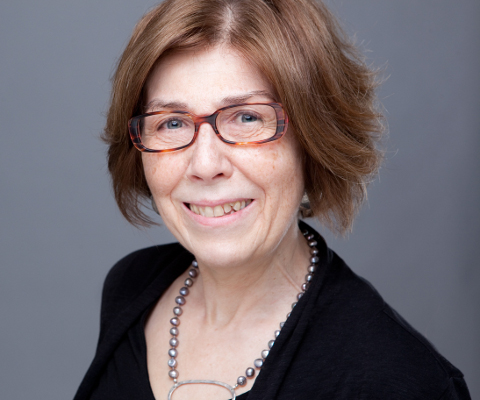
Making Montreal’s history come alive
Dr. Joanne Burgess is painting a comprehensive history of Montreal from 1820-1960, when the city was not only a social, cultural and economic hub but also the metropolis of Canada. Dr. Burgess and her team are using innovative tools such as 3D and 4D modeling and interactive geo-tracking of historical data.
Their work will benefit the collections of Montreal area museums and new digital tools and documents will be made available to local schools. Their Montréal numérique summer school program will help young researchers develop digital skills.
Dr. Burgess is a history professor at the Université du Québec à Montréal.
For more information: Université du Québec à Montréal >
* Joanne Burgess was one of 14 Innovators to Know invited to Ottawa by Universities Canada on Feb. 24, 2016 to meet with high school students, science policy makers and Parliamentarians
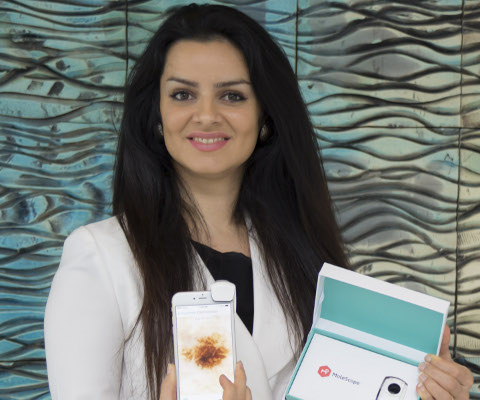
A smartphone app that helps track potentially cancerous moles
Skin cancer is common and potentially deadly with risks increasing the longer it is undetected. Dr. Maryam Sadeghi was so concerned that people can wait weeks or months to find out if suspicious moles were malignant that she created an innovative device and app called MoleScope.
Dr. Sadeghi developed the product with help from Simon Fraser University’s Venture Connection, which provides students with business mentors and entrepreneurial help. Dr. Sadeghi is scientific director of the Digital Health Hub at Simon Fraser University.
Find out more: Simon Fraser University >
* Maryam Sadeghi was one of 14 Innovators to Know invited to Ottawa by Universities Canada on Feb. 24, 2016 to meet with high school students, science policy makers and Parliamentarians.
Improving the health of Canadians through smartphone app
Text on screen: [Celebrating Canada’s Research Excellence: A Smartphone App to Improve the Health of Canadians]
Maryam Sadeghi: I learned that skin cancer is the most common cancer. I learned that 70 percent of skin cancers are found by patients themselves or their family members, and I was shocked how archaic was the system. There was nothing digital. Everything was paper-based. They placed dots on the paper for moles. I was like you should document this properly. This is easy. And as a scientist, it didn’t make sense for me not to have it.
So I decided to start building the system, the solution for them. And it’s very rewarding when you see what you’ve built is being used in cancer centres and thousands of patients and dermatologists and oncologists.
Text on screen: [Universities Canada logo, The Voice of Canada’s Universities]
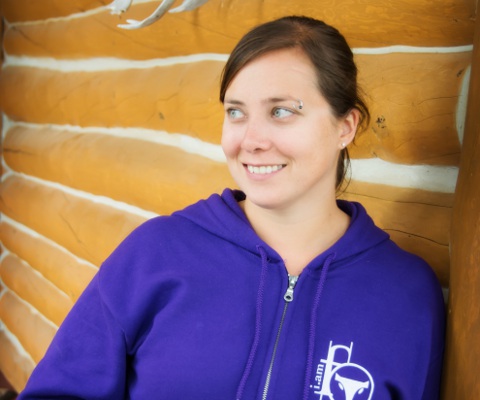
Providing innovative sexual health education to Arctic teens
An innovative arts-based program is helping combat extremely high rates of sexually transmitted infections, adolescent pregnancy, and sexual violence across Canada’s North.
FOXY, or Fostering Open eXpression among Youth, is the brainchild of Candice Lys who devised the non-profit program as a solution to the inadequate sexual education she received as a teen in the Northwest Territories. FOXY also empowers youth to develop leadership and confidence through photography, music and other traditional arts.
When she co-founded FOXY, Ms. Lys was a PhD student at the University of Toronto’s Dalla Lana School of Public Health. She is now Executive Director of FOXY.
For more information: University of Toronto >
* Candice Lys was one of 14 Innovators to Know invited to Ottawa by Universities Canada on Feb. 24, 2016 to meet with high school students, science policy makers and Parliamentarians.
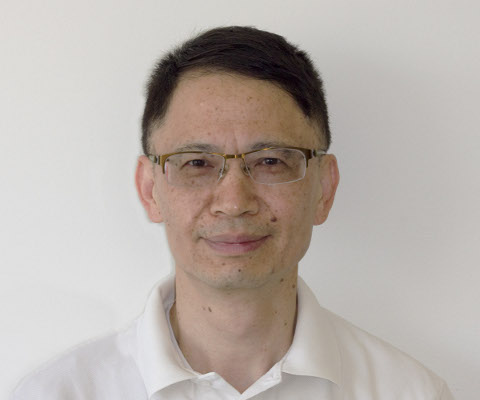
Mapping the spread of infectious diseases using math
Dr. Jianhong Wu uses math to model the spread of infectious diseases. Dr. Wu’s team at the York Institute for Health Research has tracked the population of the black-legged tick as it moves north towards Canada, thereby increasing Canadians’ risk of contracting Lyme disease.
Over the next 60 years, his team forecasts a huge growth in tick populations in the United States, Western Canada, Ontario, Quebec and the Maritimes. The knowledge of how a disease spreads helps public health officials prepare to respond.
For more information: York University >
* Jianhong Wu was one of 14 Innovators to Know invited to Ottawa by Universities Canada on Feb. 24, 2016 to meet with high school students, science policy makers and Parliamentarians.
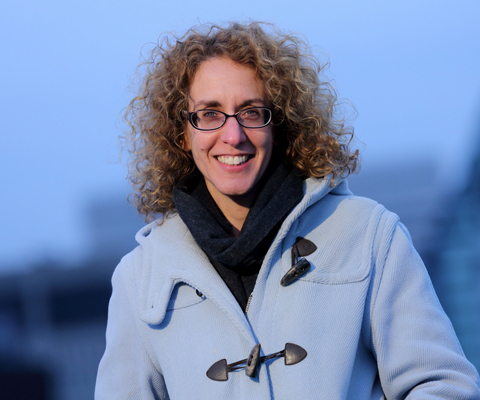
Star gazing to understand the universe better
Dr. Victoria Kaspi is a world-renowned observational astrophysicist who has made important contributions to the understanding of the universe with major discoveries throughout her career in the study of rapidly spinning compact neutron stars called pulsars.
She holds a Canada Research Chair and the Lorne Trottier Chair in Astrophysics and Cosmology at McGill University where she is also Director of the McGill Space Institute. Dr. Kaspi is the 2016 recipient of the Gerhard Herzberg Canada Gold Medal from the Natural Sciences and Engineering Research Council of Canada.
* Victoria Kaspi was one of 14 Innovators to Know invited to Ottawa by Universities Canada on Feb. 24, 2016 to meet with high school students, science policy makers and Parliamentarians.
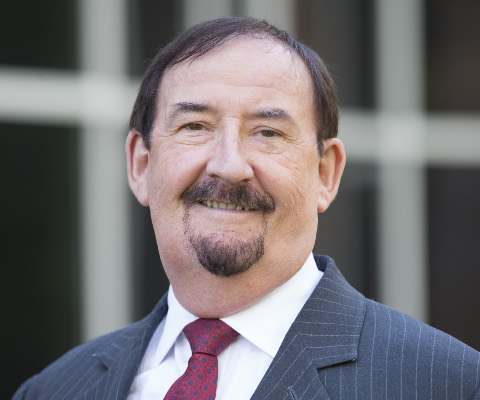
Positioning Canada as a global powerhouse in food security
With the global population estimated to reach 9.6 billion by 2050, farmers will need to increase productivity by 70 per cent to meet demand. In response, Dr. Maurice Moloney and researchers at the University of Saskatchewan’s Global Institute for Food Security will combine plant genomics with crop phenotyping (the identification of useful traits) using high-performance computing and digital imaging technology.
This computational approach to plant breeding will allow researchers to design the next generation of sustainable crops at a speed and scale previously inconceivable.
With funding from the Canada First Research Excellence Fund, the university’s Plant Phenotyping and Imaging Research Centre will become a unique global resource for plant breeders.
Find out more: University of Saskatchewan’s Global Institute for Food Security >
* Maurice Moloney was one of 14 Innovators to Know invited to Ottawa by Universities Canada on Feb. 24, 2016 to meet with high school students, science policy makers and Parliamentarians.
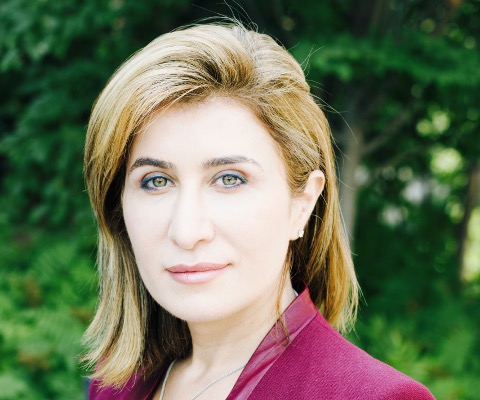
Promoting responsible citizenship among Arab-Canadian youth
Dr. Bessma Momani’s research and intervention will inform public policy about promoting responsible citizenship among Arab-Canadian youth and engaging them as citizens within a healthy multicultural society.
Dr. Momani is an associate professor of political science at the University of Waterloo and the Balsillie School of International Affairs. She is Senior Fellow at the Centre for International Governance and Innovation, a 2015 Fellow of the Pierre Elliott Trudeau Foundation, and a regular media analyst and contributor to national and international media on the Middle East and on global economic governance issues.
Find out more: University of Waterloo >
* Bessma Momani was one of 14 Innovators to Know invited to Ottawa by Universities Canada on Feb. 24, 2016 to meet with high school students, science policy makers and Parliamentarians.
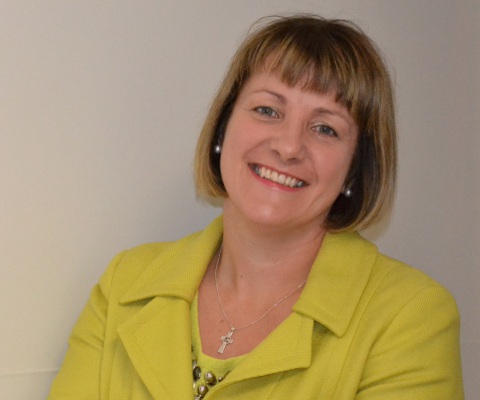
Re-inventing care for our aging population
Did you know that women who turn 50 this year will on average live to be 92? Is Canada ready for the greying Baby Boomer generation? Dr. Janice Keefe of Mount Saint Vincent University says we need to think of innovative policies to better support older persons.
From 2002-12, Dr. Keefe was the Canada Research Chair in Aging and Caregiving Policy. Her research expertise is in caregiving policy and practice, continuing care policy, rural aging and projecting future needs of Baby Boomers.
Find out more: Mount Saint Vincent University >
* Janice Keefe was one of 14 Innovators to Know invited to Ottawa by Universities Canada on Feb. 24, 2016 to meet with high school students, science policy makers and Parliamentarians.
Digital education for underprivileged children
A “hedge fund guy gone good,” Tariq Fancy left a New York investment firm to create the Rumie Initiative, a non-profit startup that brings free, high-quality digital educational materials to children in less privileged communities.
Mr. Rumie uses affordable tablets that work without internet and contain an entire curriculum of content – a library for the cost of a book. Mr. Rumie’s work is powered by volunteer educators who help organize content on its LearnCloud platform, the largest crowd-sourced repository of free learning resources.
Mr. Rumie is working on aboriginal education in Canada and has partners in 18 countries, including Uganda and India.
The Rumie Initiative was incubated at Ryerson University’s Digital Media Zone.
Find out more: Ryerson University’s DMZ >
* Tariq Fancy was one of 14 Innovators to Know invited to Ottawa by Universities Canada on Feb. 24, 2016 to meet with high school students, science policy makers and Parliamentarians
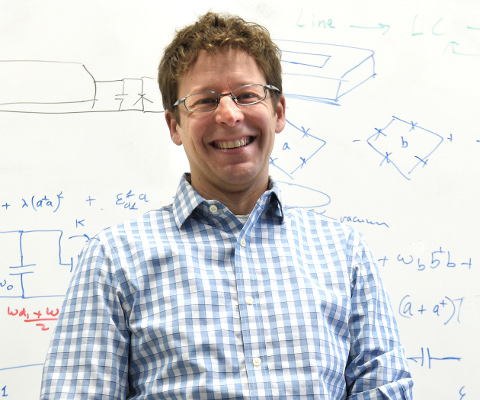
Paving the way for quantum computers
Quantum physics have given us transistors, lasers and the Internet. What’s the next big thing? Quantum computers.
Dr. Alexandre Blais and a team of physicists and engineers at the University of Sherbrooke are looking at the next generation of information technology.
Quantum computers can do extremely complex calculations very quickly, such as decoding encryption codes. Dr. Blais and his team are working with companies like Google, Microsoft and IBM to be the next industry pioneers. This important work received funding from the Canada First Research Excellence Fund.
Find out more: Université de Sherbrooke >
* Alexandre Blais was one of 14 Innovators to Know invited to Ottawa by Universities Canada on Feb. 24, 2016 to meet with high school students, science policy makers and Parliamentarians.
